Kew Gardens Visitor Information
mitakag / Getty Images
The Royal Botanic Gardens, Kew was awarded UNESCO World Heritage Site status in July 2003 due to its work on history and development of garden landscapes and its role in science and plant research.

Quick Facts
Size of the gardens.
The Gardens are 300 acres. To get an idea of walking times between landmarks see the Kew Gardens map (pdf). If you are visiting with small children be prepared to double walking times.
How Much Time?
It is suggested that most people take around three hours to explore the whole of the length of the Gardens. (It is about one mile across and takes about 40 minutes to walk across.) We usually stay the whole day and still never see everything. If you have time, spend the whole day at Kew. Don't rush it; stay longer, have lunch, and enjoy your visit.
Overhead Noise
Kew Gardens is on the Heathrow Airport flight path. Noisy planes go overhead every few minutes. Initially this is distracting but, honestly, you soon get used to it and stop noticing them.
Photographer's Paradise
Kew is a photographer's paradise. You will see lots of people with cameras ranging from the cheap disposables to amazing long lenses on professional equipment. Most people walk around holding their camera and a map so if your camera has a neck strap do use it. As with any photo opportunity make sure you have all you need for a day away from the shops: extra batteries, film (if not digital), and an empty memory card or lots of space (for digital).
Exhibitions
Kew has a history of outdoor sculpture exhibitions and some of the best have been David Nash at Kew and Moore at Kew.
Getting to Kew
Use Journey Planner to plan your route by public transport.
By London Underground
Nearest Tube Station : Kew Gardens. Take the District Line towards Richmond.
Approx. Travel Times: 15 minutes from Earl's Court and 30 minutes from Westminster on the District Line to Kew Gardens Station (Zone 3).
Top Tip: If steps are a problem for you, for example, if you are traveling with a child in a buggy, go to Richmond station (it's only one more stop) and come back on the Eastbound train to Kew Gardens. This way you can avoid the steps and bridge over the train tracks.It's a ten-minute walk from Kew Gardens Station to Kew Gardens Victoria Gate.
Train services (South West Trains) from Waterloo, via Vauxhall and Clapham Junction, stop at Kew Bridge station.
Planning Your Trip to Kew Gardens
Kew is open 363 days of the year (closed for Christmas ) so you can visit all year round. The plants vary throughout the seasons but that is what makes more than one visit so interesting. Before you visit you can get lots of useful information from the Kew Gardens website, such as the Parent's Survival Guide.
Wear a jacket that is easy to remove when inside the glasshouses as these buildings are hot and humid. Wear flat shoes as narrow heels will go through the holes in the grated floor in the Palm House.
You will be given a free Visitor's Guide when you arrive. This includes a map and information on facilities. The Visitor's Guide is updated regularly due to the seasonal changes at Kew Gardens and is usually only valid for three months as the botanical world changes so fast.
Toilets Upon Arrival at Victoria Gate
Toilets are the other side of Victoria Plaza (go through and come out the other side). There are more toilets and another baby changing station around the corner along the side of the lake (less than a minute away).
Kew Explorer Bus Tours
If you really are short of time you can see Kew in under an hour on the Kew Explorer. There is an additional charge for this hop on-hop off tour of Kew with 8 stops. Tours are daily and run every hour from Victoria Plaza. I haven't tried this tour but it looks like fun. It includes a running commentary of the sights.
Walking Tours
There are daily walking tours, usually two a day, lasting 60 minutes. You need to register at the Guide Desk just inside Victoria Plaza at least 15 minutes before the start of the tour. There are also often other seasonal tours available so check at the Guide Desk for information.
Kew Gardens Rules
- no climbing trees
- no ball games
- no bikes and scooters
- guide dogs only
Kew Gardens Opening Times
- Open Daily, Closed 24 and 25 December only.
- Closing times vary throughout the year
- Dates are approximate. Check Kew Gardens website for exact dates this year.
Fire Alarm Tip
All public indoor areas have regular fire alarm testing. Check doors to indoor areas for fire alarm testing notices.
More Tea for Your Money
A paper cup of tea in the Victoria Plaza is the same price as a pot of tea (2 cups) in the Pavilion Restaurant.
Ramp Access to Temperate House
Disabled access is available at the back of the Temperate House.
Best Picnic Spots
- Next to the River Thames , near the Badger Sett, marked as a View Point on the free map. There are bench seats available and plenty of space to laze on the grass.
- In front of Queen Charlotte's Cottage is a good quiet picnic spot, as it has even ground and some shaded areas, although the nearest toilets are about 10 minutes walk away, near the Waterlily Pond.
- Near the Waterlily Pond is another good spot with bench seating.
Kew Gardens Ticket Information
- Visit this attraction for free with a London Pass
- Buy the London Pass now (Buy Direct).
There are different Winter and Summer ticket prices. Children (under 17) go free. For the latest prices see the Kew Gardens website. You can also buy Kew Gardens tickets through Viator. Concessions are available for 60+, students 17+ in full-time education, long-term disabled, unemployed.
Kew Gardens Shopping and Eating
- Victoria Plaza Shops:
- Garden Shop - plants and objects for your garden
- Book Shop - botanical and garden-related books
- Cook Shop - exclusive sweets, teas, coffees and condiments
- Gift Shop - wide range of unique mementos
- White Peaks Children's Shop - pocket money toys, fun games and small toys
All purchases from Kew Gardens shops help to support Kew's vital science-based conservation work throughout the world.
- Victoria Terrace Café: This is right next to the Victoria Gate which is the entrance/exit you use when traveling by tube or train. It serves tea, sandwiches, cakes, and snacks and is open the longest of all the cafes. Top Tip: A paper cup of tea in the Victoria Plaza is the same price as a proper pot of tea (2 cups) in the Pavilion Restaurant.
- Pavilion Restaurant: This would be my first choice for lunch or a snack as it has a wide choice of well-priced hot and cold meals, a lovely choice of cakes, and that pot of tea. It's located near the Temperate House and the Pagoda, so in the southern part of the Gardens, and has a large outdoor seating area. This venue is most popular with regular visitors. Note there are extra toilets nearby on the edge of the Gardens).
- White Peaks Café: The menu here has improved dramatically and I've seen hot carved roast in a bap as well as children's lunch boxes.
- The Orangery Restaurant: Enjoy seasonal dishes in this elegant Grade 1 listed building, built in 1761.
Visiting Kew Gardens With Children
The best news is children under 17 go FREE to Kew Gardens! The Gardens are 300 acres. To get an idea of walking times between landmarks see the Kew Gardens map. It's suggested a five-year-old will take 15 minutes to walk from the Victoria Gate to the Xstrata Treetop Walkway.
Buggy Access
Kew's landscape has many paths and most buildings have ramped access. The only areas that are not accessible with buggies are:
- Xstrata Treetop Walkway (there's a buggy park at the bottom)
- Galleries in both the Temperate House and the Palm House
- The Waterlily House
- The Aquatic Display in the Palm House (no problem in the Princess of Wales Conservatory)
- Queen Charlotte's Cottage
Check the Kid's page of the Kew Gardens website for events and activities. Here are some tips and fun ideas:
- Climbers and Creepers: Kew's interactive play area. Amazing fun for 3- to 9-year-olds. Explore the Gardens first as once the kids get here they won't want to leave! Don't start your visit with Climbers and Creepers, though, or you'll never get to see the gardens!
- Treehouse Towers: Kew's outdoor play area, next to Climbers and Creepers.
- Aerial walkways in the Palm House and the Temperate House.
- King William's Temple (behind the Palm House). Great for echo practice!
- Evolution House: Beware of the wet floor from the noisy waterfall. This area is meant for kids so they can learn about plant evolution.
- Stag Beetle Loggery: Not much to see.
- Giant Badger Sett: You can walk through the underground tunnels.
Kew Gardens Highlights
- Xstrata Treetop Walkway: Xstrata Treetop Walkway is 18 meters high and offers the chance to explore the tree canopy and views across London.
- The Palm House: Palm House is the stunning glass house near to the Victoria Gate entrance. At one end you can see the world's oldest pot plant, a Cyrad, and at the other end look at the sealing wax plant which turns red at the top. The Palm House is very humid - look up for the high steam jets. The plants are divided into areas of the world. Beware of overhanging plants on the walkways. Use the ornate wrought iron spiral staircase up to the gallery and down to the aquatic display.
- Princess of Wales Conservatory: Opened by Princess of Wales on 28 July 1987, the design now seems rather '80s and dated. There's an aquatic display on the lower level. Buggy access via sloped walkways with wide low steps – not wheelchair-friendly. ( Top Tip: the Aquatic Display in the Palm House is better.)
- Temperate House: The world's largest surviving Victorian glass structure. It took 38 years to build. As you enter the Main Block there is a 'wow factor'. It has a stunning high ceiling and the plants are huge. It is not uncomfortably hot, like the Palm House. In the center, you can see the world's tallest indoor plant, a Chilean Wine Palm.
- Queen Charlotte's Cottage: Queen Charlotte (1744-1818) used this as her summerhouse to picnic with her family. The surrounding 37 acres were known as the 'Queen's Cottage Grounds' and was a game reserve.
- Kew Palace: Kew Palace is the smallest and most intimate of the royal palaces. There is an additional charge to visit.
- The Davies Alpine House: Bizarre glass structure, reminiscent of the new Wembley Stadium .
- Pagoda Tree: This is a bit surreal as it's grown sideways. From China, it is grown in Buddhist Temple grounds
Xstrata Treetop Walkway at Kew Gardens
The Xstrata Treetop Walkway at Kew Gardens opened in May 2008 and at 18 meters high, it offers visitors the chance to explore the tree canopy and see magnificent views across London including the London Eye , which was designed by the same architects (Marks Barfield Architects). No extra ticket is required once you have paid your entrance to Kew Gardens. (Remember, under 17s go free.)
There is no other treetop walkway that starts underground but it makes sense to learn about the roots of trees before winding your way up to the treetops. The roots are the most important part of a tree but they couldn't be exposed so you can see interesting animatronics and a wonderful bronze sculpture of tree roots. This area is open all the time and it is expected that wildlife will go in at night so all exhibits have been built to withstand the elements.
Unfortunately, the lift has never worked so you will have to climb the steps up to the 200-meter long treetop walkway. There is a classroom platform which would be a fabulous place for a lesson!
The structure is made from weathered steel and will be maintenance free for 100 years and is expected to last 500 years! The Xstrata Treetop Walkway can accommodate 3,000 visitors a day and is a major highlight when you visit.
Stay Cheaper By Staying Close to - Not in - London
Charlotte Guide: Planning Your Trip
Sightseeing on the Number 11 London Bus
London's Best Parks
How to Travel From London to Birmingham by Train, Bus, and Car
New York Botanical Garden: The Complete Guide
How to Enjoy a Quick Layover in London on a Budget
20 Best Things to Do in London When It Rains
Westminster Abbey
London's Best Afternoon Tea Venues
17 Best Romantic Things to Do in the United Kingdom
London's Best Toddler-Friendly Attractions
What to Do and See During One Week in London
A Visitor's Guide to Hampton Court Palace in London
Visitor's Guide to the Luxembourg Gardens in Paris
26 Free Things to Do in London, England with Kids

- Czech Republic
- Northern Ireland
- United Kingdom
- El Salvador
- South Africa
- Work with me
- Cookie Policy
- Privacy policy
Everything you need to know about visiting Kew Gardens in London
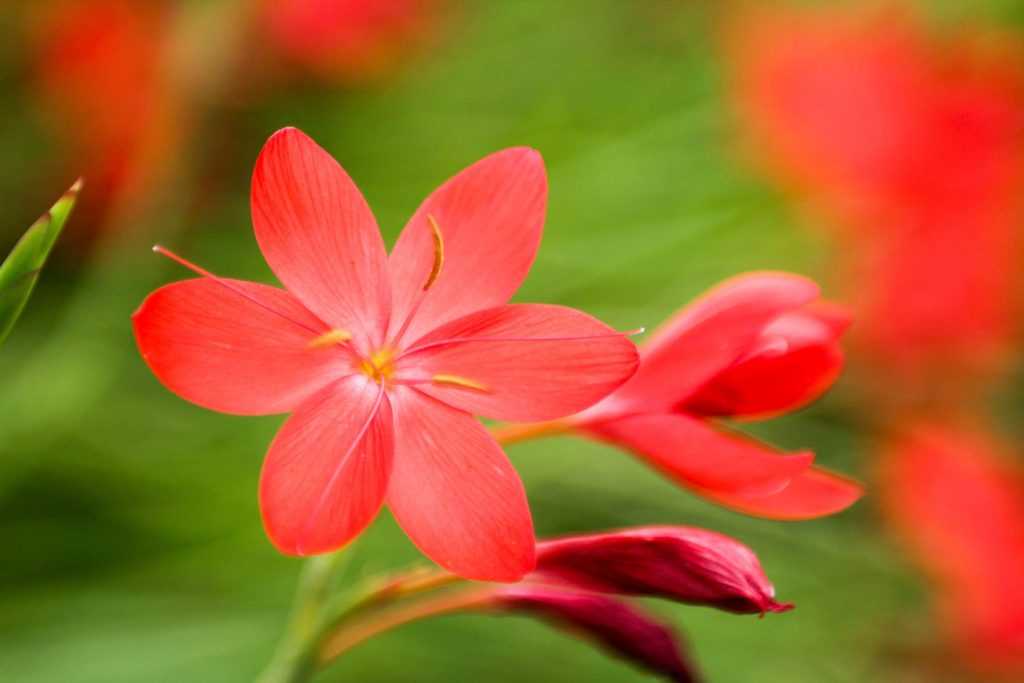
Updated: October 2019
If you are looking for a getaway from the busy London or just want to spend a day out in nature with your family, then a visit to Kew Gardens is the perfect answer. I have created for you the perfect guide with all the attractions of the Royal Botanical Gardens and everything you need to know about where to buy your ticket from and how to get there, to make your visit easier.
Where is Kew Gardens
Kew Gardens is situated in the South West of London, in the beautiful neighbourhood of Richmond upon Thames. Being the largest UNESCO world heritage site in London and more than 250 years old, Kew Gardens is the home of the Millennial Seed Bank, the biggest wild plant seed bank in the world. The Kew Estate occupies an area of 121 hectares home to over 30,000 plants. You can find here large flower and vegetables gardens, woodlands, lakes and ponds, conservatories, natural reserves and wildlife.
When is the best time to visit Kew Gardens
Kew Gardens is open every day from 10am until 6pm (from the end of March until the end of October). For the rest of the closing times (due to the shorter days), you can check the schedule here . Kew Gardens is great to visit in any season, including in winter, when they have some amazing light shows. During the year there are several exhibitions and events that transform completely Kew Gardens. You can see a list with what’s on this season here .
How long to spend at Kew Gardens? I would say a day is not enough and you would want to return if you want to see the entire Kew Gardens and palace.
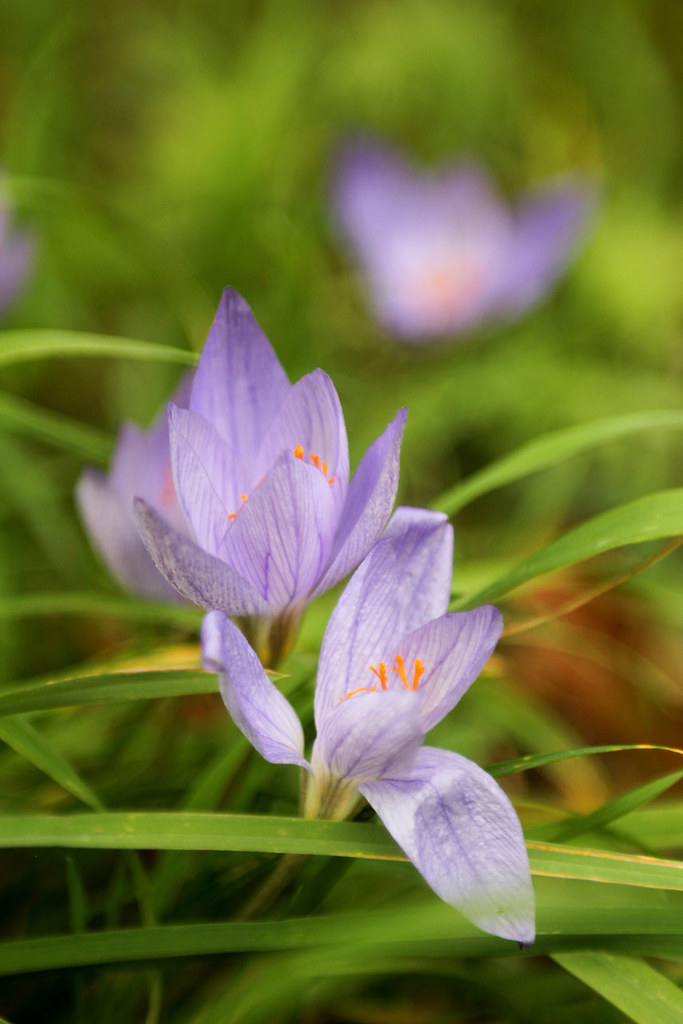
How to get to Kew Gardens
You can reach Kew Gardens very easy from central London by tube, the overground, bus or train. If you plan on traveling by tube, Kew Gardens is on the District line, in zone 3 (£3.30 one way with an Oyster or contactless card). The station is 500 meters from Victoria Gate.
If you choose to travel by train, South West Trains run services from Waterloo station via Clapham Junction and Vauxhall (£4.40 for a one-way ticket). The train station is 800 meters away from Elizabeth Gate.
Buses 65 (Ealing Broadway), 391 (Fulham), 267 (Fullwell) and 237 (White City) connect different parts of London to Kew Gardens as well.
In summer, there is a boat service that runs from Westminster Pier to Kew Pier (500 meters from Elizabeth Gate).
Parking at Kew Gardens: If you arrive by car, there is a parking at Kew Gardens, on Ferry Lane, near Brentford Gate – TW9 3AF. Parking at Kew Gardens costs £7/day for cars and it is free for mopeds and motorcycles. There are some limited free parking spaces on Kew Road after 10AM and keep in mind that restrictions do apply for most residential roads around the area. If you arrive by bicycle, there are bike racks at all four gates.
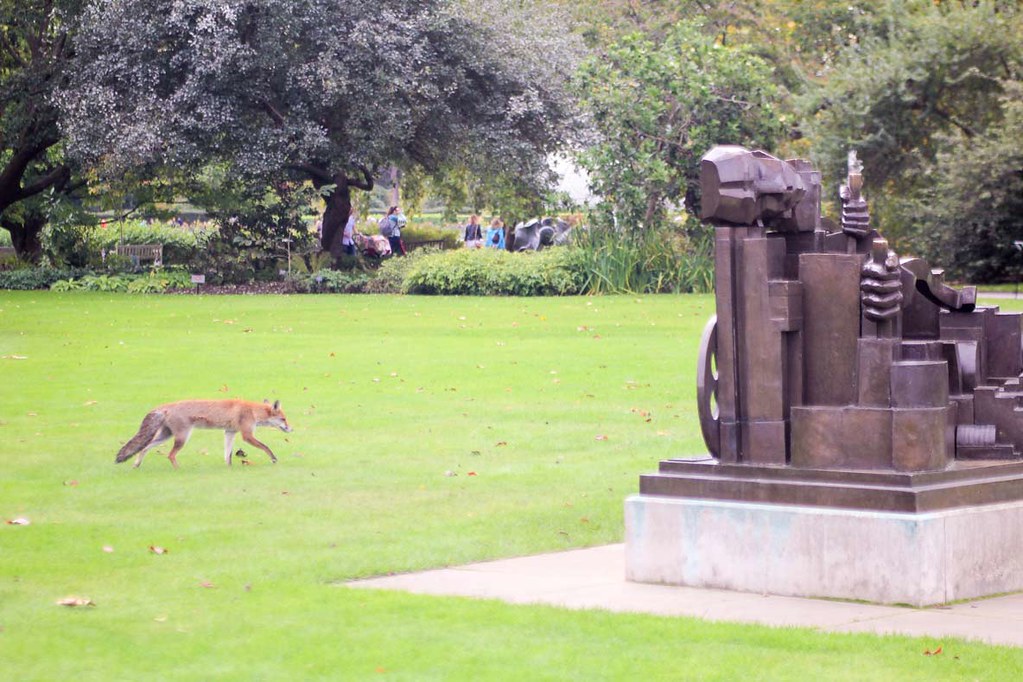
Where to buy your ticket for Kew Gardens
The Kew Gardens entrance fee is £13.50 when you buy it online, from the official Kew Gardens account from Get Your Guide . Note that you can’t buy tickets on the Kew Garden’s website directly. The cheapest place to buy your Kew Gardens and Palace ticket is online, where you can save up to 27% off the gate price. Not only that it’s cheaper but you will also skip the line at the gate, which in summer and during the weekends can get quite long. Click here to buy your ticket online.
In order to skip the queue make sure to print your ticket. For mobile tickets you will need to pass by the till, and the queue can be long during summer weekends. I know that many people are searching on Google if there is a Kew Gardens free entry and the answer in no, in order to visit Kew Gardens you do need to purchase a ticket.
How to plan your visit at Kew Gardens
Even if you are looking just to spend a day out in nature, planning is essential when visiting Kew Gardens because of the big number of attractions and the large area it occupies. You will receive a map of the gardens together with your ticket, but to make things easier, you can also download it from here .
It is hard to say how long to spend at Kew Gardens because it is such a big place. Depending on the purpose of your visit, you will find some suggested routes on the map. However, I will tell you all about the attractions at Kew and how to organise your time so that you can make the most out of your visit. I have started my visit to Kew Gardens from Victoria Gate and headed to the attractions from the East, finishing in the West hours later. I did take my time and enjoyed the strolls through the different gardens and conservatories, chased butterflies (for photos) or gazed at the carnivore plants have their hourly “shower”. I’ve even met some of the permanent residents: a courageous fox, a few curious ducks, a mamma squirrel with 2 baby squirrels behind her and a lonely peacock.
There are a few cafes and restaurants inside Kew Gardens but you are always welcomed to bring your own food if you prefer a picnic under the trees.
The Hive is probably Kew Garden’s most ambitious project, a masterpiece of scientific research resulting in an incredible visual and sound experience. Stepping inside The Hive is like experiencing the inside of a real beehive, with all the sounds and lights triggered by the actual honeybee activity inside the Kew. This makes every moment inside The Hive different.
The Hive was first built for the UK’s pavilion at the 2015 Milan Expo, by Wolfgang Buttress. It is 17 meters tall, it weighs 40 tonnes and it is built from 170,000 of aluminium parts with 1000 led lights.
Because it’s such a popular attraction, I would recommend making your way to The Hive as soon as you arrive at Kew Gardens (the earlier the better). It is a truly fascinating experience.
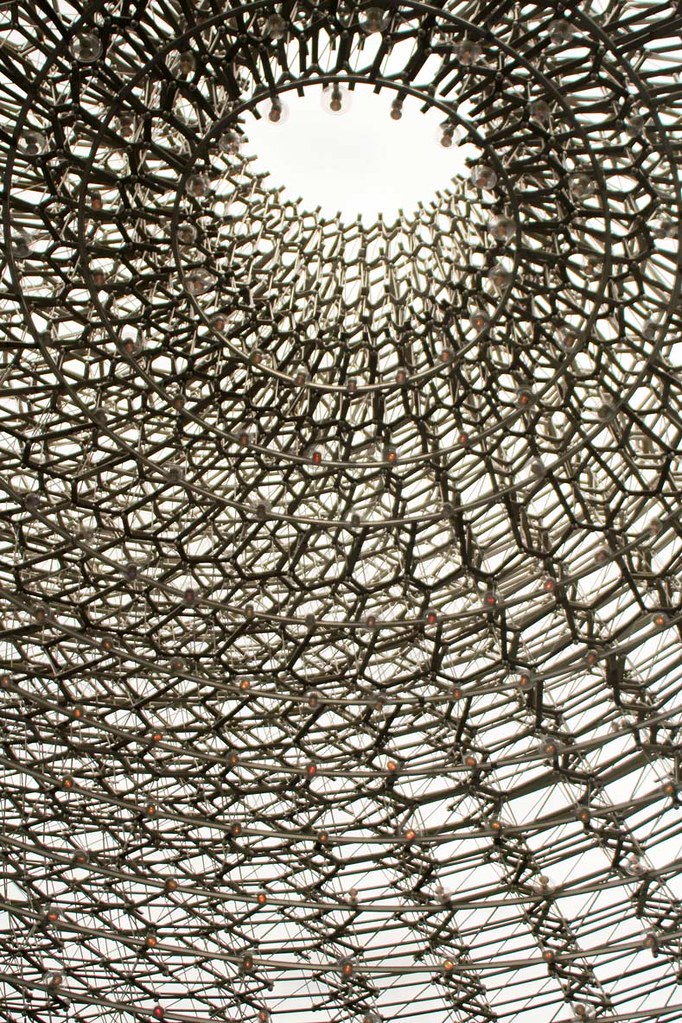
The Treetop Walkway
The Treetop Walkway is a very exciting “climb” for the entire family, especially for children. The metal structure is 18 meters above the ground, 200 meters long and sways in the wind. The views from up there are pretty awesome, over the forest canopy. Some parts of the walkway pass through the branches of the chestnut and oak trees, on which you can observe different birds and insects.

The structure of the walkway was made in such a way that the rust made it look like it blends perfectly with the environment next to it. At the bottom you will find the Rhizotron, an underground laboratory where visitors can learn about how trees grow.
There are 118 steps up to the walkway.
The Palm House
Inside the Palm House you will discover a world of rare and even extinct plants (in the wild) that are growing here due to the efforts of the Kew scientists.

You will find here trees that are at the base of many products that we consume every day: the rubber tree, the Cocoa tree, the Pepper tree (I didn’t even know that pepper grew in a tree!), the sugar cane, the African oil palm or the coffee tree.
The building itself dates from 1844 and it’s an iconic Victorian building made from glass and iron, resembling the hull of a ship. This is because the architects have used techniques from the ship building industry when they designed the glass house.
Davies Alpine House
The Alpine House is quite the masterpiece of architecture if we take in consideration that it was built in such a way that 90% of the ultraviolet light of the sun passes through to the plants, in has an automatic system of blinds that go down when the temperature is too high outside and the air is cooled down though a system of pipes underneath the building.
There are over 200 alpine plants here, which is the wild are usually growing at altitudes of 2000+ meters.
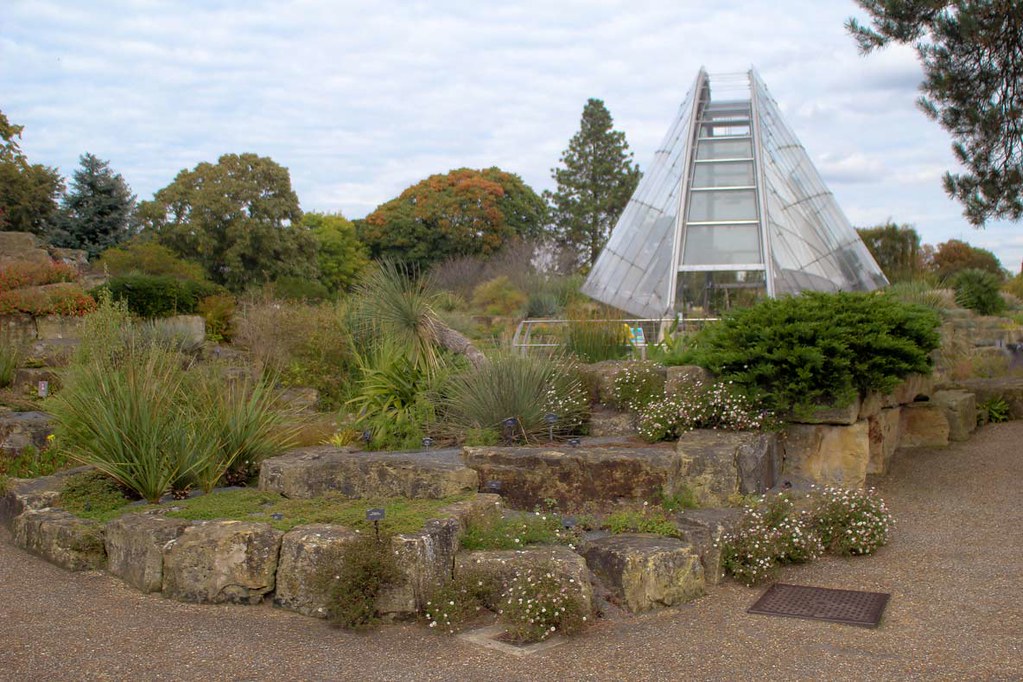
The Temperate House
The Temperate House is currently closed for restauration and it will be opened sometimes next year, after 5 years of works. Inside the Temperate House there are collections of very rare and threatened species of plants. Some of the plants you will see here have been extinct in the wild and only live at Kew. Such a plant is the Encephalartos woodii (The South African cycad).
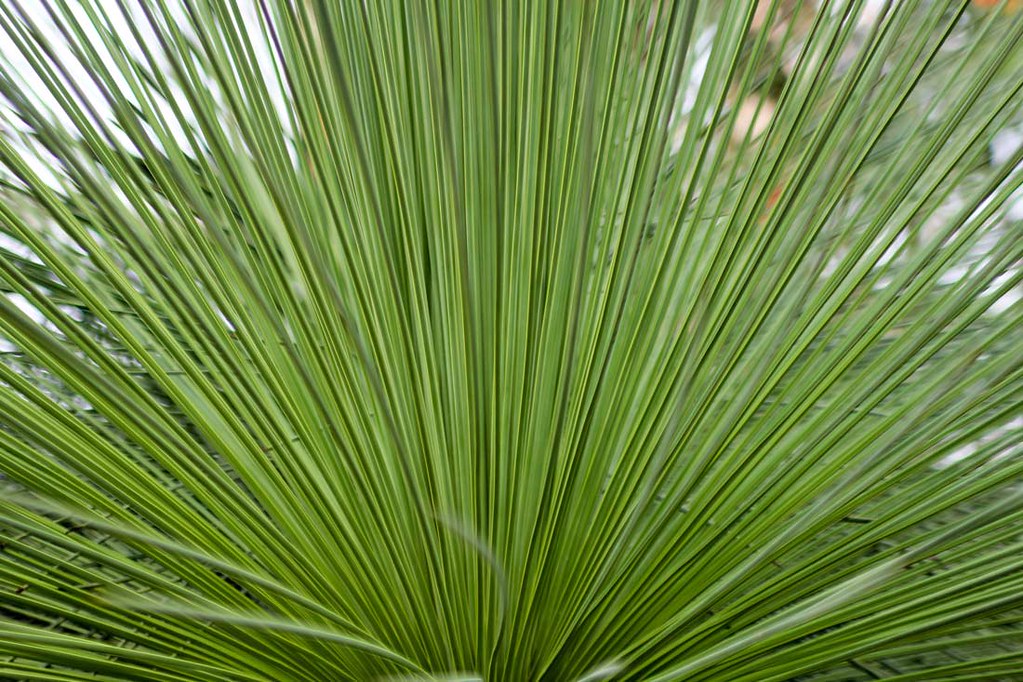
The Waterlily House
Have you ever seen a giant waterlily? Me neither, before visiting Kew Gardens. The Waterlily house is the most humid greenhouse from Kew Gardens and is the home of many heat loving plants. It was interesting to learn how the waterlilies from Amazon can grow so big that they can support a child’s weight. Of course, it is not recommended (or allowed) to let your child jump on them, but still it’s amazing how much strength these plants hold on their leaves.
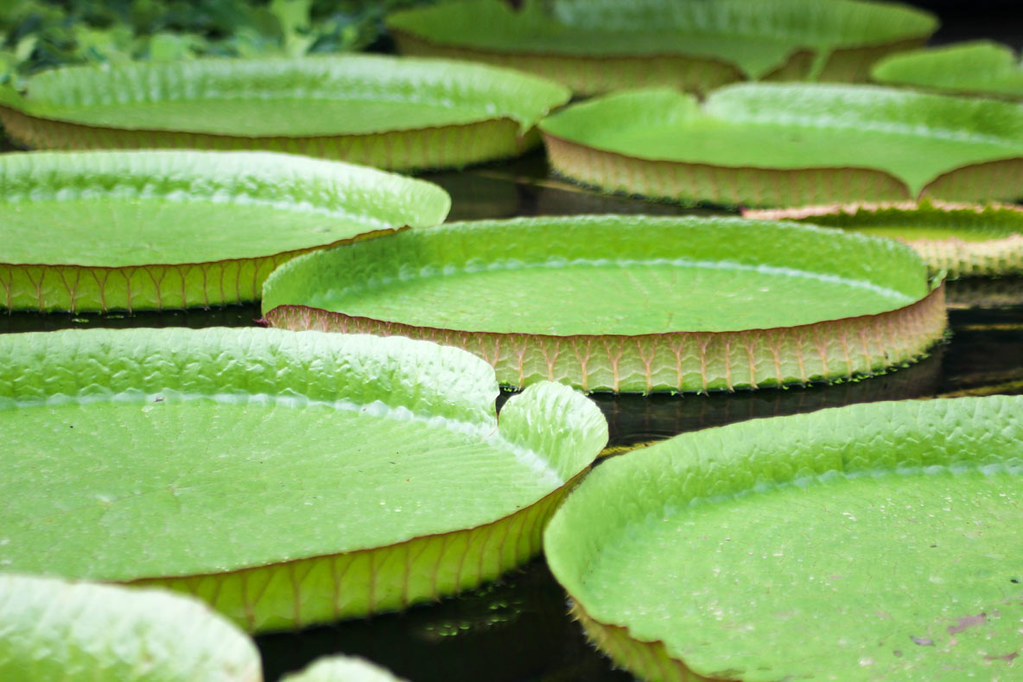
The Princess of Wales Conservatory
Stepping into the Princess of Wales Conservatory is like entering the jungle from an exotic destination, like Malaysia or Indonesia. The first thing you notice is the high humidity and the warm temperature. But no wonder, this conservatory is home to many tropical plants, cacti and orchids. You will also find here a large collection of carnivore plants, out of which I recognised the Venus Fly Trap, which I once tried to grow in my own apartment.
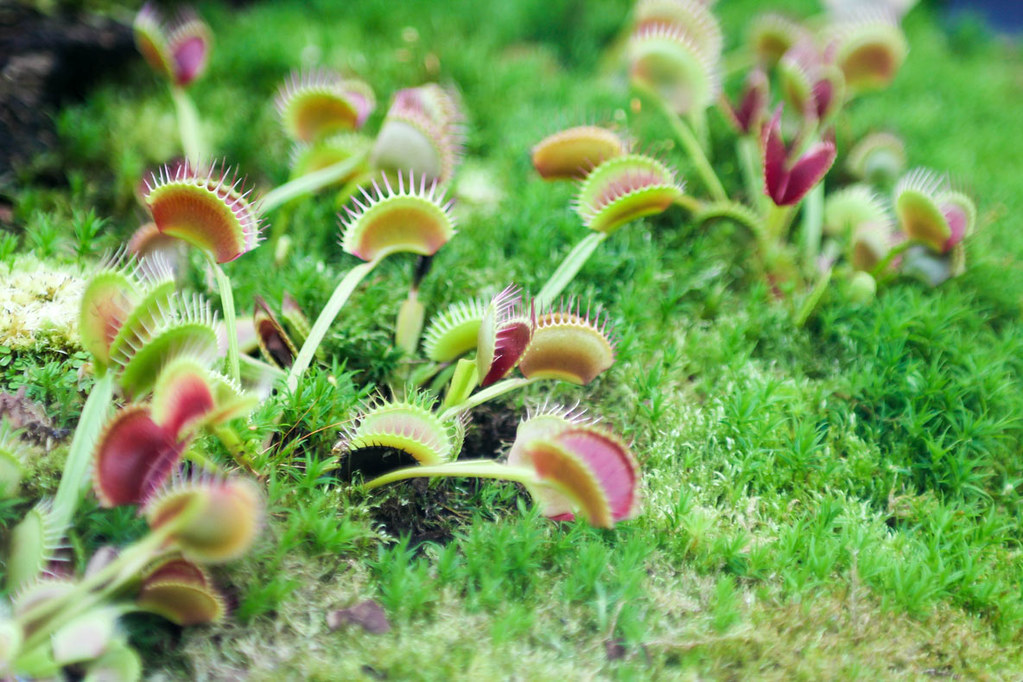
An interesting fact is that below the conservatory there is a time capsule buried by Sir David Attenborough, with seeds of basic crops, endangered plant species but also a few books on conservation. The capsule will be opened in 2085.
The Arboretum
One fantastic fact about Kew Gardens is that the trees planted here are cleaning the air in London, with over 8.6 tonnes of carbon dioxide absorbed each year. There are around 14,000 trees in the Royal Botanical Gardens, some of them as old as the garden itself, dating all the way back from the 18 th century. The trees are planted in groups according to their species (over 2,000), with some very rare and ancient ones. The tallest tree at Kew Gardens is a coastal redwood, measuring 39,3 meters high, while the oldest ones are the Japanese pagoda tree (around 250 years old), the Lucombe Oak and the black locust tree.

Strolling inside the oak forest made me feel that I was in a different place, not in London but Canada or somewhere in North America.
The Plant Family Beds and the Kitchen Garden
This was one of my favourite parts of the garden to walk in. Even if it was autumn when I visited and not many species were still blooming, I enjoyed all the colours and the pretty butterflies flying from one flower to another.
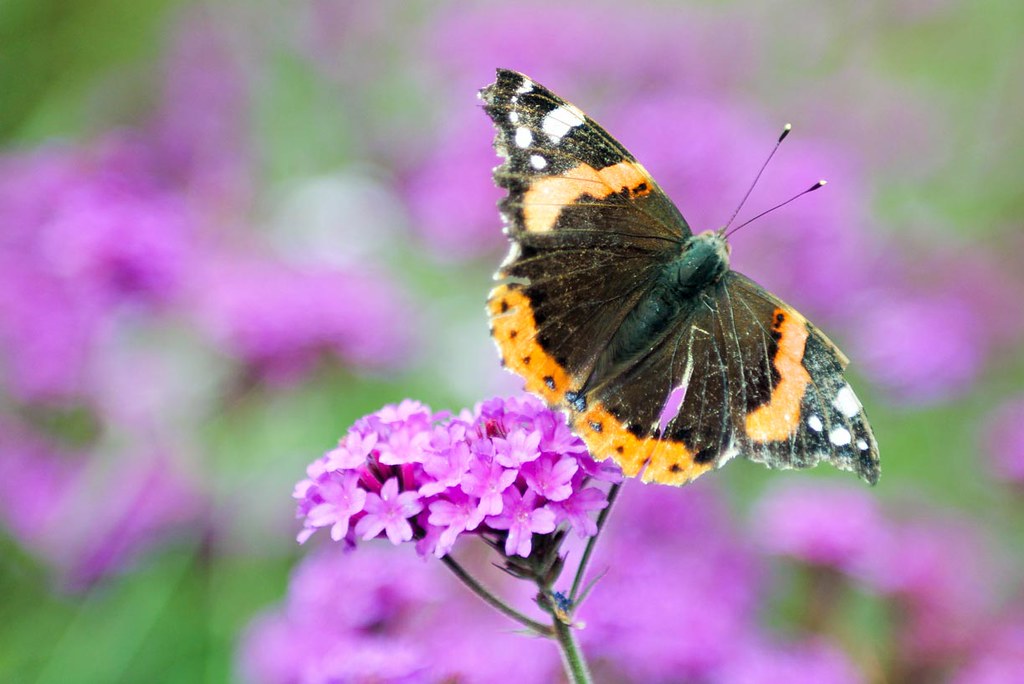
The plant family beds are found in any botanical garden in the world and represent the arrangement of plants according to their relationship with each other. The scientists at Kew have been researching about the way plants relate to each other through their DNA and molecular characteristics.
Next to the Plant Family Beds is the Kitchen Garden, an area where fruits and vegetables have been grown all the way back since 1759, for King George III. Today there are over 250 different fruits and vegetables growing in the garden. I was delighted to see apples, pumpkins, a few giant cabbages and some turnips.
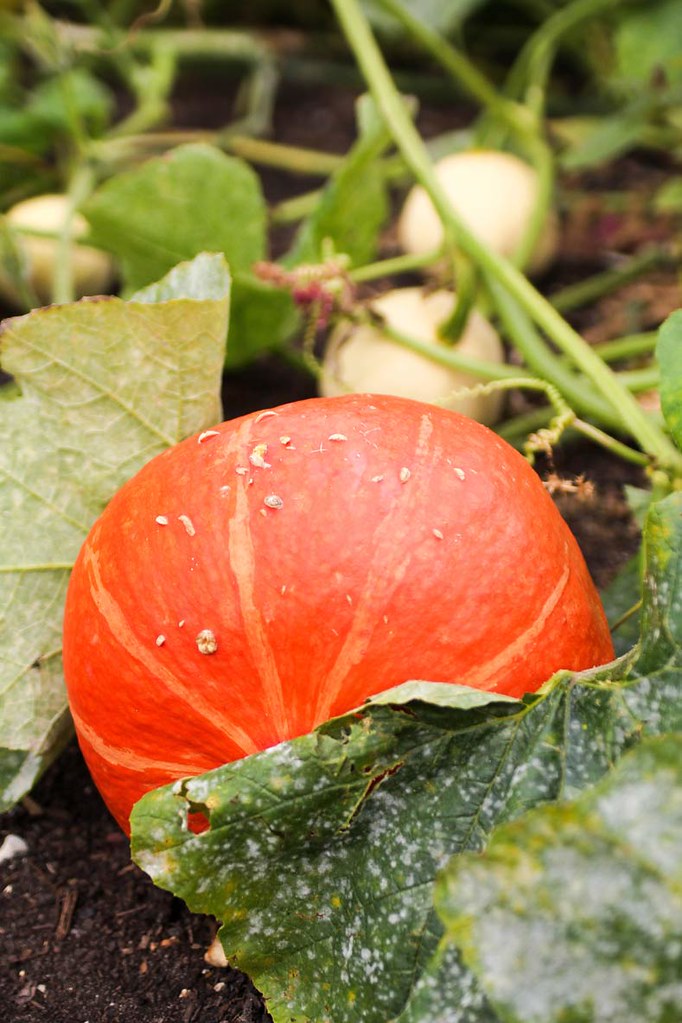
The Rock Garden
I didn’t really know what to expect from the Rock Garden until I found myself going downhill, through a path surrounded by colourful plants growing on high sandstones. The rock garden is a representation of the Pyrenean mountain habitat, a 150 meters valley with the path passing through simulating the course of a river. The rock garden is the home of over 3,000 alpine plants originally from Europe, South and North America, Asia, Africa and the Mediterranean climate, Australia and North America.

The Kew Palace and the Queen’s Garden
Kew Palace is the smallest British royal Palace and it is best known as the temporary “refuge” of King George III, the place where he was locked during his “madness” period. Beforehand however, the palace was used by the King and his family as a summer residence.

The Palace was built in 1631 but a Dutch Architect and this is why it looks like a piece of Netherlands on UK soil. If you look closely over the front door, you will notice a lover’s knot with the initials C and S on it. They stand for Samuel Fortrey, the Flemish merchant who built the palace and his wife, Catherine de Latfeur. The symbol of their love stands there even 400 years after their death!
Currently the Palace is closed for winter.
In the rear of the Kew Palace you will find a charming little garden with plants that used to grow in the 17 th century. Most of them are medicinal plants and on the label next to them you will find what they were used for and a quote from an herbal book.
Queen Charlotte’s Cottage
King George III has built this cottage for his wife, Charlotte, in the 18 th century. The cottage was used as a resting place during their walk and had a small menagerie in the back where exotic animals like kangaroos or black swans were held.
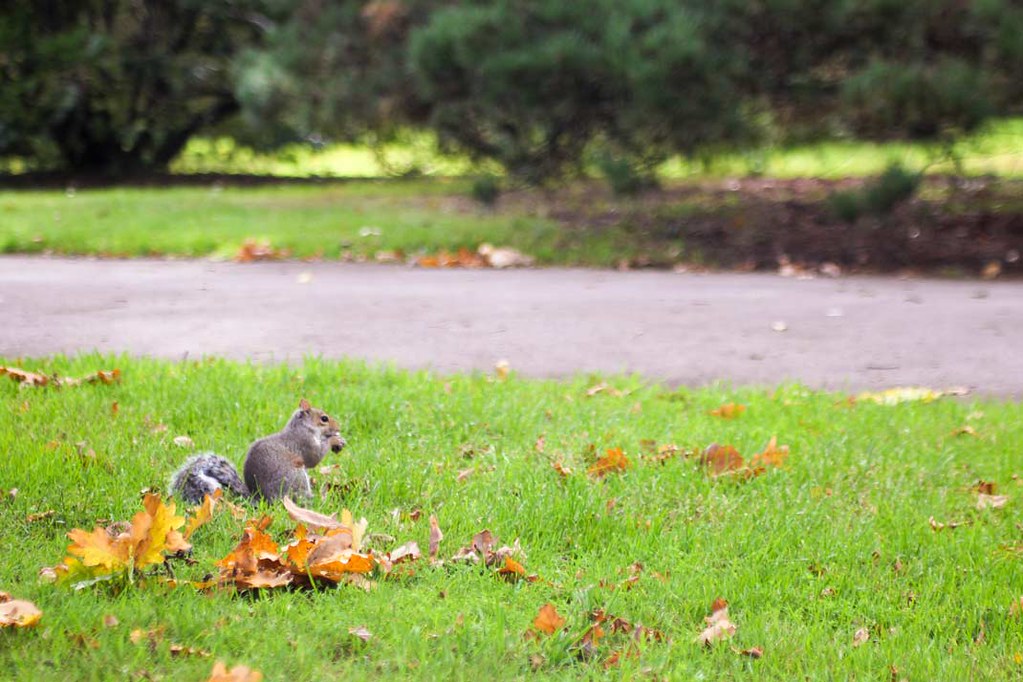
The Minka House and the Bamboo Garden
Towards the back of Kew Gardens, after walking through the beautiful quiet forests, in the middle of the bamboo garden you will find the Minka House, an original traditional Japanese farmhouse. The house dates from the early 19 th century and it was used by Yonezu family from Okazaki City, in central Japan. It was donated to Kew Gardens after the last member of the family died.
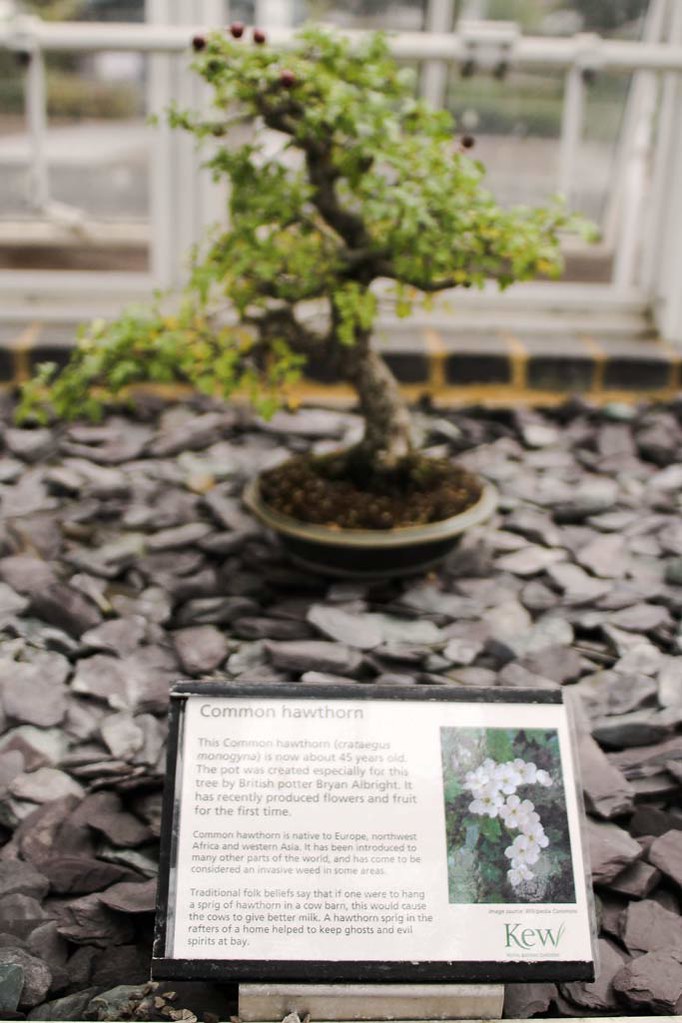
The Minka houses were used by farmers, merchants or artisans and they were built with a low roof to protect them from rain and snow but also to keep them shade from the hot summers. They were divided into 2 areas: the floor of compacted earth and a raised platform for sleeping, with a built-in hearth for cooking and heating.
The Bamboo Garden is one of the UK’s largest collection, with around 1200 species growing around the Minka House.
The Great Pagoda
Unfortunately, the Pagoda was still under renovation when I visited Kew Gardens but rumours say that it’s supposed to open again to the public next year.
The Pagoda has been built in 1762 as a copy of the Chinese Ta. Back then it was such an unusual building in Europe that people didn’t believe it would stand up for long. However, it did and now the 10-storey high tower is one of the garden’s landmarks.
The pagoda is decorated with 80 wooden dragons and covered in ceramic tiles. A local tale says that the dragons used to be made from gold but have been sold by Kind George IV to cover his debt. Historians say that this is not true, the dragons were carved in wood from the beginning but overtime, they have rotten.
The Japanese Garden
Next to the Grand Pagoda you will find the beautiful and peaceful Japanese Garden, split into three areas: The Garden of Peace, The Garden of Activity and The Garden of Harmony. All three are leading up towards the Chokushi-Mon, a four-fifths scale replica of the gate from Kyoto’s Nishi Hongan-ji temple.

The Garden of Peace is created to resemble a traditional Japanese garden, with stone lanterns and a dripping water basin. The Garden of Activity symbolises the world, with elements reminding us of the sea, the mountains and the waterfalls. Between them stands the Garden of Harmony, linking them through shrubs and tocks representing the mountains of Japan.
The Sackler Crossing
Crossing the Sackler bridge I couldn’t not notice the beautiful reflections of the autumnal colours of the trees, in the water. It looked like the two entities are blending into each other, not knowing anymore which is the lake and which is the land. This is because the trees surrounding the lake are Chinese tupelo, known for their dramatic colour change in autumn.

The Slacker Crossing is made out of black granite, with bronze posts which from a distance give the impression of a solid wall. The bridge crosses the lake in an S shape, mimicking the rounded banks of the lake.

Rhododendron Dell
If you are wondering what a rhododendron is, you are not alone. I was asking myself the same thing while looking at the map of Kew Gardens and wondering if I should make my way all the way to the other side or now. To answer the question, yes, do make your way up there because rhododendrons are beautiful woody flower shrubs which grow up high in the mountains. The most common of them is the azalea, a flower we all know.
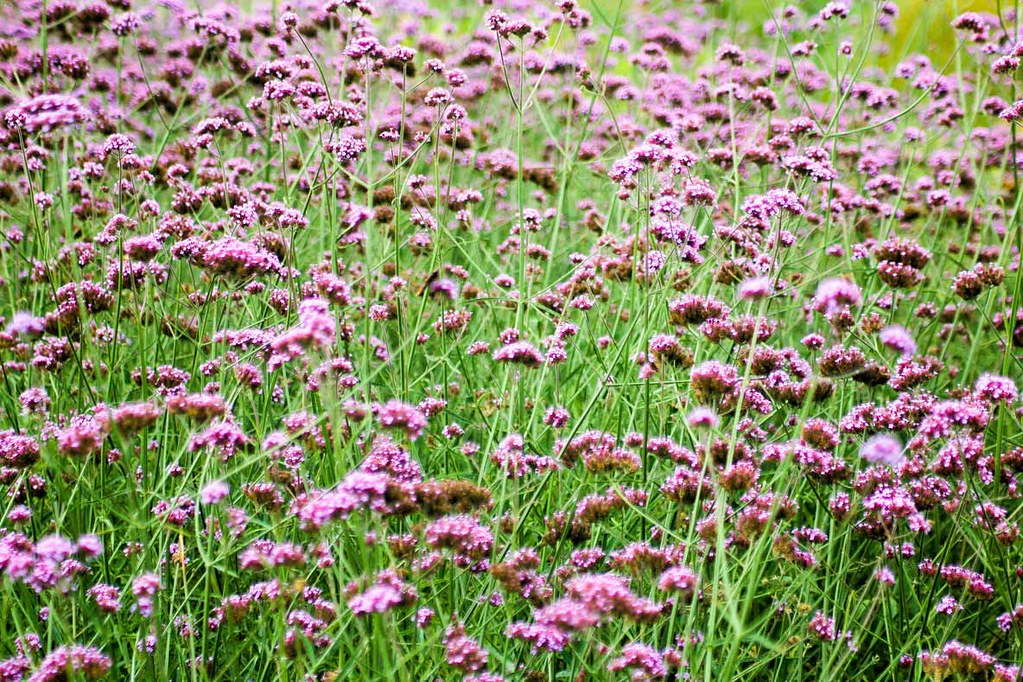
The rhododendron represents over 1000 different species of plants, out of which you can find hundreds at Kew Gardens. They are best seen in late spring, when they are all in full bloom.
The Woodland Garden and the temple of Aeolus
The original temple of Aeolus was built out of wood on an artificial mound, offering beautiful views over the gardens. However, by the middle of the 18 th century it has been rebuilt in stone because the wood had rotten. The temple was dedicated to the Greek God of Winds.
The temple is surrounded today by oaks and maple trees and led to by a path through a carpet of primulas and blue poppies.
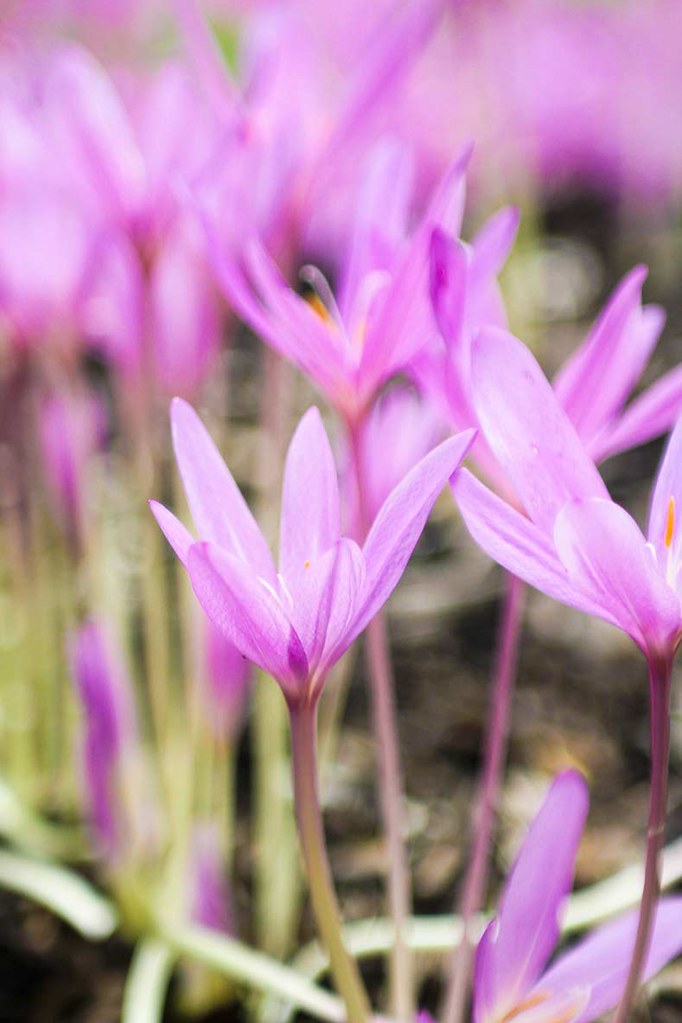
The Marianne North Gallery
This gallery is dedicated to Marianne North, the daughter of an MP who travelled alone in South America, Asia, South Africa and America to paint plants. Back in her days it was very unusual for a woman to travel alone. The gallery has 832 paintings, all belonging to Marianne North.
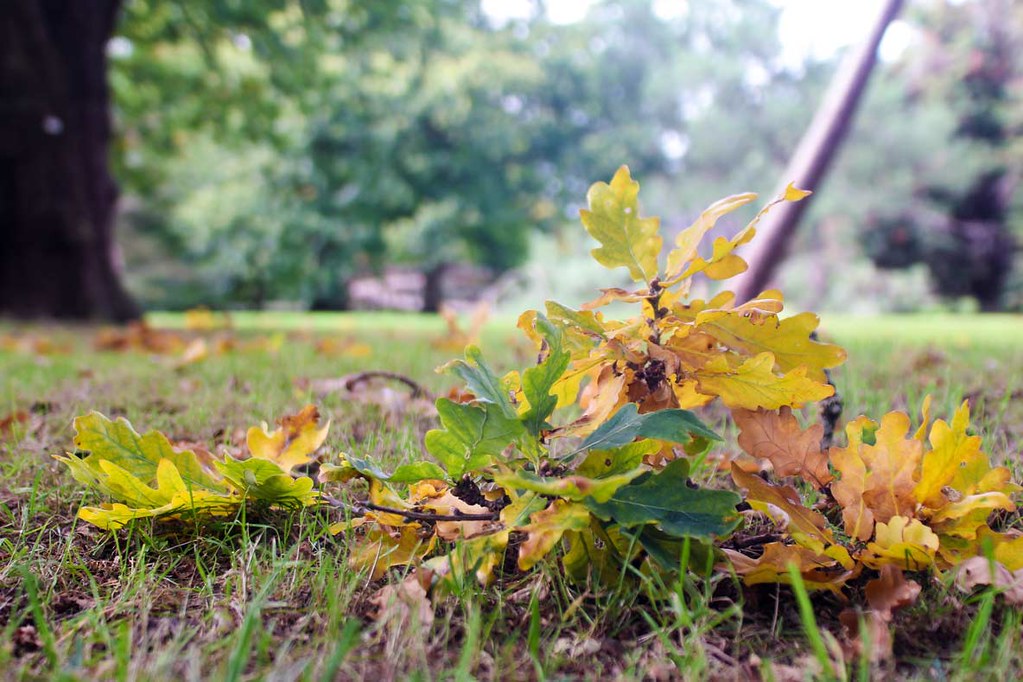
The Shirley Sherwood Gallery
Next to the Marianne North Gallery you will find the Shirley Sherwood collection of botanical art, one of the largest in the world. The oldest piece is in the museum dates from 512 and represents an illustrated copy of the Dioscorides’ de Materia Medica, a book written between 50AD and 70AD by a Greek physician from the Roman army, Pedanius Dioscorides.
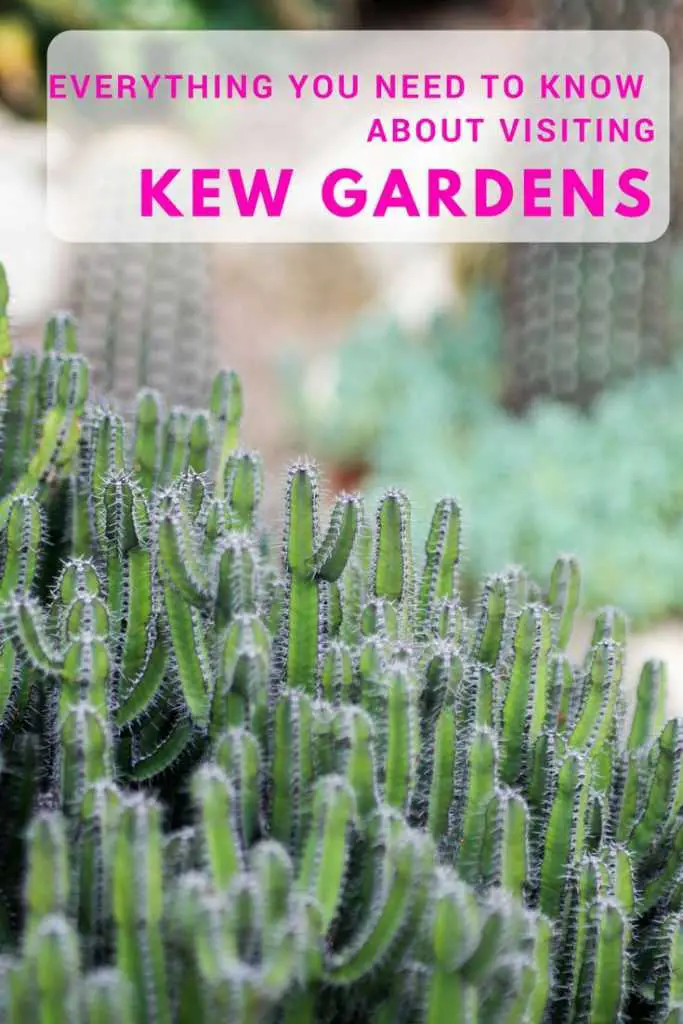
Disclaimer: This post has been written in collaboration with Attraction Tix .
Some of the links on this website are “affiliate links.” This means that if you click on the link and do a purchase, I will receive an affiliate commission at no extra cost for you. This helps me keep my website running and continue to share my traveling knowledge with you. I thank you for booking your flights or hotels using the links on my website. Regardless, I only recommend products or services I use personally and believe will add value to my readers.
Related Posts:
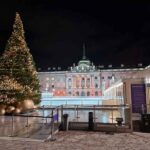
Traveler. Dreamer. Cat lover. Wondering around the world with my backpack and my camera. Contributing to make the world a better place.
110 thoughts on “ Everything you need to know about visiting Kew Gardens in London ”
I live just a few miles up the road from Kew Gardens and haven’t been since I was a young child and barely remember it (entrance cost 1p back then!), however we are visiting this weekend and very much looking forward to it. I’d forgotten just how enormous it is. My late aunt worked there pressing flowers which she loved. Your guide has been useful in deciding what to see during our visit (basically as much as possible but definitely The Hive, treetop walk, Pagoda, Palace etc etc). Think we could do with two whole days! Your pictures are wonderful and I’m sure I will be taking many this weekend. Anyone wanting a lovely lunch or proper afternoon tea whilst visiting the gardens, there is a gorgeous olde worlde tea room across the main road called Newens (Maids of Honour) that I highly recommend. It gets very busy though as it’s so popular with tourists and locals alike. By the way, anyone thinking Kew is amidst the hustle and bustle of central London, it isn’t, it’s on the outskirts, in suburbia ;). There are many beautiful, open green spaces in London and its suburbs.
Wow, as a Northener, I had no idea that there was so much to do and see at Kew Gardens. It looks wonderful and I really want to visit after reading your guide and looking at your beautiful photographs. It’s definitely going to be on my must-see list of places x
Oh wow, this is such an informative guide – you have covered so much! The photos are beautiful. I have always wanted to go to Kew but so far not made it. Hopefully one day! X
I’m so glad that I found this! I am visiting London on December and I will definitely go to Kew Gardens. I am putting it to a list of places I must visit in London. 🙂
This looks like a beautiful place to visit. If I am ever in London I will have to stop by.
Its so nice to visit some places like this. Peaceful and relaxing. London is on our bucketlist and we will definitely find this place there.
Leave a Reply Cancel reply
Your email address will not be published. Required fields are marked *
This site uses Akismet to reduce spam. Learn how your comment data is processed .
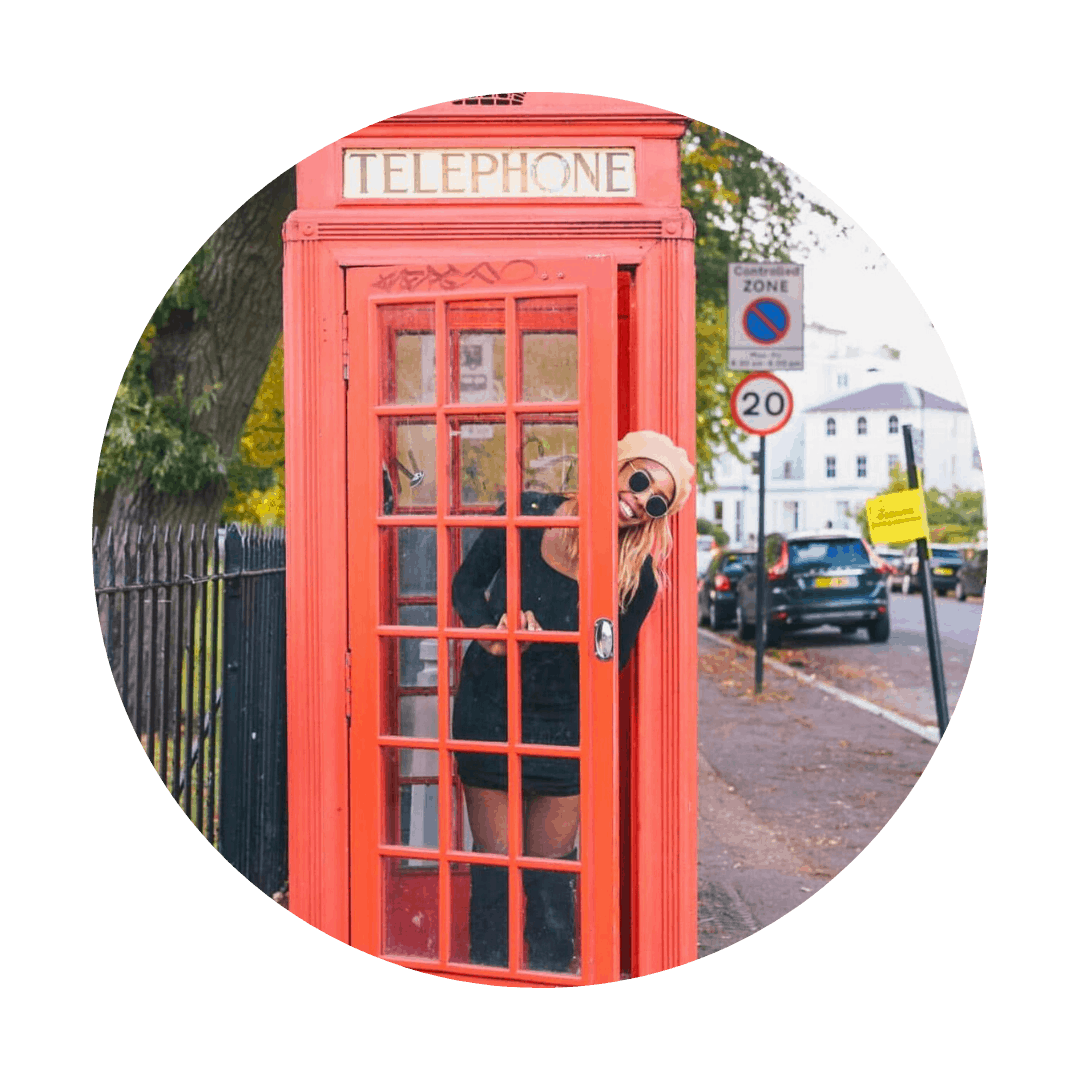
Hi, I'm Candace
Candace Abroad
A London & Travel Blog

London , London Parks, Gardens & Mews , London Tours & Experiences , London Travel Tips & Inspiration · January 30, 2024
The Best Kew Gardens Tips: A Local’s Guide (2024)

Table of Contents
Looking for the best Kew Gardens tips? Look no further! Here’s your ultimate guide to the UNESCO World Heritage Site — from a Londoner!
This post may contain affiliate links. Check out my Disclosure & Privacy Policy for more information.
London may be known as ‘the Big Smoke’, but it’s also the home of the largest and most diverse botanical and mycological collections in the world. You guessed it – Kew Gardens !
And if there’s one thing we Londoners cherish, is a city oasis. So it’s no wonder it appeals to seasoned botanists, plant enthusiasts, and even the rookies that are just eager to change the landscape for once.
Are you one of them? Well, lucky for you, as a long-time local, I’m full with insider tips that’ll let you step into a world of exotic plants like the seasoned explorers.
We’ve got plenty of ground to cover, so don your adventurous hat and join me as I spill the tea about experiencing Kew Gardens like a real pro!
The Best Kew Gardens Tips to Visit Like a Pro

Kew Gardens in a Nutshell
🪷 Overview: Nestled about 30 minutes from Central London, it’s a UNESCO World Heritage Site that exists since 1759 and has over 30,000 different plant and seed species from around the world.
📍 Location : Conveniently located at Richmond (TW9 3AE), it’s just a stone’s throw away from the Kew Gardens station (which has its own pub!).
🕙 Opening Hours : The gates open wide every day from 10am, giving you all the daylight you need to explore its treasures. Closing times depend on the season, starting from 4pm during winter until 7pm during summer (last entry is always one hour before closing).
🎫 Tickets : A modest fee aids in the preservation of this green oasis — and it’s worth every penny! Adult tickets start from £12 for off peak weekdays until £24 for peak weekends. Kids under 4 go free and tickets for those under 15 start at £4. There are also concessions available. Check all prices here.
P. S. – Entrance is also included on The London Pass , so if you’re visiting London and planning to go to many tourist destinations, this could save you loads!
⏳ Suggested Duration: I’d highly recommend spending at least 3 hours here, giving you plenty of time to wander, lose yourself, and even take a well-deserved break at one of the cafés and restaurants.

Photo courtesy: Kew Gardens
Planning Your Visit to Kew Gardens

When planning your visit to this green paradise, timing and researching is everything. Here’s the most important things to consider!
Best Time to Visit
For the best Kew experience, try to visit during spring (late March to early June). Nothing can match the vibrant colours, delightful scents, and the cheerful song of birds — it’s an absolute treat for the senses!
Summer (June to August) definitely comes second, although autumn (September to mid November) is magical considering you get to see the changing of the seasons.
And while winter (late November to late February) isn’t the best time to go, consider tickets are cheaper. Plus, you can join the UK’s most acclaimed festive trail !
Regarding times, if you fancy a bit of peaceful solitude, drop by in the early morning or late afternoon, when the park is blissfully serene. It’s ideal for a leisurely stroll or a quick snap for the gram without the crowds photobombing your shot.
Plan a Route
Being an experienced local, I strongly suggest plotting your route in advance to make sure you don’t miss out on the best things to see here (more on that later).
Seeing the map for the first time might seem a bit overwhelming for first-time visitors, but don’t panic! The garden’s extremely user-friendly layout won’t let you stray too far.
Consider Guided Tours
Now if you prefer a touch of narrative to your visit, consider joining one of the daily guided tours for an introduction to the Gardens (at 11am and 1:30pm). It’s an excellent way to discover lesser-known tales of the site, enjoy expert insights about the flora and fauna, and even pick up a gardening tip or two.
If you’re visiting during winter, the winter highlights walking tour is an amazing opportunity to discover the plants that come (more) alive during the season.
How to Get to Kew Gardens

Like (almost) anything in London, getting to Kew Gardens is a breeze thanks to the public transport and great connections. Pick your method!
By Tube : Hop into the District line to Kew Gardens station. The Victoria Gate entrance is merely 500m away (and the walk in the neighbourhood is lovely!).
By Train: If you’re travelling from Central London or Surrey, the Southwest Trains from Waterloo offer a smooth ride to Kew Bridge station. From there, it’s a 10 minute walk to the Elizabeth Gate. Or you can go to Richmond station and pop in the 65 bus or the District Line.
By Bus: The iconic red buses also reach the gardens; the 65 stops close to Lion Gate, Elizabeth Gate and Victoria Gate, the 110 stops near Kew Gardens station and Elizabeth Gate; and the 237 and 267 stop at Kew Bridge station.
By Car: For those enjoying the pleasure of their own wheels, you can find plenty of street parking around Kew, but do it responsibly and respect the locals, please. There’s also a carpark near Brentford Gate, which costs £7 for a full day’s use.
By River Cruise: Eager to make a huge entrance? Sailing into Kew by river cruise is as splendid as it gets. Companies like Thames River Boats offer trips from Westminster Pier straight to Kew.
Top Things to See at Kew Gardens

Brace yourself for a fantastic and long list of things you can’t miss while in Kew Gardens. Grab a map, you’re going to need it!
The tiniest royal palace in the UK is in Kew Gardens, where you can have a fascinating peek into royal family life back in the days. The gardens surrounding it? Gorgeous, of course!
The Palm House
This mesmerising iron and glass structure houses a mind-blowing collection of rainforest plants. It’s an exotic world amidst a misty environment!
The Temperate House
The world’s largest Victorian glasshouse is full with some of the rarest temperate zone plants, including ornamental blooms that make it a top favourite amongst plant lovers.
The Tree Top Walkway
For a sky-piercing perspective of the gardens, ascend the 18-metres-high structure that puts you in a privileged position only birds can enjoy!

The Japanese Minka House and Pagoda
This corner of Kew adorned with Japanese style architecture embodies a zen-like serenity, a refreshing break from the quintessential English garden.
The Princess of Wales Conservatory
Want a tour around the world? This is the place! Part greenhouse, part adventure, you can find species from ten different climate zones under one roof, from cacti (my favourite!) to orchids.
The Waterlily House
Channel your inner Monet at Kew’s hottest and most humid house, filled with vividly colourful waterlilies and lotuses. These floating beauties create a dreamy atmosphere that’s truly Instagram-worthy!
Queen Charlotte’s Cottage
Take a leisurely stroll off the beaten paths and discover this rustic royal retreat that was donated by Queen Victoria with one special request – the landscape must be left in an uncultivated state.

An innovative multi-sensory experience awaits inside a gigantic lattice structure, mimicking a real beehive (the nature one, not Beyonce’s) using speakers and LEDs.
Davies Alpine House
End your Kew exploration on high—quite literally. This architectural marvel houses a variety of alpine flora meticulously pruned and cared for.
Kew Gardens Tips to Explore Like a Pro

Kew Gardens tips to visit like a pro involves more than knowing where to go and what to expect. It requires you to be extra savvy when packing for the day!
1. Prepare for the Weather
I’ve asked this before, and I’ll ask it again. When is it not going to be about the weather in London!? Don’t panic, though, in this case is more about considering a light jacket. Easy to fling off in the warmth of the greenhouses or to cosy up when outside.
2. Wear Comfortable Shoes
When you’re on a mission to conquer all the floral delights at Kew, choose footwear that’s kind to your soles. Believe me, you’ll walk more than Jane from Tarzan in the jungle.
3. Bring Everything You Need
Pack a (light) bag with essentials for your adventure: a water bottle, sunscreen, a few snacks to refuel, and a portable charger if capturing the sights of Kew is on your ‘to-do’ list.
4. Check Their Upcoming Events
Don’t forget to dice into their calendar of upcoming events , The gardens serve up a charming mix of music concerts, art installations, yoga sessions, food festivals, and so much more!
5. If you’re coming with kids…
For the little explorers, Kew is an amazing playground. From the Climbers and Creepers play area to interactive family trails and activities; compile a list of must-see clusters to let the kids genuinely enjoy, engage, and become mini environmental champions.
Where to Eat in Kew Gardens

A Kew Gardens exploration takes time, so you’ll need a break. Why not stop at one of their amazing cafes and restaurants, or bring your own picnic to the gardens?
On-site Cafes and Restaurants
Family Kitchen : Offering a no fuss menu, this one’s set to appeal the youngest of the adventurers in your party. You’ll enjoy pizzas, sandwiches and even ice cream in a relaxed and up-beat environment.
Pavilion Bar and Grill : Splurge on some sizzling grills and salads at the inviting sun-kissed terrace overlooking the beautiful gardens—alfresco dining with style!
The Orangery : For something fast and informal, head here to enjoy coffee, cakes, and light meals. Available for either take away or eat in.
The Botanical Brasserie: This one’s an all-day formal dining with modern British cuisine, offering everything from breakfast, lunch to afternoon tea.
Victoria Plaza Café: Perfect for a coffee break throughout the day! Look out for their reusable cup scheme, as they’re hoping to save over 20 thousand single-use cups.
Picnic Areas and Rules
Replete with sprawling greens and never-ending blue skies, Kew Gardens can be your perfect picnic postcard setting. But you need to be careful to avoid causing any disruption!
You can use any grassy area to do your picnic, but these don’t include those by the restaurants, buildings and glasshouses. Some of my favourite spots are The Arboretrum , the Palm House Pond and Cedar Vista (with gorgeous views of the Pagoda).
To ensure a zero-impact picnic, it’s not allowed to bring barbecues or picnic furniture . You should also bring a picnic bag to pop your rubbish and dispose responsibly.
Alcohol is permitted (with moderation!), and while music isn’t, you can still bring a pair of headsets to enjoy your favourite tunes.
Shopping at Kew Gardens

Ready to head off? Don’t forget your souvenir! The last Kew Garden tip is to invest some time (and money!) at the end of your day here.
Kew Gardens’ gift shops and plant nurseries are a delightful treasure hunt, where you’ll find everything nature-inspired.
From exclusive botanical prints to Kew-inspired ceramics and delicate jewellery, a book collection that pleases the youngest and oldest, and a vast collection of scents in aromatic candles, fragrant soaps, and indulgent botanical skincare.
Oh! And how could I forget!? Of course you can add a new member (or hundreds!) to your plant family at home, be it an exotic orchid, a cacti variety, or even a bonsai!
Honestly, you can add a whole extra hour to exploring them, as the marvels are infinite here.
Kew Gardens FAQs
Q: is it worth going to kew gardens.
A: Absolutely! Kew Gardens is an explorer’s dream in London, an oasis full of botanical surprises and just a fun adventure overall.
Q: How long should you spend at Kew Gardens?
A: With over 300 acres of enchantment to uncover, you’d ideally want to spend an entire day at Kew Gardens, if not more. But if you need to keep it tight, consider 3 hours as a minimum.
Q: What is the best time of day to visit Kew Gardens?
A: The early morning hours, just as Kew Gardens opens its gates, often gift its visitors with dew-kissed greenery, chirping birdsong, and fewer crowds—a mesmerising start to the day!
Q: What’s best to see at Kew Gardens?
A: It’s difficult to pick! But consider paying a visit to the largest Victorian glasshouse in the world, the exhilarating tree-top walkway, the Princess of Wales Conservatory, and the fascinating Hive installation.
Q: Can you walk around Kew Gardens for free?
A: While Kew Gardens nurtures an open spirit of discovery, it’s not a free-for-walk space; a ticket purchase is required to contribute to its ongoing maintenance and preservation initiatives. But trust me, it’s worth it.
Q: What is Kew Gardens like?
A: Kew Gardens is like walking in what paradise is usually described like. It’s a place with endless trails of sounds, smells, colours and textures, both on the ground and in the sky. A sensory journey paralleled by none!
Thanks for reading my Kew Gardens Tips Guide. If you enjoyed it, let me know on Instagram !
Check out more london guides:.
- 50+ Beautiful Parks and Gardens in London To Explore ASAP!
- 5 Magic Things to do in Richmond Park, London
- Where to See Gorgeous Spring Flowers in London
- 5 Best Things to do in Holland Park, London (+ Map!)
- 19 Best Secret Things to do in London
- Your Ultimate Summer Guide to London
Happy Londoning,

Get on the List
You’ll also love.

Latest from Instagram
Follow @candaceabroad
Moving to London? Check out my Digital Moving Guide!

join the monthly newsletter
Subscribe for itinerary inspiration, travel inspo & exclusive content straight to your lovely inbox.
Affiliate disclosure
Theme by 17th Avenue Designs
Disclosure & Privacy Policy
Copyright © 2024 Candace Abroad Theme by 17th Avenue
The Secret London Guide To Kew Gardens
Kew Gardens is a tranquil escape from the chaotic capital city - and it'll be even more relaxing now you've found this handy guide!
The most beautiful botanical garden in the city and home to the the most diverse collection of plant life in the world; Kew Gardens is well worth travelling the entire breadth of the District Line for. Here’s the Secret London lowdown.
What should I see at Kew Gardens?
There is a lot to see and do in Kew Gardens. Below are some of our top picks of things to see, but there’s also plenty of grounds to explore outside the cosy confines of the greenhouses. Completing a circular route is about an hour’s walk , so pop on your comfiest shoes and see what wonders you discover throughout the 326-acre site .
The Palm House
View this post on Instagram A post shared by Kew Gardens (@kewgardens)
Travel to the depths of the rainforest without having to leave Zone 3 inside Kew’s iconic Palm House . It’s home to luscious tropical trees, which, thanks to a rather Instagram-friendly iron staircase, can be gawped at from above. It also sits next to a pretty lake and ornate flower beds. What’s not to love?
The Temperate House
Kew’s impressive Temperate House is, in fact, the world’s biggest Victorian glasshouse. Home to 1,200 rare and threatened species of plants from Africa, Australia, New Zealand, the Americas, Asia and the Pacific – and doesn’t it just look bloomin’ gorgeous?
The Princess of Wales Conservatory
Kew Gardens’ most modern greenhouse is this multi-talented marvel. A leafy labyrinth of enchanting ecosystems, it’s actually a cluster of ten separate spaces, each climactically-optimised for different families of plants. One moment you’ll be in a dry, cacti-filled environment, and the next, in a hot and humid rainforest paradise. Get you a greenhouse that can do both, as they say – okay, nobody actually says that.
Davies Alpine House
Around the corner, this petite-yet-curvy little greenhouse protects some of the most resilient plants in the entire garden. Expect cool, dry and windy conditions in here – as these are the conditions in which the little guys flourish.
Treetop Walkway
Got a head for heights? If so, this could be just the thing for you. 18 metres above the ground, the Treetop Walkway will give you – quote literally – a birds-eye view of the glorious gardens and everything they have to offer.
The Great Pagoda
View this post on Instagram A post shared by Richard Wilford (@richardwilf)
Carry on climbing with a stroll over to the simply stunning Great Pagoda . Dating back to 1762, it was created as a gift for a princess – I guess mine must be lost in the post. At ten storeys high; the 253 steps within will offer you views across the ground from the summit but note that it is currently closed until later this spring.
View this post on Instagram A post shared by Ailbhe Phelan (@ailbhephelan)
At 17 metres tall, The Hive is a stunning piece of contemporary art and – understandably – one of the most photographed features in the entire gardens. 1000 LED lights glow and a musical symphony help recreate life inside a beehive – but on a human scale.
Originally known as the ‘Dutch House’, Kew Palace is the only surviving part of a larger palace, where George III once spent his summers back in the late 1700s. The oldest building in the gardens and full to the brim with rustic charm.
When should I visit Kew Gardens?
Kew Gardens is open all year round and honestly, there’s not really a bad time to go. Well – unless maybe it’s chucking it down with rain . Head there for springtime blooms or crispy autumn leaves ; all the greenhouses are warm, regardless.
One popular time to visit is Christmas , when the gardens are illuminated with fairy lights, lasers, colourful spotlights and other festive displays. This is a separate offering to the regular garden openings, taking place after hours, so there’s no greenhouse access or chance to wander off into the darkened forests. There’s also a weeklong music festival, Kew the Music (see what they did there?!) running there this summer.

Anything else I should know before I visit?
There are four separate entrances to Kew Gardens : Victoria Gate (TW9 3JR), Lion Gate (TW9 2DF), Elizabeth Gate (TW9 3AE) and Brentford Gate (TW9 3AF). The car park can be found at the Brentford Gate. The nearest stations are Kew Bridge, Kew Gardens and Richmond.
There are a variety of cafes and restaurants at Kew Gardens, each serving up delicious grub using seasonal and local produce.
Kew Gardens is open daily from 10am – 5pm (last entry at 4pm). Ticket prices start from £4 per child and £12 per adult. Find out more and plan your visit here .
Also published on Medium .
TYPE IN YOUR SEARCH AND PRESS ENTER
The Ultimate Guide to Visiting Kew Gardens
Kew gardens ultimate guide.
Don’t let the word “gardens” fool you, because Kew’s Royal Botanical Gardens are more than just collections of pretty flowers to snap photos of. As a matter of fact, the Kew Gardens are actually a living, breathing collection of some of the most stunning botanical art on the planet, and are a must-see for any visitor to London (whether you’re a nature fanatic or not).
With over 300 acres to explore, Kew Gardens is one of the biggest living plant collections in the world, and even contain the largest display of seasonal flowers in Britain. Not just limited to flowers, the Kew Gardens also contain historic glasshouses, rare specimen trees, serene woodlands, and even playground areas for children to play in.
The Kew Gardens were first created in 1759, and showcase some of the best gardening art from the 18th to 20th centuries. Not only has it become one of the most popular tourist attractions in London, it’s also an environment where plant scientists can study plant diversity and economic botany as well.
Kew Gardens Highlights
Kew Gardens are not simply a place to wind down after a free tour or day of sightseeing. These gardens pack a punch! From waterfalls, lilypads and crocuses (two million of them to be exact), to plant tunnels, treetop walkways and bamboo gardens, one could easily spend an entire afternoon walking around the many attractions in the Kew Gardens and still not see all there is to see.
In May, the Kew Gardens spring to life (literally) and the blooming of bluebells are especially popular among visitors; but it’s during the summer months when the Kew Gardens are perhaps at their most beautiful. During these months, visitors can breathe in the smell of aromatic plants (like lavender, thyme, rosemary, sage and oregano, just to name a few), and also see a collection of Mediterranean fruits and vegetables (including nine different types of aubergine!)
Out of all the different types of plants and flowers species located in the Kew Gardens, none are as famous or as popular as the 250-year-old Old Lions, which are the oldest trees at Kew Palace.
The Bamboo Gardens (located at the historic Japanese Minka House which dates back to the early 1900s) are another fan-favourite, as here you can see the largest collection of bamboos in the UK.
Past visitors also highly recommend a stroll along the Treetop Walkway, which provides visitors with a bird’s eye view of the Kew Gardens from 59 feet up in the air.
Special Tips
Getting There
Visiting kew gardens.
The majority of past visitors leave Kew Gardens wishing they had more time to explore its many acres, so try to reserve at least a full afternoon to spend at the gardens (or two hours minimum). You may be walking for hours on end, so make sure you wear comfortable walking shoes, and warm clothing during the winter months.
All of the important flowers, trees and plants throughout Kew Gardens have identification labels so you can read more information on them during your visit However, it still may be a good idea to get an official guidebook to read as you’re walking through the gardens; (you can pick up the official guidebook at the Kew Gardens’ entrance). Visitors are also given a map which highlights all the attractions throughout the gardens, and even child-friendly attractions to visit as well.
Be aware that there are four entrance gates to the Kew Gardens which may be confusing for first-time visitors:
- The Victoria Gate is the closest entrance to the Kew Gardens underground station, and is located relatively close to the Palm House and the Princess of Wales Conservatory. Free daily guided tours start from Victoria Gate, and the nearby Victoria Plaza has a café, lockers and toilet facilities as well.
- The Elizabeth Gate is the closest gate to the Kew Bridge rail station, and is convenient for visitors who are using boat services from Westminster.
- Brentford Gate is just across from Kew’s Ferry Lane car park, and is close to the White Peaks Cafe and the Climbers and Creepers play area. Also close by are the Palm House and the Princess of Wales Conservatory.
- Lion Gate is the closest entrance to Richmond Station, and is the only gate at the southern section of the gardens; (thus it is the furthest away from attractions like the Palm House, the Princess of Wales Conservatory and the Climbers and Creepers children’s play area). It is relatively close to the Kew’s Pagoda, as well as the Pavilion Restaurant, and it tends to be less crowded even during the summer months.
Be aware that bicycles, animals and tree-climbing are all strictly forbidden inside the gardens, and perhaps it may go without saying, but avoid touching any of the plants or wildlife at all costs.
Visitors are allowed to have picnics anywhere in the Kew Gardens, except for in the glasshouses or on planted areas. No furniture or barbecues will be allowed past the entrance gates.
When to Visit
Admission into the Kew Gardens cost:
- £15 for adults (or £16.50 with a donation) at the door, or £14 if you purchase your ticket online beforehand.
- For seniors, students or visitors with a disability, tickets cost £14 at the door, £15.50 with a donation, or £13 online.
- For children (ages four to 16), tickets cost £3.50 at the gate, or £2.50 online
- There are also family tickets available which range from £19 to £34 at the gate, or £18 to £32 online.
The Kew Gardens are open every day throughout the year (except December 24th and 25th), and the gates open at 10 a.m.
If you wish to visit Kew Gardens, you might be interested in the many free tours in London that depart daily.
Free Tours in Your Language
- Skip to primary navigation
- Skip to main content
- Skip to primary sidebar
- Skip to footer
TravelAwaits
Our mission is to serve the 50+ traveler who's ready to cross a few items off their bucket list.
8 Must-See Things At London’s Kew Gardens

elRoce / Shutterstock
- Activities and Interests
- Architecture
- Destinations
- History and Culture
- Outdoor Activities
- Sightseeing
- United Kingdom
The Royal Botanic Gardens, Kew, known simply as Kew Gardens , is located in Richmond, a suburban town in southwestern London. The garden, a UNESCO World Heritage site , dates to the 18th century, when it was established on the grounds of a royal palace.
Today, the garden is a globally renowned scientific institution for plant and fungal research. The original 9-acre area has expanded to include 300 acres containing more than 50,000 living plants. With its Victorian glasshouses, arboretum, and artwork, there is a lot to see.
Here are eight of the garden’s attractions that no visitor should miss.

Jeff Eden / RBG Kew
1. The Great Pagoda
The Great Pagoda was completed in 1762 as a gift for Princess Augusta, who founded Kew Gardens. When it was constructed, 80 dragons carved from gilded wood adorned the roofs of its 10 floors. The dragons were removed in 1784. There were rumors that they were sold to pay King George IV’s gambling debts, but it is more likely that they simply rotted over time. The Great Pagoda was restored in 2018, and the dragons are back . Eight of the first-floor dragons were produced in the traditional manner and hand-painted. The remaining 72 were 3-D printed in a robust polyimide material.
A circular staircase inside the pagoda allows visitors to climb to the top for spectacular views. There are a limited number of spaces available per time slot, and if you wish to climb the pagoda, you must pay an additional fee. There are 253 steps to the top.
If you choose not to climb to the top, you can look through the small room at the base of the pagoda at no additional cost. Here you’ll find information about the pagoda and its architect, Sir William Chambers. You’ll also find two automata . One shows the architect visiting Canton, China, where he studied pagodas. The other shows the royal family strolling through Kew Gardens. Handwheels at the bases of the automata allow you to control the moving parts.

2. The Japanese Landscape
Three garden areas make up the Japanese Landscape . The Garden of Peace, an area reminiscent of a traditional Japanese tea garden, features stone lanterns and a dripping water basin. Raked gravel and large rocks in the sloped Garden of Activity represent the movement of flowing water. The Garden of Harmony unites the two. All three combine to create a peaceful, manicured oasis.
At the center of the Japanese Landscape is the Chokushi-Mon, or Gateway of the Imperial Messenger. It was created for the Japan-British Exhibition of 1910 and is a replica of the Gate of Nishi Hongan-ji (Western Temple of the Original Vow) in Kyoto, Japan. Its finely carved wooden panels feature stylized flowers and animals that depict an ancient legend.

Gareth Gardner / RBG Kew
3. The Temperate House
The Temperate House , originally opened in 1863, is the world’s largest Victorian glasshouse. It has been an iconic landmark of Kew for more than 250 years. The Temperate House reopened in 2018 after a five-year renovation project. Filled with 10,000 individual plants, it is home to 1,500 species from Africa, Australia, New Zealand, the Americas, Asia, and the Pacific Islands, including some of the world’s rarest and most threatened temperate plants. All of the species require conditions above 50 degrees to survive.
Level pathways wind throughout the ground floor, and a balcony around the interior perimeter offers views from above. Note that the balcony is not wheelchair accessible.

4. The Treetop Walkway
You’ll find 14,000 trees in Kew Gardens. The Treetop Walkway provides an opportunity to get closer to those trees and offers views of the garden and the city beyond. Made of weathered steel that blends into the natural environment, the walkway stands 59 feet tall. It is 656 feet long and loops through the upper branches of beech, sweet chestnut, horse chestnut, and oak trees. The walkway offers a unique, ethereal perspective of nature. You’ll love watching bird and insect behavior at this height and hearing the breeze rustling the branches.
The 188 steps to the walkway are a manageable climb, since the steps are broken up into several flights and there’s a landing at the end of each flight. There is room on each landing to step out of the path of oncoming climbers to rest or simply take a few moments to admire the view. The walkway itself has chest-high railings, and several circular jut-outs along the way provide additional viewpoints. There is an elevator, but it was out of service on the day I visited. If you plan to use the elevator, check the Kew Gardens website for information about the elevator’s status. As I write this, the site says that the elevator is currently out of service.
There is no additional charge to access the Treetop Walkway. It closes an hour before the whole garden closes.

5. The Palm House
You can explore an indoor rainforest at the garden’s Palm House . The Palm House, which opened in 1848, was the first glasshouse to be built at Kew Gardens. Inside, you’ll find lush vegetation and dense, moist air. Many of the plants in the collection are endangered in the wild, and some are even extinct. Rainforest plants cover only 2 percent of the world’s surface but make up 50 percent of plant species. Look for the Madagascar periwinkle, now used to treat a number of different types of cancer; the rubber tree; the cocoa tree; and the cycads, or palm-like plants that were widespread more than 250 million years ago.

6. The Marianne North Gallery
With all there is to see at Kew Gardens, you might easily miss the attractive red brick building housing the Marianne North Gallery . But don’t hesitate to take a look inside — the exquisite interior, which incorporates different kinds of wood and stenciled floor tile, is home to more than 800 works of botanical art.
Marianne North was a wealthy, single Victorian woman who traveled the world solo in pursuit of interesting plants to paint. She was unconventional and ventured to some of the most remote places in the world. After 13 years of travel, she decided that she wanted to exhibit her vivid, detailed paintings in Kew Gardens, where her passion for plants began. She offered to build the gallery if Kew would display her work in it. The gallery was constructed in 1882, and a restoration of the building was completed in 2008.

7. The Princess Of Wales Conservatory
The Princess of Wales Conservatory is the newest glasshouse at Kew Gardens. It opened in 1987, and its 10 computer-controlled climate zones showcase a variety of ecosystems. In the carnivorous plant zone, you’ll find predatory plants such as Venus flytraps and pitcher plants. There are cacti and succulents in the dry tropical zone, orchids and bromeliads in the steamy zones, and a giant water lily in the wet tropical zone.

8. The Hive
The Hive , one of the most photographed spots in Kew Gardens, is an art installation located in the heart of a wildflower meadow. The 55-foot-tall structure depicts life inside a beehive. The mesh frame is constructed from 170,000 aluminum parts and 1,000 LED lights. The LED lights glow according to the vibrations of bees in the garden. You’ll hear the whirring of bees when you walk inside, as well as background music composed by musicians who improvised to a live feed of beehive sounds in the key of C.
There is something to see in every corner of Kew Gardens. Keep your eyes open as you walk from attraction to attraction. You’ll pass colorful border plantings, various styles of gardens, peaceful and majestic wooded areas, ornamental structures, and assorted garden art.
On the website , you’ll find more information on these and other attractions, as well as the park’s hours and fees. Note that the glasshouses close an hour before the garden closes.
London bound? Don’t miss these 10 free museums in the city . And when you’re ready for a break from the hustle and bustle, consider one of these eight amazing day trips from London .

Donna Janke is a writer based in Canada out of Winnipeg, Manitoba. She shares her travel discoveries on her blog, Destinations Detours and Dreams , using a combination of narrative, photography, and personal reflection, all with an eye for detail. Her interest in travel started as a child when books transported her around the world, and grew as she explored the world in person. Her life as a travel writer began after she retired from a professional career in IT. Donna loves discovering the unique character of places, near and far, and writing to inspire others in their travels. Her travel stories have been published in several outlets, and tend to focus on culture, history, nature, art, architecture, and food.

A Day Trip Guide to Kew Gardens
A visit to Kew Gardens is the perfect getaway from London, offering a tranquil setting in a botanical paradise. This top tourist attraction outside the city also happens to be a UNESCO World Heritage Site, and is one of the largest botanical gardens in the world. That’s why we’ve created this day trip guide to help you make the most out of your time at Kew Gardens.
Officially called the Royal Botanic Garden of Kew , these beautiful grounds are perfectly manicured, with the indoor collections being equally and beautifully curated. There are over 50,000 different kinds of living plants in the Garden. A trip to Kew is your chance to get closer to nature and uncover the science behind the plants and glasshouses.
Kew dates to the 18th century when it was established on the grounds of a royal palace. Originally only 9-acres, there are now 14,000 trees set over 300 acres for your exploration, all located in Richmond in Southwest London.
Disclaimer: Hi! this post may contain affiliate links which will take you to online retailers that sell products and services. If you click on one and buy something, I may earn a commission, see my Affiliate Disclosure for more details.
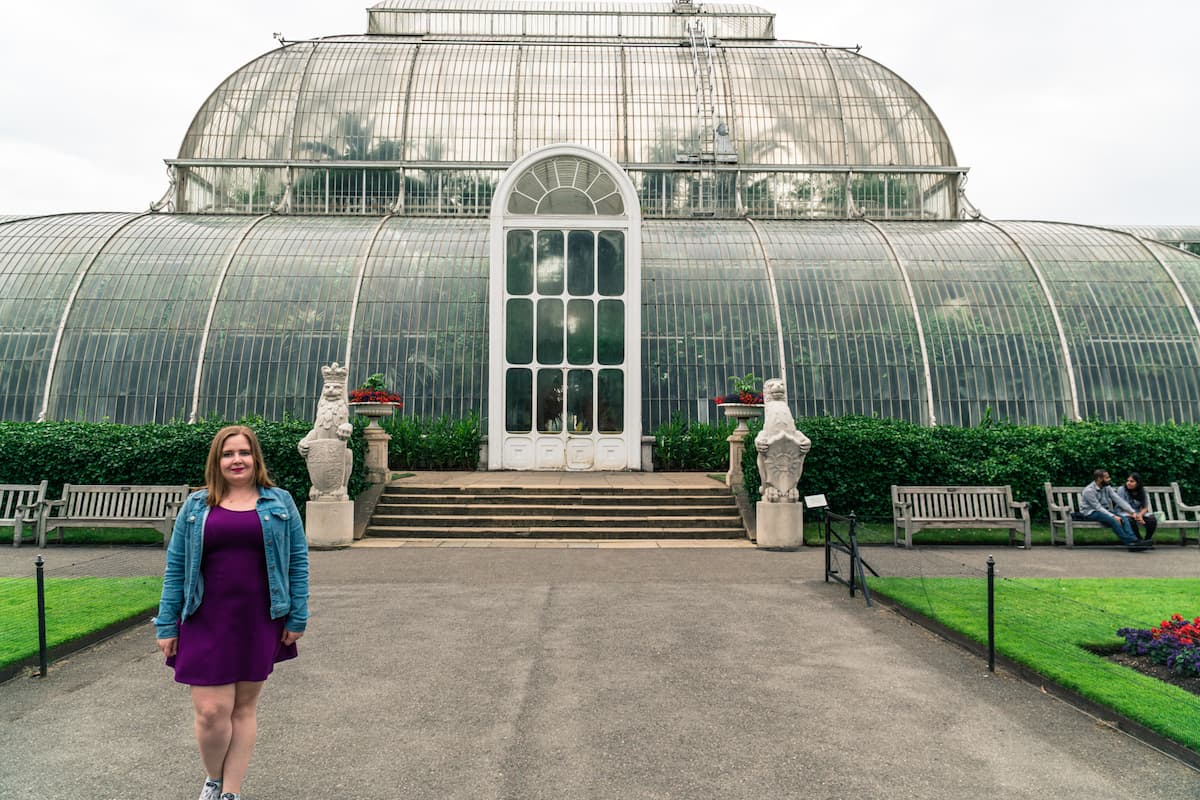
There’s more than just plants though. This garden is a globally renowned scientific institution for fungal and plant research, with Victorian glasshouses and artwork to see as well.
This guide will cover all the top attractions within Kew Gardens, as well as what to budget and the best times to visit. Always check their website before you go though because they temporarily shut exhibits down at random times, they always have new displays that might not be listed here, as well as pop-up events and festivals to enjoy.
Kew Gardens Top Attractions
Bamboo garden and minka house.
Bamboos are the fastest growing woody plants in the world and create dense landscapes wherever they grow. The Bamboo Garden at Kew has 130 bamboo species from China, Japan, the Himalaya and Americas, being one of the largest collections in the UK. They’re arranged by appearance to maximise the variety of form and leaf shapes. As you wander around, you’ll come across the Minka house. Meaning ‘houses of the people,’ these farmhouses are a treasured feature of Japanese heritage. The simple homes or ‘minka’ were common in Japan until the mid-20th century.
Treetop Walkway
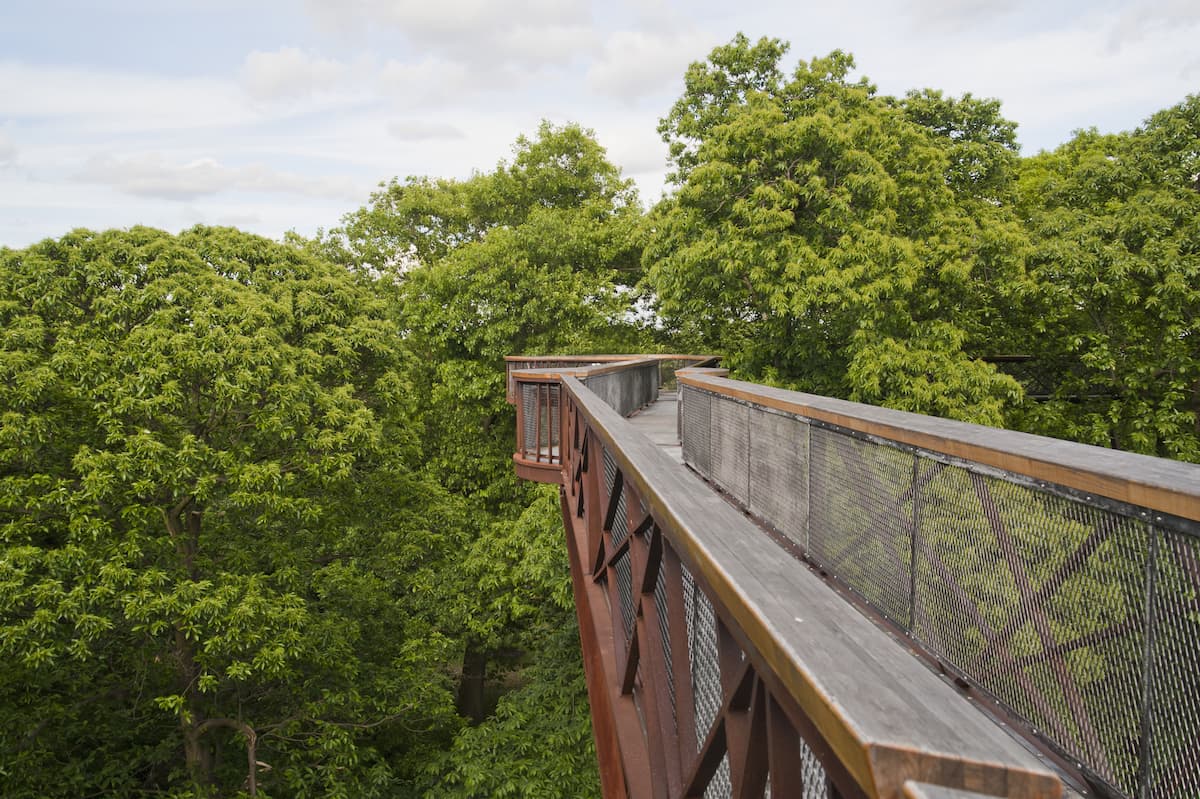
This is one of the things that you should definitely do at Kew Gardens is walk among the treetops. But if you’re like me and you’re slightly terrified of heights, it can be a little daunting. Just take a deep breath, enjoy the views and make sure you don’t look down.
The Treetop Walkway towers 18 metres above the ground and is a chance to observe the complex ecosystem of the trees’ uppermost branches, birds, insects, lichen and fungi. On the ground level, you’ll find sculptures carved from tree trunks and a path that leads below ground to the Rhizotron, which is an underground lab for studying the soil.
There are 118 steps up to the walkway in total.
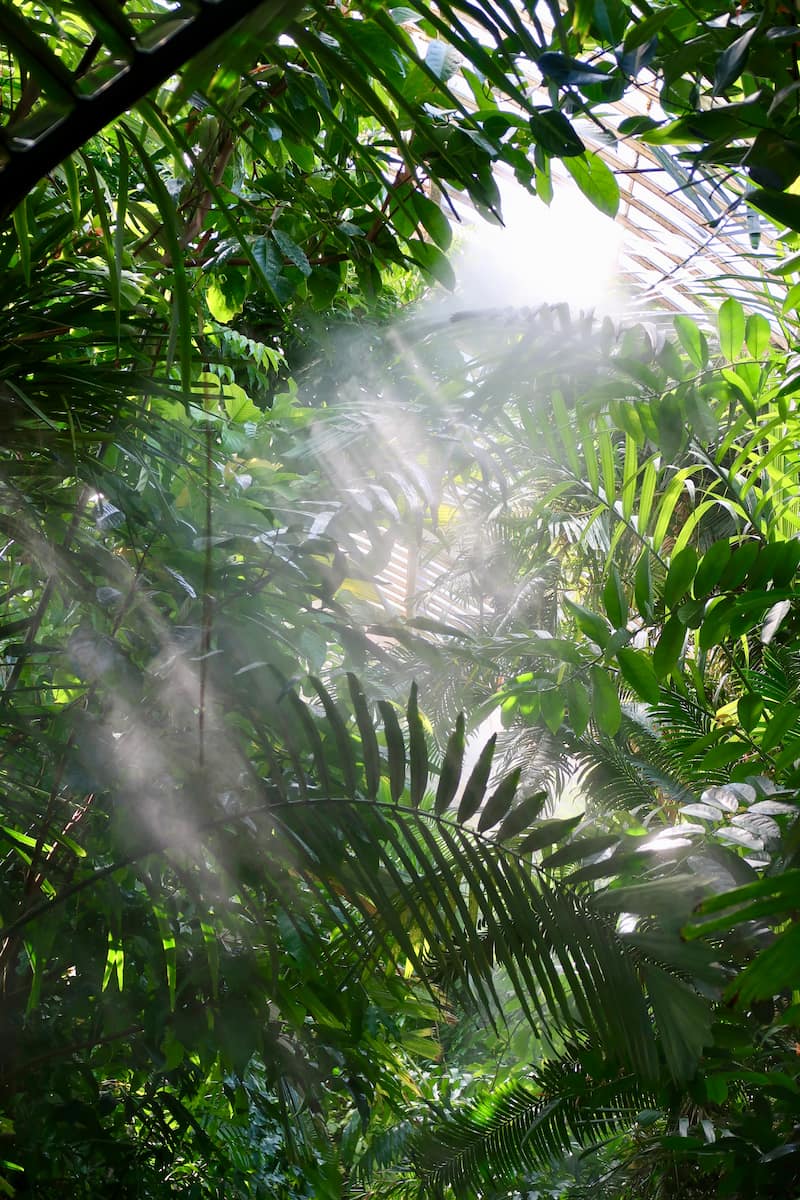
Palm House is where you’ll wander through the depths of the rainforest, where the air is heavy and dense. Discover treasures like the oldest pot plant in the world, along with the disease-fighting periwinkle. Lots of these plants are endangered or extinct. Rainforests are vital to sustaining life on earth, making up 50% of species. The Palm House is a living laboratory giving a chance to glimpse the magic of the rainforest.
The nearest entrance is Victoria Gate.
Great Broad Walk Borders
This is a feast for the senses! At 320 metres, these are possibly the longest herbaceous borders in the world. Arranged in colourful themes across eight large circular beds, you’ll be filled with fresh fragrances, feathery grasses, and dazzling flower beds that evolve with the seasons. Although they’re at their finest in summer, they’re still amazing in spring and autumn as well.
Japanese Landscape
This is the perfect place for quiet reflection, combining a Garden of Peace, Garden of Activity, Garden of Harmony and Japanese Landscape. You’ll find areas reminiscent of a traditional Japanese tea garden, stone lanterns, a dripping water basin, flowing water and stone and rock outcrops. The landscape was designed by Professor Fukuhara of Osaka University and has a near replica of the Gate of Nishi Hongan-ji (Western Temple of the Original Vow) in Kyoto, Japan.
Th nearest entrance is Lion Gate.
The Arboretum
There are 14,000 trees rooted in the Arboretum, with more than 2,000 species, including rare and ancient varieties. This is an opportunity to experience the diversity of forests around the globe, as it stretches across two-thirds of the Gardens. This incredible collection includes trees as old as the Gardens themselves, with many that you can’t find anywhere else in Britain.
The Marion North Gallery
This gallery has a vivid collection of 19th century botanical art, with more than 800 paintings covering the walls. Marion North solo travelled the world to record the tropical and exotic plants that she so loved and chose to paint the plants in their natural setting. Her vast collection is on permanent display at Kew and is exhibited in geographical order so you can follow in her footsteps.
The nearest entrance is Victoria Gate. The Gallery is located near the Temperate House and Pavilion restaurant.
The Davies Alpine House
Alpines are able to grow above the altitude at which trees can survive, making them some of the world’s most resilient plants. They’ve adapted to be able to endure severe conditions such as the Earth’s poles and Arctic mountaintops. Because they have a short growing season, the plants must flower and then set seed quickly. So, the flowers in this glasshouse are only displayed when they come into bloom, when you’ll see a range of bright purples, bold pinks, fragrant lavenders and many other unique species.
Mediterranean Garden and King William’s Temple
Get ready to be transported to the sun-kissed landscape of Southern Europe in this part of the Garden, depicting a typical Mediterranean natural habitat. Built in 1837 and standing in the centre of the Mediterranean Garden is King William’s Temple, in memory of William IV. The Tuscan porticos of the Temple, have iron plaques commemorating British military victories from 1760 to 1815.
The Hive towers 17 metres high and is an installation recreating life inside a beehive. It’s one of the most photographed spots in the Gardens and a magnificent piece of contemporary art. You can actually walk inside the enclosure and enter into the world of a real beehive, with music in the background responding to the activity. This is the place to explore the secret life of bees and celebrate their role in sustaining life!
The nearest entrance is Elizabeth Gate.
Princess of Wales Conservatory
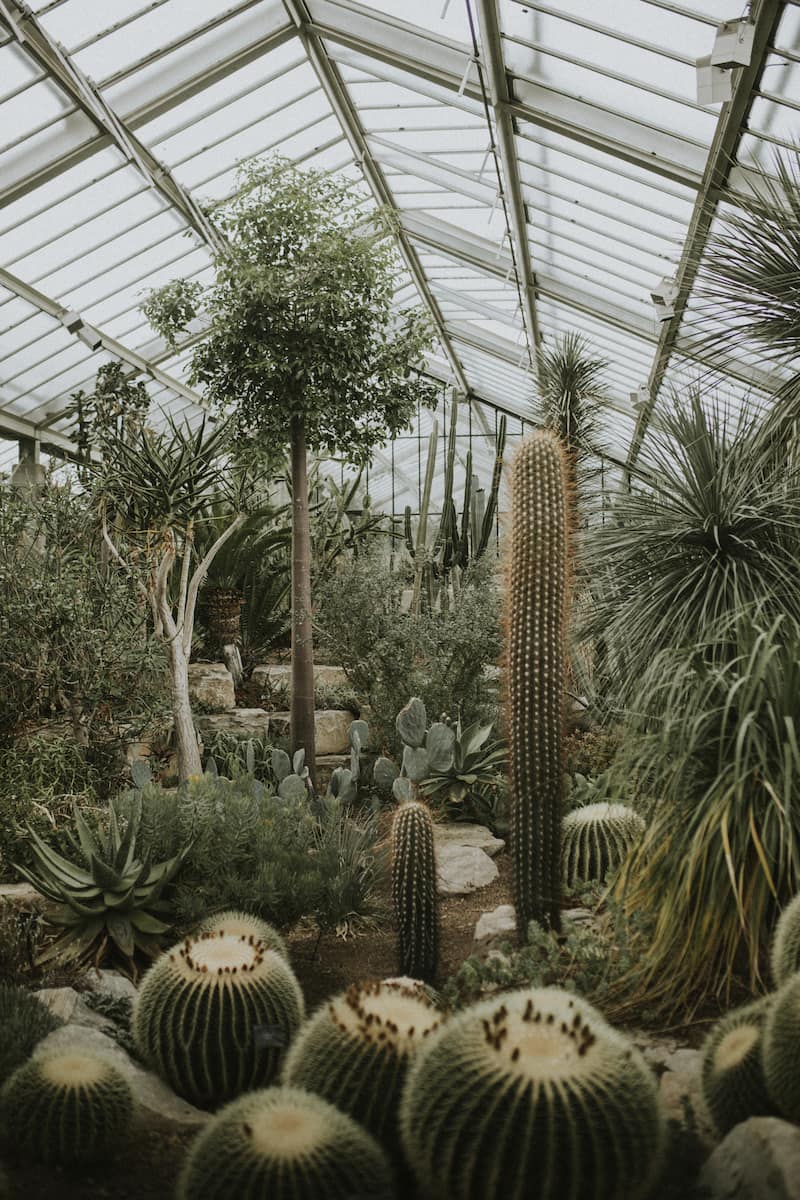
This Conservatory has ten computer-controlled climate zones and a series of fascinating ecosystems. Discover carnivorous plants, spiky cacti and succulents, and a celebrated giant waterlily, with a surprise around every corner of the winding glasshouse.
Elizabeth Gate is the nearest entrance.
Library and Archives
The Library and Archives collection at Kew spans 2,000 years, with classification and uses of plants, ecology, conservation and naming. This is for the garden lover, researcher or avid reader, with plenty of resources on botanic gardens and herbaria worldwide. The oldest collection dates back to the 1370s, with copies of ancient works of botany taking you back even further in time.
The Main Library is located in the Herbarium building off Kew Green to the right of Elizabeth Gate.
Queen’s Garden
The Queen’s Garden has plants and architectural styles of the 17th century, designed to complement Kew Palace. Most of the plants in this garden are species grown in the 1600s or even earlier. In May and June, the displays in this garden are simply spectacular.
Rose Garden
The Rose Garden contains 170 different species of the rose, making it a floral feast for the eyes. Designed in 1848 by English landscape architect William Nesfield, it wasn’t actually planted with roses until the 1920s. The best time of day to see the Rose Garden at its best is early in the morning or early in the evening, when the scent linger between the beds.
Temperate House
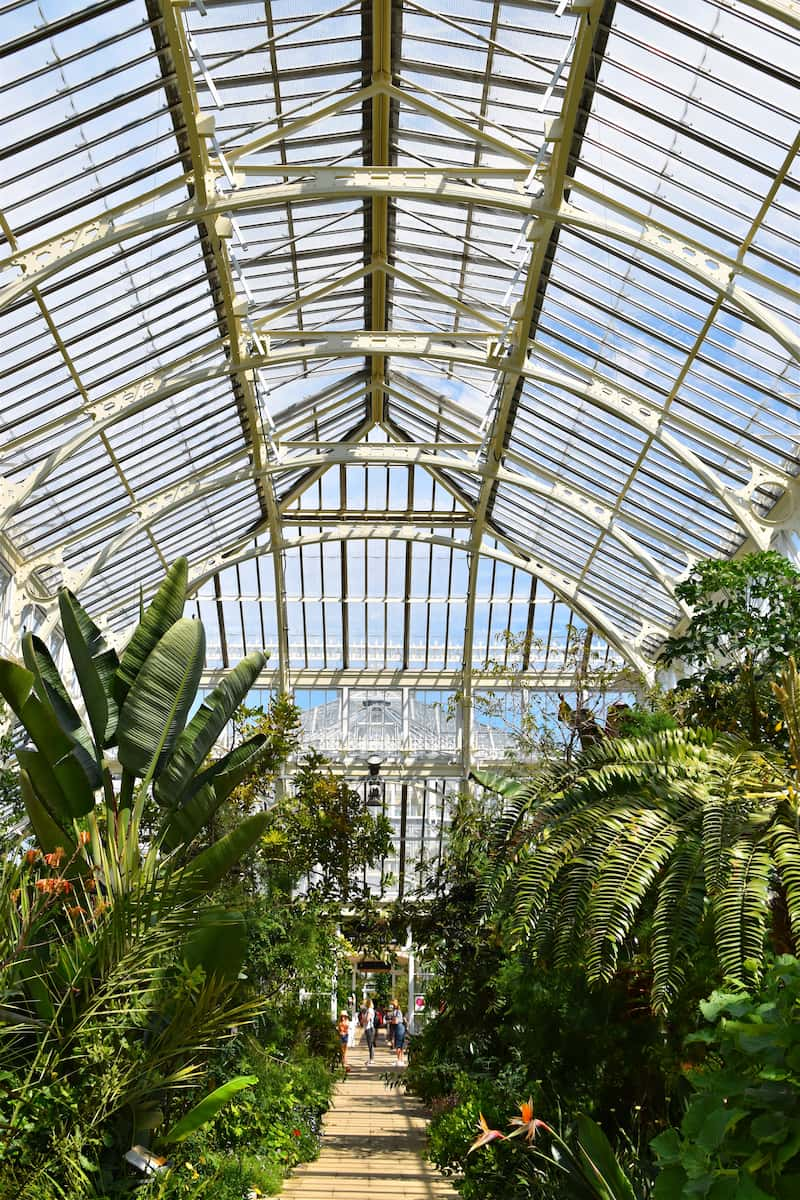
This incredible glittering cathedral is home to 1,500 species of plants. Travel the world with plants from Africa, Australia, America, Asia, New Zealand and the Pacific Islands. These are all temperate plants that need to live in conditions above 10 degrees to survive. The Temperate House tells us about how Kew is working to rescue these rare and already extinct plants.
The nearest entrance is Lion Gate.
Rock Garden
The Rock Garden display is framed by sandstone peaks and cascading waterfalls, mimicking life in the world’s mountainous regions. It’s over an acre in size, being constructed in 1882, making it one of the oldest and largest Rock Gardens in the world. The naturalistic display transports you to a rugged, wild landscape, with planting combinations designed to evoke the communities seen in nature.
Where to Eat and Grab a Coffee Within the Gardens

While spending the day at Kew, you’re sure to need a perk up with coffee and food. Here are your five options within the Gardens.
For indoor and outdoor dining, the Orangery even has pop-up stalls available. Warm yourself up with a toastie, burger or Lebanese Barbeque.
Pavilion Bar and Grill
Enjoy dining surrounded by vines with views of the Pagoda and Temperate House. This is the place for plant-based options, as well as burgers, seasonal salads and cake from the kitchen.
The Botanical Brasserie
Enjoy delicious breakfast, afternoon tea and lunch dishes and this hotspot.

Victoria Plaza Cafe
This is the place for the perfect picnic grub. Grab sausage rolls and barista coffee for eating in or for taking away.
Family Kitchen Shop
Craving some pizza? Add to that a salad bar and ice cream servery and you’re good to go! The Family Kitchen Shop is conveniently located right next to the Children’s Garden.
Best Times to Visit Kew Gardens
Kew Gardens has peak and off-peak times to visit, but it’s open year-round. Here’s what each season has to offer.
Naturally, signs of new life spring up all over the Gardens in the season of fresh beginnings. You’ll see swathes of yellow daffodils in various areas, while bluebell seekers should visit in April and May and head to the Natural Area for a carpet of blue. And while you’re at it, indulge the senses with cherry blossoms along Cherry Walk near the Temperate House and in the Japanese Landscape , on display between the end of March and the beginning of May.

Summer at Kew offers something bright and beautiful at every turn. The Rose Garden is the top spot to visit during the summer months, bursting with sweet fragrances and a sea of colours, from yellow and orange to pink and scarlet. The Waterlily House offers the striking waterlilies, while the Mediterranean Garden is a sunny landscape.
The trees steal the show in Autumn at Kew. This is the best time to visit the Treetop Walkway, overlooking the bronzed chestnut, beech and oak trees. The Japanese Landscape is another autumn hotspot, along with the Grass Garden and the picturesque autumn reflections in the Lake . Autumn is also the best time of year to see fungi .

There are many botanic gems to discover at Kew, even during the chilly months. Walking among the conifer collection, you’ll notice the bright winter berries mixed with cones and foliage. And the Holly Walk near the Temperate House has one of Europe’s biggest holly collections, adding in bright colourful dashes to the winter landscape. I’ve visited once during the Christmas lights display, which is incredible and I totally recommend seeing if you’re planning a visit around the holidays.
Ticket Prices and Discounts
Just to quickly cover tickets, the normal entry price to Kew Gardens is around £16, but it varies a bit with the time of year you go. You can also get a discount if you’re a student, family, or by using the Days Out Guide . For the Days Out Guide, you’l get a rail ticket, not an Oyster card, and it will give you a two for one voucher to enter. Purchasing tickets in advance is recommended.
For Kew Gardens opening times check the website as they change throughout the year. Also be sure and download the map of the Gardens before you go to help guide your way.
As you can see, Kew Gardens is definitely worth a visit! It had been on my London bucket list for ages and it was well-worth the wait. You’ll find something in every corner of Kew Gardens so keep your eyes open as you walk around. You don’t want to miss the colourful border paintings, majestic wooded areas, ornamental structures and garden art. Get ready for a multi-sensory sensation!

Kat Hi, I'm Kat, an Australian that moved to London in 2013 to start a new adventure. What a roller-coaster that was! I love helping others move to the UK and people explore the world ! I’d be honoured if you’d say, “Thanks!” with a £3 coffee on Ko-fi.

This site uses Akismet to reduce spam. Learn how your comment data is processed .
Kew Gardens Queens

Visit Kew Gardens Queens: A Hidden NYC Gem
Amidst the vibrant mosaic of NYC neighborhoods , there lies a tranquil sanctuary known as Kew Gardens. This quaint locale, tucked away in the heart of Queens, beckons those yearning for an escape from the frenetic energy of city life. With its lush landscapes and community-centric aura, Kew Gardens offers a refreshing blend of suburban peace and urban accessibility. For travelers intrigued by New York City hidden spots , a visit to Kew Gardens is an undiscovered journey waiting to unfold. Whether you are a history buff, nature enthusiast, or simply seeking a new corner of the city to explore, Kew Gardens tourism provides a variety of experiences for the discerning visitor. Not all Queens attractions clamor for attention; some, like Kew Gardens, whisper alluringly to those curious enough to delve into the tranquil side of visit Queens .
Key Takeaways
- Discover the serene atmosphere that makes Kew Gardens a unique retreat within New York City.
- Unearth the historical and cultural dimensions that contribute to the neighborhood’s unique charm.
- Plan a visit to this lesser-known gem for an authentic experience of Queens’ local life.
- Embrace the opportunities for peaceful explorations within the vibrant urban tapestry of NYC.
- Learn about the convenient access and local amenities that cater to both residents and travelers.
- Experience Kew Gardens through its various seasonal colors and neighborhood festivities.
Discover the Charm of Kew Gardens Queens
Kew Gardens, an urban retreat in the midst of the bustling city, beckons those looking to immerse themselves in the tranquil atmosphere of a historic Queens neighborhood . As you wander through the enclave, you’re instantly enveloped in Kew Gardens’ culture, far removed from the typical throes of NYC local life .
Stepping into a Quaint Urban Village
Deftly juxtaposing the tranquility of a small town with the convenience of city living, Kew Gardens embodies the essence of an urban village. The community-centric spirit is palpable as you explore the leafy streets and charming local businesses that cater to both the needs and the curiosity of visitors and residents alike.
A Neighborhood Steeped in History
Conceived as a planned community in the early 20th century, Kew Gardens retains much of its original character thanks to the preservation of its historic architecture. A walk through the neighborhood is a journey through time, where every building and street corner tells a story of the past, contributing to the collective memory of this iconic Queens enclave.
The Cultural Tapestry of Kew Gardens
Kew Gardens’ culture is a vibrant tapestry woven with the threads of diverse traditions and artistic expressions. Residents and visitors can enjoy an array of cultural festivities, sample international cuisines at local eateries, and engage with the area’s eclectic art scene. The following table highlights the cultural hotspots that offer a taste of what makes Kew Gardens so wonderfully unique:
Getting to Kew Gardens: A Visitor’s Guide
Welcome to the essential guide for navigating Queens public transportation and parking in Kew Gardens . Whether you’re a first-time visitor or a seasoned traveler, having the right directions to Kew Gardens and understanding the logistics of Kew Gardens transportation is key. Below, you’ll find valuable insights for a smooth journey to this charming Queens neighborhood.
- Subway Accessibility
For those looking to utilize New York City’s vast subway system, the E and F trains are your direct line to Kew Gardens. The Kew Gardens-Union Turnpike station offers a convenient stop, placing you within walking distance to many of the neighborhood’s attractions.
- Bus Routes Serving Kew Gardens
The Q10 and Q46 buses run through Kew Gardens, offering another cost-effective option for getting around. They connect to major subway lines, making transfers between bus and subway seamless.
- Long Island Rail Road (LIRR)
If you’re coming from Long Island or other parts of New York, the LIRR is an efficient option. The Kew Gardens station is located close to numerous local amenities, creating an easy link between the train and your destination within the neighborhood.
- Driving and Parking
If you prefer to drive, be aware that street parking can be limited. However, there are several parking garages and lots that offer hourly or daily rates, ensuring your visit is not hampered by the hunt for a parking spot.
TIP: When using Queens public transportation , consider purchasing a MetroCard for easy payment and discounted fares on buses and subways.
Once you’ve arrived, Kew Gardens’ compact layout makes it a pedestrian-friendly community. Many visitors find that the best way to explore the neighborhood is on foot, soaking in the sights and sounds at a leisurely pace.
For added convenience, the table below provides a quick overview of your transportation options and key destinations within Kew Gardens:
With this guide in hand, your visit to Kew Gardens will be a breeze. Enjoy the quaint beauty of this urban jewel without the hassle of transportation woes.
Top Attractions in Kew Gardens Queens
Delve into the heart of Kew Gardens, where culture, history, and entertainment blend into an itinerary of must-see destinations. Uncover the grandeur of Kew Gardens landmarks , the whispering echoes of Queens historical sites , the cinematic allure of Kew Gardens movies , and the invigorating zest of outdoor activities in Queens .
Richmond Hill Historical Society
At the forefront of historical preservation, the Richmond Hill Historical Society is a treasure trove of stories, offering a deeper understanding of Kew Gardens and its surroundings. Through engaging exhibits and passionate storytelling, this site enriches visitors with the neighborhood’s compelling evolution.
Maple Grove Cemetery
Step through the wrought-iron gates of Maple Grove Cemetery and stroll among centuries of history. This serene landscape serves as a testament to the past, with its well-preserved monuments and lush surroundings countering the bustling city life beyond its boundaries.
Kew Gardens Cinemas
For film aficionados, the iconic Kew Gardens Cinemas awaits with its vibrant art deco facade, beckoning cinephiles to enjoy a diverse array of independent films. This cinema is not merely a place to watch movies; it’s a cultural institution that celebrates the art of filmmaking within the community.
The Best Season to Explore Kew Gardens
Each season in Kew Gardens weaves its own magic, creating a picturesque canvas that shifts with the city’s heartbeat. Whether you’re planning a leisurely stroll through quaint neighborhoods or looking to engage in vibrant community gatherings, understanding Kew Gardens weather and the plethora of seasonal activities in Queens is essential for crafting the perfect visit. Here’s a seasonal snapshot to determine the best time to visit Kew Gardens .
Spring Blossoms and Autumn Hues
The breath of spring awakens Kew Gardens with delicate blossoms and vibrant greenery, signaling a time of renewal and beauty. As the days grow warmer, the neighborhood bursts into life with flowering trees and outdoor enthusiasts reveling in the return of sunshine. Spring brings a sense of wonder, making it an idyllic time for garden lovers and photographers alike.
On the other hand, autumn’s palette of fiery reds, oranges, and golds transforms the area into an enchanting setting. The crisp air and gentle rustle of leaves underfoot provide a perfect backdrop for long, contemplative walks or a peaceful picnic in the park.
Summer Festivities and Winter Wonders
Summer in Kew Gardens hums with energy. Sidewalks echo with the laughter of families and friends, and the aroma of barbecues fills the air. The warmer Kew Gardens weather plays host to various festivals, markets, and outdoor concerts, earmarking Queens as a hub of NYC seasons festivities. Make sure not to miss the joy and communal spirit that thrives during this vivid season.
Despite the colder temperatures, winter has its own charm with the soft glow of festive lights and the occasional blanket of snow creating a serene atmosphere. Seasonal celebrations bring neighbors together, and the quiet beauty of a snowy Kew Gardens offers a unique experience for those who don’t mind the chill.
From the refreshing breezes of spring to the cozy embrace of winter, Kew Gardens indeed presents a year-round destination. Regardless of when you decide to explore this captivating Queens enclave, you will find that each season offers unique experiences that cater to every preference, making it a truly timeless NYC haven.
Where to Eat in Kew Gardens: A Foodie’s Haven
Kew Gardens boasts a vibrant New York culinary scene that caters to all palates, from those craving the comfort of Queens local cuisine to refined gastronomes in search of the best restaurants in Kew Gardens . Indulge in a culinary journey that traverses the range of flavors found in this charming neighborhood.
Dining in Kew Gardens is an invitation to explore an array of tastes and gastronomic traditions, each establishment a testament to the borough’s cultural richness. Here is a guide to some of the most beloved and highly recommended eateries that define the neighborhood’s dining scene.
Kew Gardens dining isn’t just about the food; it’s about the overall experience. Each restaurant offers a unique atmosphere, from the romantically lit interiors of Italian trattorias to the energetic buzz of a Mexican cafe. Whatever your dining preference, Kew Gardens’ eateries promise an unforgettable culinary sojourn in the heart of Queens.
- Sample the handmade pastas and traditional Italian desserts at Trattoria 35 .
- Danny Brown Wine Bar & Kitchen offers a curated wine list paired with upscale bistro fare.
- For a taste of Mexico, head to 5 Burro Cafe for their signature margaritas and zesty fish tacos.
- Melding flavors from East and West, Hangar 11 Bar & Grill serves creative Asian fusion dishes in a stylish setting.
- Vegetarians and health-conscious diners can enjoy the serene ambiance and hearty plant-based meals at The Oneness-Fountain-Heart .
Embrace the diverse flavors of Kew Gardens and revel in the local cuisine that makes this New York neighborhood a true foodie’s haven.
Shopping and Local Artisans in Kew Gardens
Strolling through the tranquil streets of Kew Gardens, shoppers are treated to a delightful array of boutiques and artisanal shops that embody the spirit and creativity of Queens. In this vibrant neighborhood, Kew Gardens shopping is not just about making purchases, it’s about experiencing the richness of local culture and contributing to the community’s economy.
Finding Unique Treasures
For those in search of unique finds in NYC , Kew Gardens offers a treasure trove of possibilities. From hand-painted ceramics to bespoke jewelry, the local artisans in Queens showcase their talents in every corner. Visitors can discover items infused with personality and crafted with care, ensuring that each find is as extraordinary as the next.
Supporting Local Kew Gardens Businesses
When you shop at the Kew Gardens boutiques , you’re not only getting something special for yourself or a loved one; you’re also supporting the dreams and livelihoods of local entrepreneurs. These businesses are the heartbeat of the neighborhood, and your patronage helps sustain the unique character and charm of Kew Gardens.
Whether you’re a resident or just passing through, the shopping experience in Kew Gardens is sure to leave you with a piece of Queens to cherish for years to come.
A Day in Kew Gardens Queens: An Ideal Itinerary
Embark on a memorable Kew Gardens day trip that encapsulates the essence of Queens sightseeing with this guide. Perfectly tailored for those crafting their New York travel plans , we present a harmonious blend of exploration, dining, and relaxation. Designed to enrich your travels, this itinerary ensures you experience the tranquil allure of Kew Gardens in its full glory.
- Start with a leisurely stroll through the streets, taking in the charming village-like atmosphere and quaint homes.
- Enjoy breakfast at a local café, where the scent of fresh pastries fills the air.
- Visit the iconic Kew Gardens Cinemas for an early matinee, sampling some of the best in independent and foreign cinema.
- Indulge in a delightful lunch at one of the neighborhood’s top-rated restaurants, savoring a mix of international and local cuisines.
- Explore the Richmond Hill Historical Society and deepen your understanding of Kew Gardens’ rich heritage.
- Take a peaceful walk through Maple Grove Cemetery, an outdoor sanctuary that offers a reflective quietude.
- Dine al fresco at a charming eatery, wrapping up your day with a sumptuous meal under the stars.
- Cap off your evening with a visit to one of the neighborhood’s cozy bars or lounges, toasting to a day well-spent.
With this Kew Gardens guide , you’re set to enjoy a day filled with cultural enrichment, delectable flavors, and the relaxing ambiance of one of Queens’ most picturesque neighborhoods.
Kew Gardens Queens for Nature Lovers
Kew Gardens, often celebrated for its residential charm, also offers a retreat for those seeking natural escapes in NYC . In this bustling metropolis, the neighborhood emerges as a haven for urban nature, providing much-needed greenery and serenity amidst the concrete landscape. The area’s lush parks and gardens serve as a soul-soothing counterbalance to New York’s urban intensity.
Forest Park: A Green Oasis
Forest Park Queens , sprawling across 538 acres, is an inviting destination for nature lovers. This expansive park is not only known for its richly forested areas but also for offering a plethora of outdoor activities. With an extensive network of hiking trails, bridle paths, and recreational facilities, Forest Park serves as a natural sanctuary for both wildlife and city dwellers alike.
Visitors to Forest Park can engage in various physical pursuits such as golf, tennis, and even horseback riding. Beyond that, the park is a venue for concerts and sporting events, ensuring that there’s always something to keep one entertained in the great outdoors. Here, one can truly embrace the essence of urban nature in New York .
Gardens and Green Spaces to Relax
The breadth of Kew Gardens parks and smaller green spaces within the neighborhood offer ample opportunities for quiet contemplation or a leisurely afternoon picnic. Each nook of nature within Kew Gardens presents its own distinct flavor, inviting locals and visitors to unwind. These pockets of greenery act as communal living rooms where people can gather, relax, and feel at one with nature.
In summary, the assortment of natural escapes in NYC that Kew Gardens Queens provides is a testament to the neighborhood’s connection to the environment. For those eager to indulge in a tranquil urban retreat without venturing far from the city’s core, Kew Gardens is a destination not to be overlooked.
Family-Friendly Activities in Kew Gardens
Welcome to Kew Gardens, a haven for families seeking a blend of education and entertainment. This Queens neighborhood is abundant with family outings in Kew Gardens that cater to children’s love for adventure and parents’ desire for kid-friendly environments. Join us as we explore the perfect spots for a memorable day with the little ones.
Playgrounds and Parks for the Kids
Let the kids run wild and free in some of the most inviting Queens playgrounds . From swings that touch the sky to climbing structures that ignite little imaginations, parks in Kew Gardens offer safe and enjoyable environments for children of all ages.
Educational Spots: Merging Fun and Learning
When it’s time to mix play with a touch of learning, Kew Gardens does not disappoint. With interactive exhibits and imaginative play areas, our local museums and cultural centers are hotspots for educational activities in NYC that are as engaging as they are informative.
Planning a Visit to Kew Gardens Queens
Embarking on an NYC trip planning adventure to Kew Gardens in Queens is a journey to an enchanting urban sanctuary. Before you visit Queens , a borough brimming with culture and green spaces, consider these valuable Kew Gardens travel tips to enhance your experience. From uncovering cozy Kew Gardens accommodations to adopting savvy transit strategies, this guide is tailored to streamline your travel planning process.
Kew Gardens Accommodations : When seeking places to stay, you have a variety of choices, from charming bed-and-breakfast establishments to boutique hotels offering the quintessential Queens hospitality.
- Research and contact hotels directly for the best rates and room availability.
- Consider proximity to local attractions for convenient sightseeing.
- Check for seasonal deals that may coincide with your travel dates.
Local Transport : Navigating Kew Gardens is a breeze with multiple public transportation options at your disposal.
- Utilize the subway lines for efficient travel between major NYC landmarks and Kew Gardens.
- Local buses offer a scenic, leisurely route through the neighborhoods of Queens.
- For flexibility, rideshare services or local taxis can provide door-to-door service.
Embed the following tips directly into your NYC trip planning itinerary to ensure a smooth experience:
Remember to pack accordingly for the weather, and most importantly, embrace the serene ambiance and understated charm that makes Kew Gardens a treasure within NYC. Let these travel tips enhance your visit, creating memories that will beckon you to return to the picturesque streets of Kew Gardens. Happy travels!
Hidden Gems: Off-the-Beaten-Path Spots in Kew Gardens
While many travelers flock to the main attractions of New York City, there lies a trove of undisclosed marvels within the quiet neighborhood of Kew Gardens. For those yearning to unveil the layers of this verdant enclave, the area is ripe with secret spots in NYC that offer a serene departure from the well-trodden tourist trail. Venturing into these hidden corners not only brings a sense of discovery but also provides an authentic slice of Kew Gardens’ charm and history.
Secret Gardens and Cozy Nooks
Shrouded in the hustle of urban life, Kew Gardens secrets await those intent on tranquil solitude or intimate encounters with nature. Tucked away behind inconspicuous gateways lie secret gardens, flourishing with native flora that provides a personal Eden to its visitors. These cozy nooks are ideal for reflection or a peaceful reading spot, allowing one to bask in the therapeutic ambience that these secluded gardens offer. They stand as testimony to Kew Gardens’s commitment to preserving intimate green spaces amid a bustling metropolis.
Lesser-Known Historical Sites
For the history enthusiasts, unique places in Queens are not in short supply. Kew Gardens is home to numerous lesser-known historical sites that fuse the past with the present in the most evocative of ways. These remnants of bygone eras invite curious minds to delve deeper into the neighborhood’s rich tapestry, connecting the dots of stories untold. Some of these gems are nestled within the residential areas, their anonymity preserving their dignity and authenticity. This undiscovered New York offers more than just a quick photo op – it offers a tangible link to the city’s multifaceted history.
What makes Kew Gardens a unique destination in New York City?
Kew Gardens offers a serene green space and urban village charm distinct from the usual hustle and bustle of New York City. Its tranquil streets, diverse cultural landscape, and historical significance make it a hidden gem in the borough of Queens.
Can you explain the historic significance of Kew Gardens, Queens?
Kew Gardens was developed as a planned community in the early 20th century and has retained much of its original character. It’s a neighborhood steeped in history, home to various historical sites, and reflects the architectural and cultural development of the time.
What are the best ways to get to Kew Gardens?
You can reach Kew Gardens via public transportation, including the subway, bus, or train. If driving, there’s parking available, and like most New York neighborhoods, it’s quite walkable.
What are some must-visit attractions in Kew Gardens, Queens?
Be sure not to miss the Richmond Hill Historical Society for a dive into local history, the picturesque Maple Grove Cemetery, and the Kew Gardens Cinemas for indie and art-house films in an art deco setting.
When is the best time to explore Kew Gardens?
Each season offers its own unique charm in Kew Gardens, from spring blossoms and autumn hues to summer festivals and winter lights. The optimal time for your visit may depend on your interest in outdoor activities or seasonal events.
What dining experiences are Kew Gardens known for?
Kew Gardens boasts a variety of dining options ranging from cozy cafes to upscale restaurants, reflecting the neighborhood’s cultural diversity and culinary scene.
Where can I find unique shopping experiences in Kew Gardens?
Kew Gardens is a haven for those looking to shop local. You can find unique treasures from handcrafted goods to vintage finds at local boutiques and specialty shops run by local artisans.
Can you provide an ideal itinerary for a day trip to Kew Gardens?
A perfect day in Kew Gardens would include visiting key landmarks like the historical society and cinema, enjoying a leisurely meal at one of the local eateries, and perhaps wrapping up the day with a stroll through one of the area’s lush parks or shopping in its unique boutiques.
What natural attractions can nature lovers find in Kew Gardens?
Nature enthusiasts will enjoy the expansive Forest Park, with its walking trails and recreational areas, as well as various smaller gardens and green spaces perfect for relaxation and connecting with nature.
What family-friendly activities does Kew Gardens offer?
Kew Gardens is family-friendly, featuring playgrounds, parks, and educational spots such as local museums that merge fun with learning opportunities for kids.
What should I consider when planning a visit to Kew Gardens?
When planning a trip to Kew Gardens, consider accommodations, the best times to visit attractions, local transportation, and any seasonal events that may enhance your experience.
Where can I find hidden and off-the-beaten-path spots in Kew Gardens?
Kew Gardens is full of secret spots and lesser-known historical sites that offer a unique perspective on this distinct New York neighborhood. Be adventurous and explore cozy nooks and secret gardens for an unforgettable experience.
Leave a Comment Cancel reply
Save my name, email, and website in this browser for the next time I comment.
Kew Gardens: Detailed Guide to London’s Botanical Wonderland (Review)

Kew Gardens , formally known as the Royal Botanic Gardens, Kew , offers a remarkable window into the world of plants. Located in southwest London, this UNESCO World Heritage site provides an expansive retreat from the city’s bustle, with a rich history that dates back to the 18th century when it began as an exotic garden at Kew Park. Over time, it has evolved into a top-tier botanical research institution and a much-loved public garden.
As a plant lover and rare plant collector myself – you can visit my plant blog, Zany Plant World , I was so excited to visit the Kew Gardens in London. It has been on my travel bucket list to see their impressive plant collections and the iconic glasshouses.
Beyond its horticultural wonders, Kew Gardens plays a crucial role in plant conservation, research, and education. It serves as a resource for learning, with a variety of programs that engage audiences of all ages and contribute to conserving plant species and habitats.
Here are the key takeaways about Kew Gardens in London, UK:
- Kew Gardens is a renowned botanical garden offering a vast array of plant diversity and historical structures.
- It is a leading center for botanical research, conservation, and education.
- The gardens are accessible to the public, providing educational exhibitions and seasonal attractions.

Founding and Development
Unesco world heritage site, glasshouses and conservatories, kew palace and historic buildings, outdoor gardens and landscapes, living plant collection, arboretum and horticultural practices, millennium seed bank, kew science and research, educational outreach, public exhibitions and galleries, tickets and opening times, amenities and facilities, planning your visit, annual events, seasonal highlights, getting to kew gardens, considerations for accessibility, map of kew gardens in london, uk:, how can i purchase tickets to kew gardens, what are kew gardens’ opening times throughout the year, what are some must-see attractions within kew gardens during the christmas season, can you provide guidance on how to reach kew gardens via public transportation, what is the historical significance of kew gardens, what unique features make kew gardens a renowned botanical garden, more posts about london:, kew gardens history and significance.
You will discover how Kew Gardens evolved from a royal retreat to a globally significant botanical research site. From its royal patronage to becoming a UNESCO World Heritage Site, Kew’s history is as rich as its collection of plants.

Kew Gardens was established in the 18th century against a backdrop of plant exploration and scientific discovery. In 1759, Princess Augusta initiated the creation of the original nine-acre botanic garden, setting in motion the foundation that would become the Royal Botanic Gardens, Kew.
Sir Joseph Banks joined Captain James Cook ’s exploration of the South Seas from 1768 to 1771, and on his return to England, he became the first director of the Kew Gardens to make it the finest Botanic garden in the country.
In 1840, Kew Gardens was opened to the public, and it was one of the main sources of funding to run vital programs of the park. Kew Gardens became the leading hub of the global plant exchange network with the leadership of its previous director Joseph Dalton Hooker . Supporting programs from different parts of the globe by providing seedlings that various eco-logical projects and commercial industries.
As you explore, you’ll notice the landscape’s transformation under notable figures like Lancelot Brown famously known as Capability Brown , who is known for shaping much of Britain’s pastoral landscape.
King George III expanded Kew’s mission, joining it with his royal estate – The Kew Palace, thus adding to the historic interest and turning Kew into a more significant botanical endeavor.

Your appreciation of Kew Gardens will deepen as you learn it has been recognized as a UNESCO World Heritage Site since 2003. This prestigious status reflects Kew’s exceptional global significance for its concentration on research, education, and conservation in botany and mycology for over 260 years.
At Kew, you are walking amidst a living library of over 50,000 plant species, making it one of the largest and most diverse collections in the world. The designation by UNESCO underscores not just the historical and aesthetic importance of the site but also Kew’s ongoing contribution to understanding and conserving plant life on a global scale.
Gardens and Structures
Kew Gardens is renowned for its expansive collection of glasshouses, historic buildings, and beautifully arranged outdoor spaces. Your exploration will reveal architectural marvels along with nature’s exquisite handiwork.

This iconic glasshouse is a rainforest under glass. home to a diverse range of tropical plants like palms, cycads, and trees. It’s a Victorian architectural masterpiece, measuring 110m long, 30m wide and 65m high. It has an elegant spiral staircase that leads to a metal balcony walkway with wrought iron balustrades that will let you take in the grandeur of this Victorian gem.
Temperate House

As the world’s largest surviving Victorian glasshouse, this structure shelters plants from temperate regions. They thrive here, providing you with a glimpse into ecosystems from Africa, Australia, New Zealand, the Americas, Asia, and the Pacific Islands. This ornate Victorian glasshouse is twice the size of the Palm House.

Constructed in 1761, and designed by Sir William Chambers this elegant building, was formerly used to overwinter citrus trees and other ornamental plants. Even if it was refurbished to add extra massive windows, the light levels were not enough for the plants to thrive inside, hence now hosts a café. While you enjoy refreshments, admire its classical architecture and the surrounding kitchen garden.
Princess of Wales Conservatory

This is probably my favourite glasshouse in Kew Garden. Named after the previous Princess of Wales – Princess Augusta who was the founder of the Kew Gardens was opened by Princess Diana in 1987, who inherited the same title of Princess of Wales.
The conservatory architecture was by Gordon Wilson, with an efficient design to maximize the collection of light and heat from the sun. The multi-level triangular shape of the conservatory makes it unique and effective in keeping the heat and humidity. This is where you’ll find ten different climate zones, from arid to moist tropical, housing a range of plant life, including orchids and carnivorous plants.

Built in 1631, Although not as grand as other British royal palaces, this intimate royal residence offers a unique view into the lives of its former royal inhabitants like George II and George III. It’s the oldest building within the gardens. The Kew Palace was an important refuge for King George III away from demanding court life. He and his wife Queen Charlotte spent many happy summers at the Kew Palace.
Great Pagoda

Erected in 1762, as a gift for Princess Augusta – The founder of the Kew Gardens, the Great Pagoda stands ten stories high and offers a breathtaking view of the surrounding gardens. It’s an example of the chinoiserie style popular in the 18th century. It was a symbol of fashion, wealth, and power, however, it was a hit-and-miss for the local residents around Kew Gardens due to its towering height.
Here, you’ll traverse a variety of landscapes:

A 19th-century term derived from Latin which means – a place with trees. The Arboretum in Kew was developed by Sir William Hooker ( the pioneer director of Kew Gardens). A living library of over 14,000 trees, some of which are the oldest and largest specimens found in the region. The best way to enjoy the Arboretum is to experience the Treetop Walkway which circles the gigantic tree canopies 18m above ground and is accessibility friendly.
Bamboo Garden
Venture through this dense collection of bamboo and witness the serenity of the Japanese Minka House among the fastest-growing woody plants in the world. This garden was created in 1892 near the river enticing the gardeners who were delighted to see the bamboo’s elegantly coloured stems and leaves.
Grass Garden
Appreciate the diversity of grass species that are meticulously maintained and showcased in the Grass Garden. The grasses are temperate and tropical cereal cultivars that are used for biofuel and mankind’s food and drinks.
Plant Collections and Horticulture

Kew Gardens is recognized for its comprehensive plant collections showcasing an extraordinary diversity of flora. As you explore, you’ll encounter exquisitely maintained gardens and some of the rarest plant species in the world, reflecting Kew’s commitment to botanical preservation and horticultural excellence.

At Kew Gardens, you are immersed in a living library of plants, including 8.5 million items from across the globe. This collection encompasses an impressive 95% of vascular plant genera, making it one of the most exhaustive of its kind. Noteworthy orchids and other rare specimens are diligently cared for, serving as both an aesthetic marvel and a vital resource for research and conservation.

- Diversity : Kew’s living collection covers an expansive range of plant families, underlining the garden’s role in plant science and horticulture.
- Conservation : The living plants are not only for display but are also part of significant efforts to conserve species at risk.
Arboretum : Your walk through Kew’s arboretum introduces you to a vast garden of trees. This area is a testament to the changing seasons and Kew’s dedication to plant cultivation, preservation, and horticultural practice. It mirrors the global ecological variety and showcases living plants that adapt to the UK’s climate.
Economic Botany : Kew’s dedication doesn’t stop at display and conservation. There is also a focus on plants’ practical uses, which you can learn about in the economic botany collections.
Horticulture : Kew’s expert horticulturists use a blend of traditional methods and modern techniques to maintain the health and vibrancy of the gardens. Their work ensures that each plant, whether it is a common species or a valuable rarity, receives the care it requires to thrive.
Practices : From soil management to propagation, pruning to landscape design, Kew’s horticultural team applies meticulous practices to sustain the beauty and health of the gardens.
Conservation and Science
Your exploration of Kew Gardens’ role in global conservation efforts leads you to a discovery of their dedicated scientific pursuit to safeguard plant diversity. Driven by a blend of traditional botanical research and innovative science, Kew Gardens stands at the forefront of global conservation strategies.

The Millennium Seed Bank (MSB) is a vital resource in the fight against plant extinction. You’ll find the MSB harboring seeds from across the globe, serving as an insurance policy against the loss of plant species in the wild. This conservation effort emphasizes the importance of ex situ conservation, where seeds are collected and stored under controlled conditions, ensuring their viability for the future.
- Stored Species : Over 2,400 species are conserved, representing multiple ecosystems.
- Conservation Goal : To bank the seeds of 25% of the world’s plant species by 2025.

Your interest in Kew Science reveals a network of scientific investigations unrivaled in their scope. With the possession of over 8.5 million items , Kew’s Herbarium , the largest of its kind, serves as a bedrock for botanical research. Kew’s scientists apply a meticulous approach to their work, combining field studies (in situ) and controlled environment research (ex situ) to cultivate a robust understanding of plant diversity and conservation.
- Primary Aims : To monitor, conserve, and evaluate the status of the world’s plant species.
- Research Collaborations : Kew engages with international partners to enhance the global impact of its research.
Kew’s research extends into the identification of new plant and fungal species, a task that underscores the depth of Kew’s scientific inquiry. This dedication to discovering new species often highlights organisms that are rare, sometimes found in extreme environments, and potentially endangered.
Educational Programs and Exhibitions

Kew Gardens is not just a place of natural beauty but also a hub for learning and cultural enrichment. Here, you will find an array of educational programs and captivating exhibitions designed to deepen your understanding of plant science and conservation.
Your educational journey at Kew Gardens offers a valuable mix of theoretical knowledge and practical experience. The institution runs MSc programmes in partnership with various universities, providing you with access to scientific collections and laboratory facilities. If you aspire to a doctorate, PhD opportunities are available, offering a chance to conduct research in world-class environments. For younger audiences, Kew engages children in the wonders of botany through tailored educational materials and activities.
Experience the art of nature through Kew’s diverse exhibitions. Galleries like the Marianne North Gallery exhibit botanical art, showcasing plants and landscapes from around the world. Public exhibitions are a consistent feature at Kew; for instance, from 20 October 2023 to 7 April 2024, you can immerse yourself in Mat Collishaw’s exhibition, Petrichor , among others.
Kew also encourages budding talents through competitions, such as the Young Botanical Artist competition. Through these engagements, Kew offers an inclusive platform to appreciate and celebrate the natural world through various mediums.
Visitor Information
When planning your visit to Kew Gardens, it’s important to consider ticket options, opening times, available facilities, and how to make the most of your trip.
📍 Address: Royal Botanic Gardens, Kew, Richmond TW9 3AF 🎟️ Find Tickets – Book in Advance : Kew Gardens Admission Ticket 🌟 Ratings : 4.6 / 5 🛌🏻 Accommodation Nearby: Coach & Horses Hotel | Maids Guest Rooms
- Tickets: You can purchase tickets online to secure your entry and potentially save on admission costs. Members enjoy unlimited entry throughout the year.
- Opening Times: The Gardens are open daily. Be attentive to seasonal variations in opening hours , typically from 10 a.m. to 4 p.m., with the last entry one hour before closing.
Your experience at Kew Gardens is enhanced by various amenities:

- Café & Restaurants: Options for dining or grabbing a quick drink are available throughout the gardens.

- Gift Shop: Find souvenirs and exclusive merchandise to commemorate your visit.

- Kids Play area: A safe place where kids can have fun and play around.
- Toilets: Facilities are conveniently situated around the gardens.

Remember, parking is limited, so public transport is recommended. The Kew Gardens car park is located at this postcode (TW9 3AF) Ferry Lane, near Brentford Gate. You can access it via a small single-car lane, so keep your eye peeled for the turn.
Kew Gardens is located in the London ULEZ zone, so check your car if it’s exempted or not. You can find m ore details here about ULEZ .

Here’s how to ensure a fulfilling visit:
- Peak Times: Plan to visit during off-peak hours to avoid crowds.
- Kew Explorer Land Train: Consider a tour with the land train for an overview of the gardens.
- Membership: Think about becoming a member for special discounts and privileges, including exclusive events.
Utilize the information provided to enjoy a seamless and memorable experience at Kew Gardens.
Events and Seasonal Attractions
At Kew Gardens, your calendar is filled with a variety of annual events and seasonal highlights that showcase the garden’s natural beauty and provide educational and entertaining experiences.

Christmas at Kew is a standout tradition, lighting up the gardens with stunning illuminations to celebrate the festive season. You can expect a spellbinding trail that transforms the landscape into a winter wonderland.
Another perennial favorite is the Orchid Festival , which usually takes place early in the year. You’ll witness the Princess of Wales Conservatory transform with the vibrant colors and exotic scents of these stunning flowers, celebrating the diversity of orchids.
During spring, summer, autumn, and winter, Kew Gardens presents an array of Seasonal Highlights . From the fresh bloom of spring to the crisp air of winter, each season brings its own unique experience:
- Spring : Witness the vivid blooming flowers and unfurling green leaves, complemented by the melodious sound of birdsong.
- Summer : Enjoy daily tours, family-friendly activities, and the convenient Kew Explorer land train on weekends, offering informative journeys around the gardens.
- Autumn : Engage with exhibitions like “Uprooted,” where you can delve deeper into the botanical world’s fascinating aspects.
- Winter : Breathe in the crisp air with outdoor walks that showcase seasonal cheer, alongside bespoke workshops that allow you to get creative.
Attending these events and embracing the seasonal changes at Kew Gardens will enrich your understanding and appreciation for the diversity of plant life and the importance of conserving these natural treasures.
Transportation and Accessibility
When planning your visit to Kew Gardens, the ease of transportation and the provision of accessibility options allow for a comfortable journey. Several modes of transport are available, whether by train, tube, bus, or car, ensuring that your experience begins seamlessly.
Kew Gardens is well connected by various forms of public transportation.
- Train: You may reach the gardens via Kew Bridge station, though it is worth noting that there is no level access at this station.
- Tube: Kew Gardens station, the nearest tube station, is a short 500m walk from the Victoria Gate Entrance. This station is in Travelcard Zone 3, serviced by the District Line (Richmond branch) and the London Overground .
For convenience, bus routes like the 65 (heading towards Ealing Broadway) connect you directly from Richmond station to the Lion or Victoria Gate.
Accessible travel to Kew Gardens is facilitated through several features:
- Parking: If you are driving, there is an accessible/blue badge parking at Kew Gardens car park near Brentford Gate. Be aware that you cannot park along Kew Road.
- Bus Connections: The Kew Gardens-Union Tpke station provides elevator access and connects with buses Q10 (to JFK Airport), Q37, Q46, Q60, QM21, X63, X64, and X68, accommodating different travel needs.
Remember to check the Richmond Council website for the latest updates on parking when planning your visit.
HOW TO USE THIS MAP TO BOOK YOUR RESERVATIONS: CLICK the YELLOW MARKER OR THE DROP DOWN MENU next to the title to see the various things to do and point of interest in this guide and CHOOSE your desired preview of the map , whether HOTELS & RENTALS, EXPERIENCES, RESTAURANTS OR OTHERS. Feel free to use the filters, number of guests, and your preferred dates. You can see more information about the different attractions (the GREEN MARKERS) when you click the icons, as well as finding your perfect accommodation that will suit your budget and location. You could also book your guided tours and restaurants using the map.
Frequently Asked Questions about Kew Gardens :
Exploring Kew Gardens can be a delightful experience. This FAQ section is designed to provide you with concise information to make your visit as enjoyable as possible.
Tickets to Kew Gardens can be purchased online here via Get Your Guide , Kew Gardens Website , or at the gates upon arrival. Online purchase often provides the convenience of securing your entry in advance.
From 14 November to 7 January, Kew Gardens is open daily from 10am to 3pm, with last entry at 2pm. It’s closed on 24 and 25 December. From 8 January to 31 January, the hours extend to 4pm, with the last entry at 3pm. In February, the Gardens maintain these hours.
During the festive season, Kew Gardens transforms with the addition of Christmas lights and holiday displays. The winter trail with illuminated installations is a visitor favourite.
Kew Gardens is accessible by the London Underground via Kew Gardens Station (District Line) and London Overground. A number of bus routes also stop near the Gardens, and bike racks are available if you choose to cycle. For more details, you can check this article I wrote about the 5 Ways to Get from London to Kew Gardens (London, UK) .
Kew Gardens, established in 1759, has grown from a royal pleasure ground to a world-renowned botanical garden. It has been designated a UNESCO World Heritage Site and plays a crucial role in plant conservation, preservation, and scientific research.
Kew Gardens is celebrated for its extensive collection of living plants, historic glasshouses such as the Palm House, an arboretum, and the Kew Herbarium, which houses over seven million plant specimens. It’s also a center for botanical and mycological knowledge.
- 10 Best Royal Things to Do in London: Guide to Britain’s Monarchical Charms
- 10 Best Botanical Gardens in the UK: A Blooming Wonderland in the British Isles
- 16 Best Things to Do in London with Kids (UK)

ABOUT THE AUTHOR

Ryazan Tristram
Ryazan has a Bachelor’s Degree in Tourism and Hotel Management. She also has more than 10 years of work experience gained from working in the hotel and travel sectors in Asia and Europe. Her work has been featured and published in BBC, Huffington Post, Reader’s Digest, Discovery Channel, World Travel Guide, MSN, CNBC, GMA, Daily Mail UK, Lonely Planet, and many more. She is currently living in the UK as a dual citizen (British-Filipina). Join her in travelling around the UK, Europe, and beyond with a mission to promote sustainable tourism and share travel guides, travel tips, foodies, history, and culture.
Leave a comment Cancel reply
Save my name, email, and website in this browser for the next time I comment.

How to reach, timings, and tips to visit Kew Gardens London
Things to do in London London Attractions Landmarks in London Kew Gardens London
Fancy a treetop view encompassing birds, insects, fungi and lichen amidst the branches? Wonder how does it feel to be inside a real beehive? Well, the Kew Gardens offers you this and more botanical wonders inside. In 300 acres, the natural haven offers galleries of botanical art, glasshouses, various gardens, eateries and more.
Kew Gardens London
Located in the Kew district of the London Borough of Richmond upon Thames in southwest London, the Royal Botanic Gardens, is the largest UNESCO World Heritage site in London. Also known as Kew Gardens, it is also the largest botanical collection in the world.
Featuring 18th to 20th century landscaping techniques and elements, the Kew Gardens house the most diverse botanical and mycological collections in the world, representing nearly 95% of the vascular plants and 60% of the fungi.
The Kew Gardens is a leading conservation and scientific lab, and home to plant scientists who study more about plant diversity.
Kew Gardens - In a Nutshell
Kew gardens - things to know, kew gardens opening hours.
Weekdays: 10am - 7pm with the last entry at 6pm. Weekends: 10am - 8pm with the last entry at 7pm.
Must-see at Kew Gardens
Queen Charlotte's Cottage The Temperate Glasshouse Pagoda Xstrata Treetop Walkway
Kew Gardens Address
Royal Botanic Gardens, Kew Road, Richmond, London TW9 3AB, United Kingdom. Get there
Which Kew Gardens tickets should you buy?
Depending on whether you're a history lover, nature enthusiast or architecture admirer, your itinerary may vary. Hence it is important to plan ahead, skip the lines and book the best experience.
You may choose to book one of Headout's pre-planned tours , crafted combining the best experiences including the Kew Gardens in a package or book your Kew Garden tickets individually on the Headout app for just €11.

- Stop to smell the roses, away from the bustling city, at London's serene Kew Botanical Gardens.
- Wander through the wide stretches of lush green gardens and feel at peace.
- Featuring a host of conservatories, art galleries, and restaurants, there's plenty for you to engage yourself with.
- Discover the 120 hectares of gardens, the plethora of plants and trees from varying biomes.
- Explore the 2 upcoming exhibitions this year, the Secret World of Plants & Japan.
- All visitors to Kew Gardens aged 16 and over are requested to check-in using the NHS COVID-19 app upon arrival.
- Choose between standard and advanced booking options.
- The advanced option lets you book tickets up to 48 hours before your visit date.
Why visit Kew Gardens?
- With many galleries and natural retreats inside, Kew Gardens has a lot to vouch for.
- The rare and extinct species residing in the Kew Gardens are a wonder to look at and can exclusively only be found here. The Library inside contains 750,000 volumes and illustrations and is great way to learn about the plant families, their evolution and conservation.
- All the structures found inside have historical significance, and the tales behind them are fascinating. From chinoiserie to glass structures, the buildings are also architecturally diverse in nature.
- While he colourful blooms are a visual treat, the gardens can be the calm to the chaos of the outside world, and is a great way to connect back to nature.
In short, Kew gardens is the best bet if your looking for an educating and entertaining trip, in the cocoon of nature.
Plan your visit
Best time to visit the kew gardens.
Spring (April to May) is when the garden start showing signs of new blooms and starts displaying its eye-catching flora collections. Summer (June to August) is the time when the flowers and deciduous trees are in its best form.
Autumn , though not the best season to see the flowers, the crowds are lesser, and you get to experience the changing seasons. Even though the garden thrives inside the greenhouse, it is suggested to skip the visit in Winter .
It’s worth checking the website to find out what each season has to offer in detail.
Kew Gardens Opening hours
Kew Gardens open every day except for the 24th and 25th December .
On weekdays they are open from 10am - 7pm with last entry at 6pm.
On weekends they are open from 10am - 8pm with last entry at 7pm.
From 1 May to 30 September 2022, they do early openings for members at 8am.
The closing time may vary depending on seasons (due to the shorter days).
Getting to Kew gardens
- 65 (stops near to Lion, Elizabeth, and Victoria Gate)
- 110 (stops near to Kew Gardens station and Elizabeth Gate)
- 237 and 267 (stops at the Kew Bridge station)
By Tube Just a 15-minute walk away, the nearest station is Kew Gardens station (in Zone 3) which is located just 500m from the Victoria Gate.
By Train The closest station is the Kew Bridge Station, which is 800m from the Elizabeth Gate entrance.

All About Kew Garden Entrances
History behind the gardens.
Tracing its origins to the 18th century, the Kew Gardens were different estates belonging to the members of the Royal Family. It was Princess Augusta who created the first botanical garden with the assistance of Lord Bute and architect Sir William Chamber. King George III joined his estates of Richmond and Kew in the year 1802, and with the assistance of William Aiton and Sir Joseph Banks he started working on the landscape of the estates.
When the ownership of Kew Gardens was transferred from the Crown to the Government in the year 1840 due to negligence for years, it was renamed and taken in as the national botanical gardens and then expanded to start the Kew Gardens under its director William Hooker and its first curator John Smith.
Now the Kew Gardens are home to the Palm House which is ‘the world's most important Victorian glass and iron structure’, the Temperate House which is ‘the largest Victorian glasshouse’ in existence, and many more attractions created over the years.
The Kew Gardens were officially recognised among the World Heritage Sites in the year 2003.
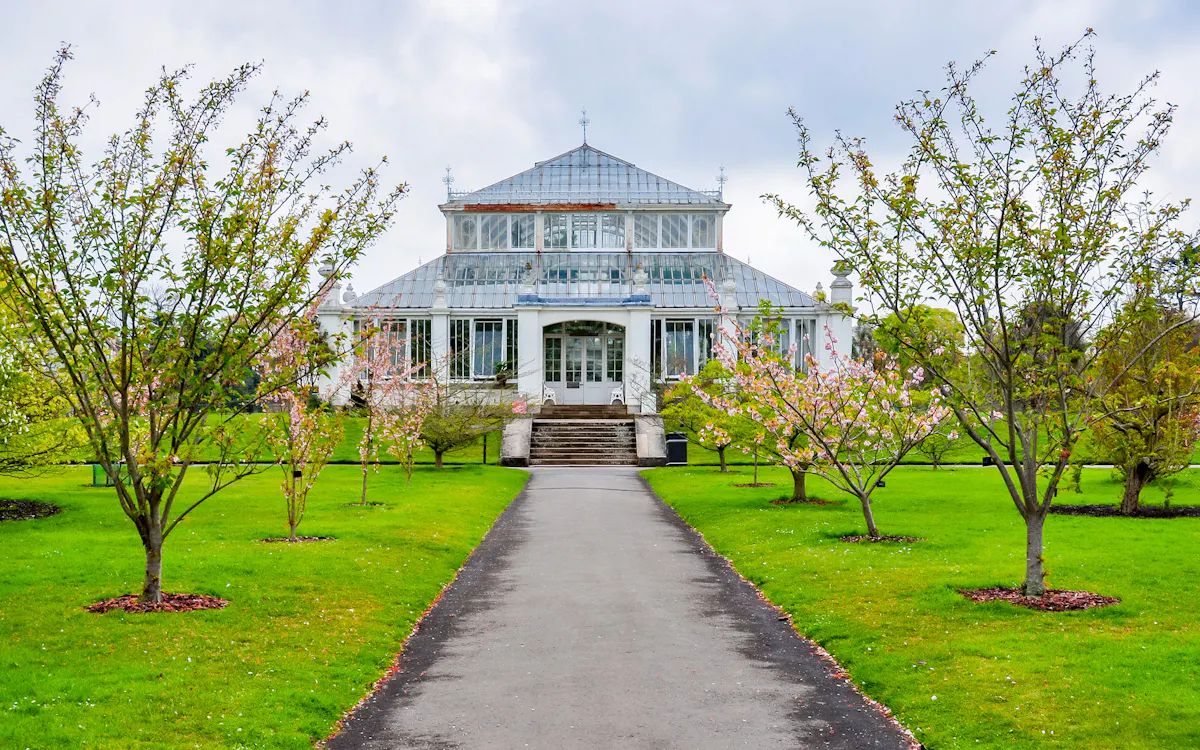
Top things to see at Kew Gardens
1 queen charlotte's cottage.
The 17th century cottage was a rustic retreat for the royal family to rest, drink tea or have picnics while visiting the gardens. The paddock adjacent to the cottage once housed many exotic animals including the first kangaroos to arrive in the country, now extinct quagga, a pair of black swans, and buffaloes. You can see the Queen’s own collection of Hogarth prints in the print room downstairs or view Princess Elizabeth’s, the Queen’s daughter’s floral and bamboo artwork in the tearoom.
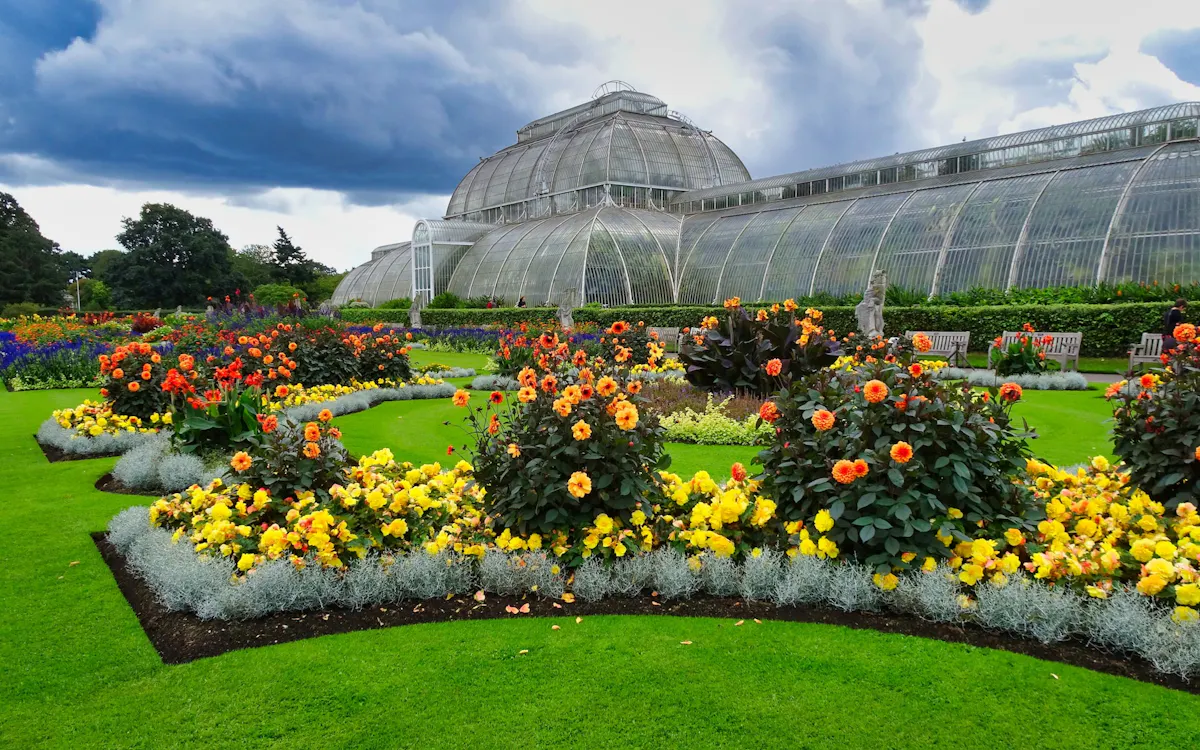
2 The Temperate Glasshouse
The glasshouse is home to the world’s rarest and most threatened temperate plants, including 6 species that are extinct and in the red list. The world’s largest surviving Victorian glasshouse covers a massive 4,880 square metres and its tallest peak is at 19 metres high.

With Chinese Chippendale railings and curved roofs, the chinoiserie building was entirely designed by the Swedish-Scottish architect Sir William Chambers. Built in the 18th century, it was a gift to Princess Augusta, who had employed him to construct many features in the garden. Offering the earliest and one of the best bird’s eye views of London, the Pagoda also holds exhibits on the building’s history.
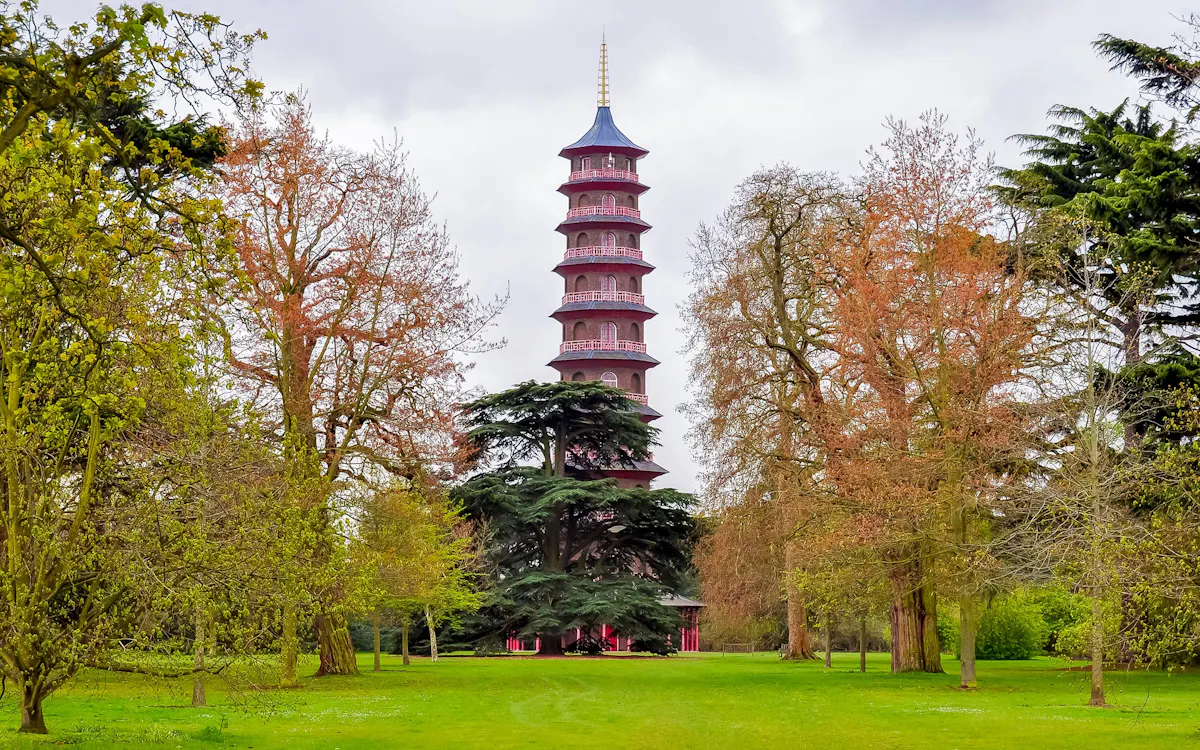
4 Xstrata Treetop Walkway
Offering a magnificent bird’s eye view of forest canopy, the walkway is one of Kew Garden’s most popular attractions, especially to those who love a kick of adrenaline. Standing 18 metres tall and 200 metres long, the walkway is designed to slightly sway in the wind to give a more immersive experience through the foliage.
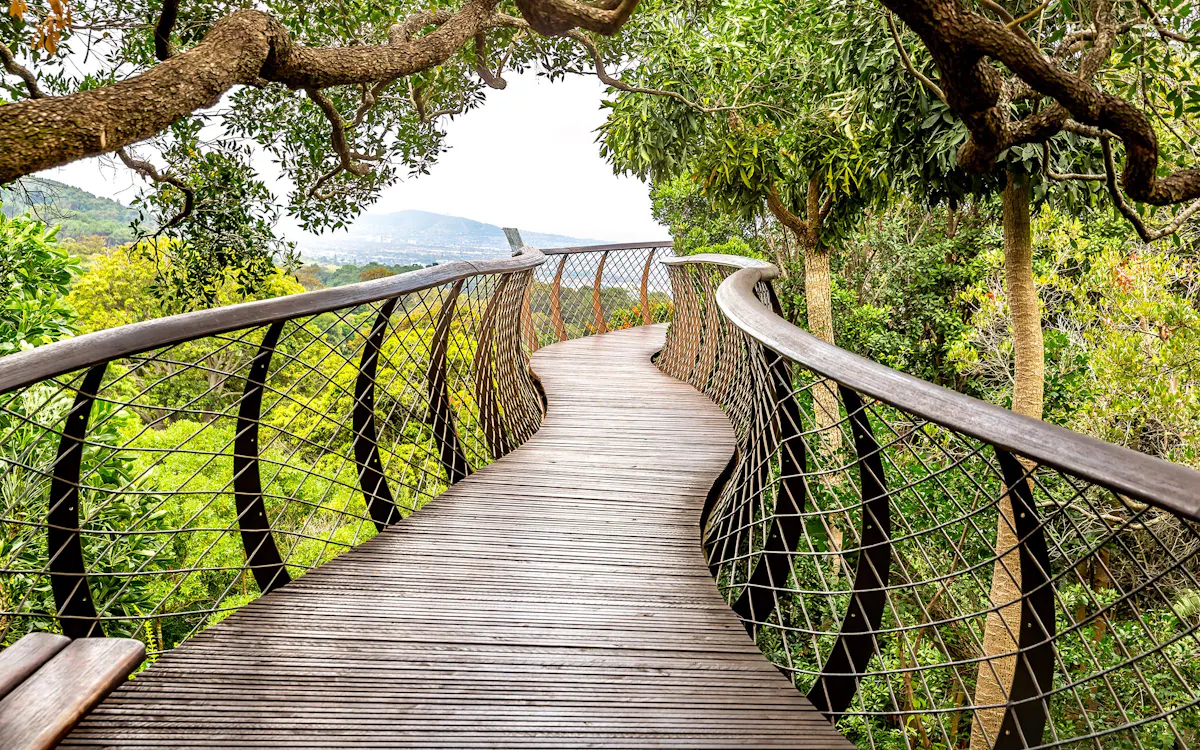
5 Palm House
Home to an exquisite collection of endangered and extinct plants including the cocoa tree or the African oil palm, you get to experience a slice of rainforest in the Palm House. Constructed in 1844, the greenhouse resembles an upturned hull of a ship as the architects borrowed ideas from the ship building industry to construct it. The humid environment inside creates the perfect environment for the lush plants and is home to the oldest pot plant in the world (more than 250 years).
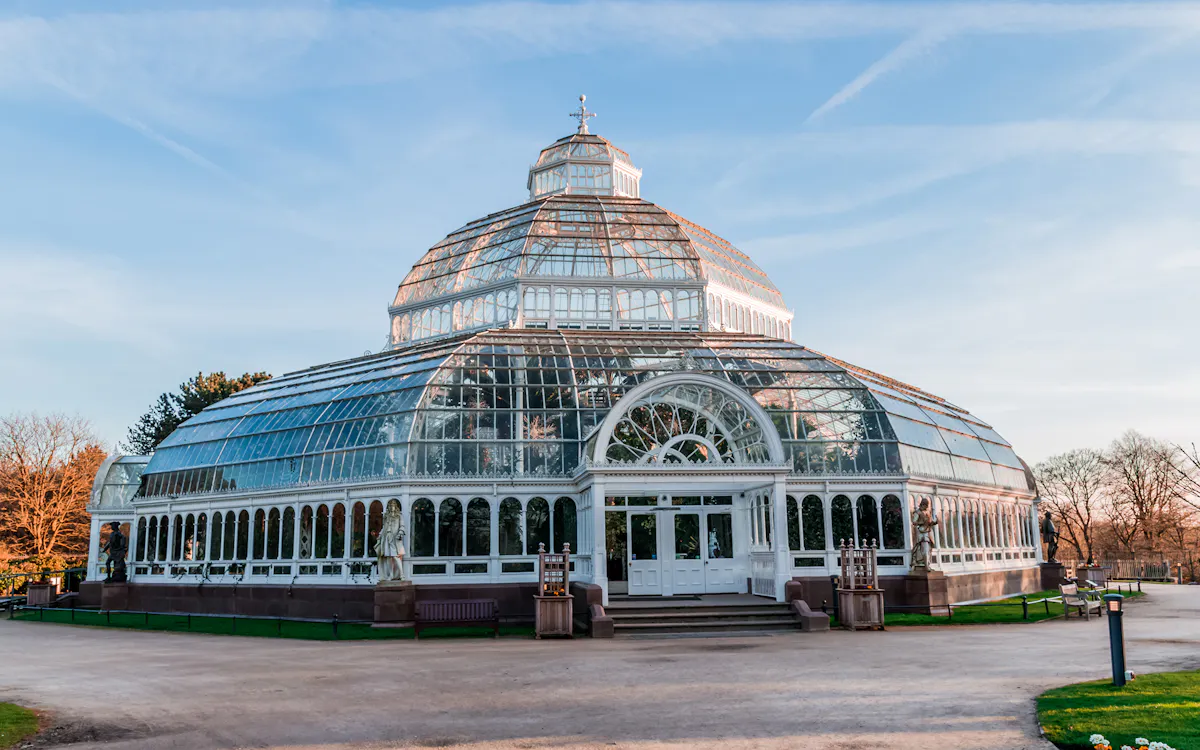
The mesmerising geometric installation, standing tall at a towering 17 metres tall, features an immersive visual and auditory experience recreating the life inside a beehive. With 1,000 LED lights that glow according to vibrations of bee and 170,000 aluminium parts, the structure mimics the real visual effects of an actual beehive in Kew Gardens. A calming and serenading symphony of vocals and cello, all in the key of C is played to create a soundscape inspired by the hum of the bees (Scientists discovered bees buzz in the key of C).
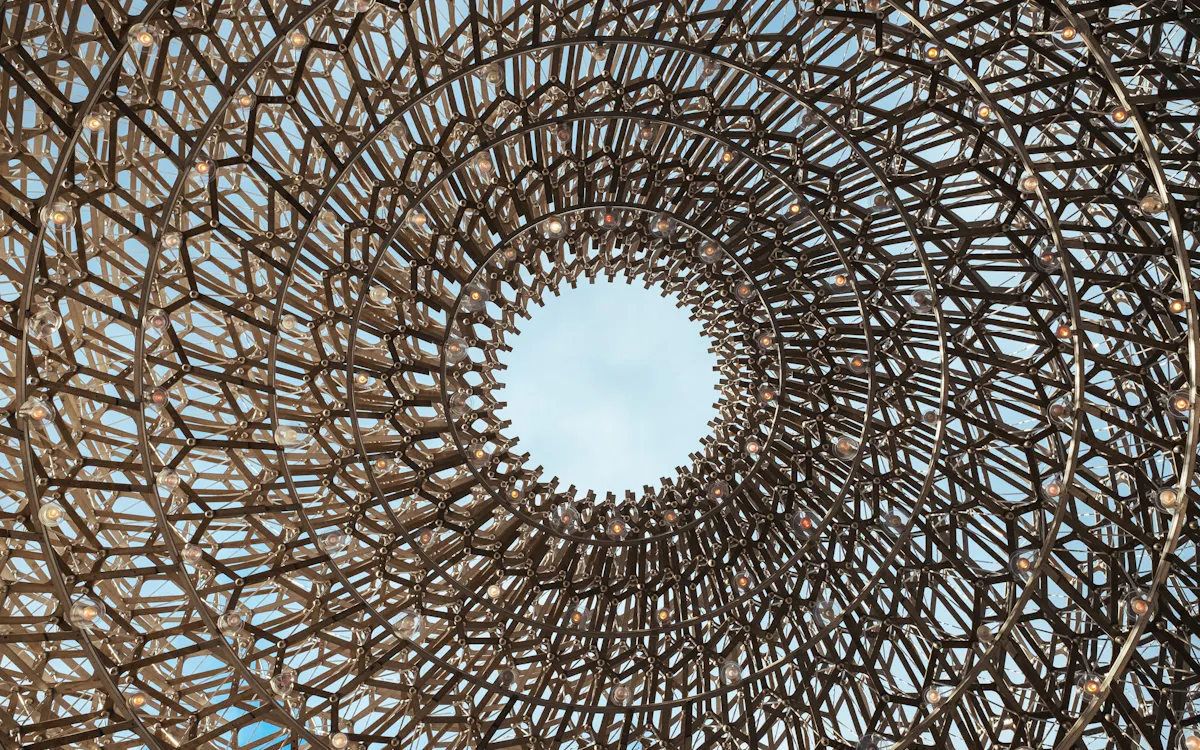
7 Kew Palace
Known as the smallest palace in the whole country, it was originally built in 1631 for Samuel Fortrey a silk merchant. The Dutch house is one of the few surviving structures in the Kew Palace complex, along with the former brewhouse, housekeeper's cottage, and kitchen. Except for the kitchen, all the structures are open for public. In the 1720s, George II and Queen Caroline lived there. Later the palace became a refuge for George III when he was experiencing mental illnesses and Queen Charlotte who was taken in ill and passed away in the palace. Reflecting the intimate life of the royal families, the palace is a tale in itself.

8 Waterlily House
Featuring a circular pond spanning over 10 meters, the Waterlily house is the most iconic and second oldest of Kew Garden’s glasshouses. This glasshouse was specifically made to breed the giant Amazon waterlily (Victoria amazonica). The pond is also home to the Santa Cruz waterlilies (Victoria cruziana) known for its floating large lily pads which can grow up to 2 meters in size. In summer, you will be able to spot lotus, papyrus and more.
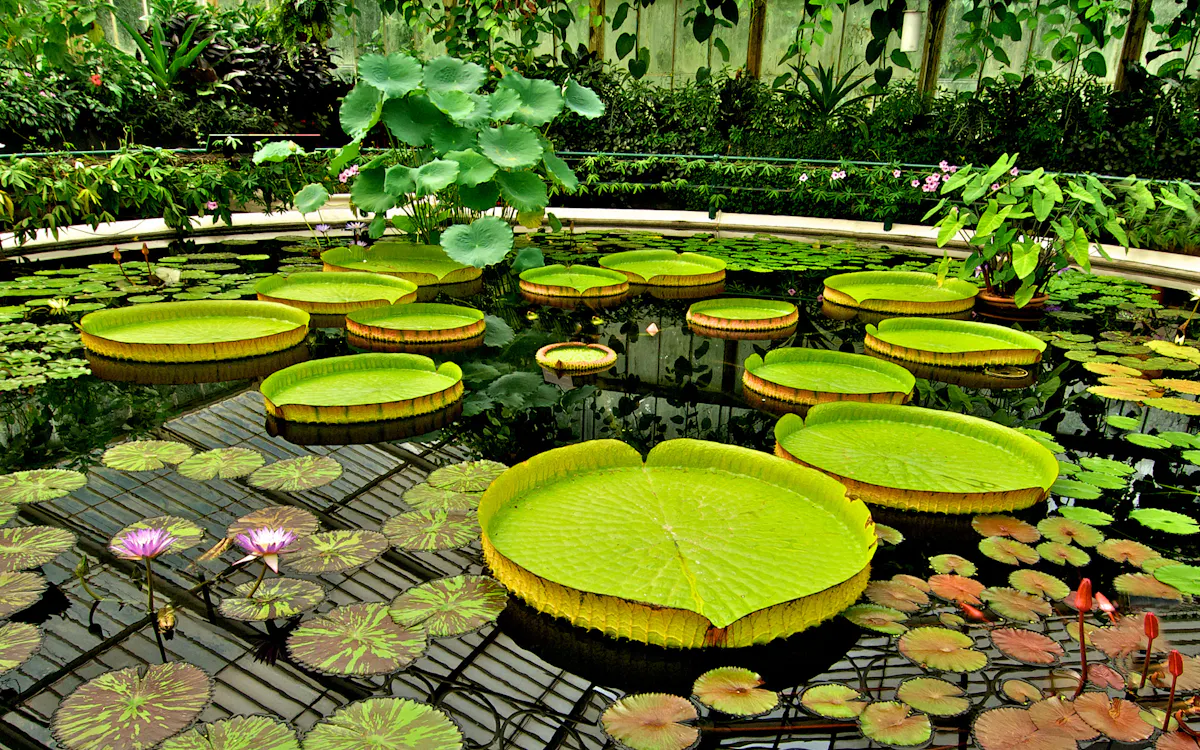
9 Davies Alpine House
Housing the Alpines, usually found in the mountaintops or the earth’s poles, these plants grow in extreme cold. The Davies Alpine House was designed to recreate these same extreme conditions, using two back-to-back arches to draw warm air out of the building. The glasshouse is known for its sustainable structure and energy efficient environment created using biomimicry techniques, inspired by the passive cooling found in termite mounds.
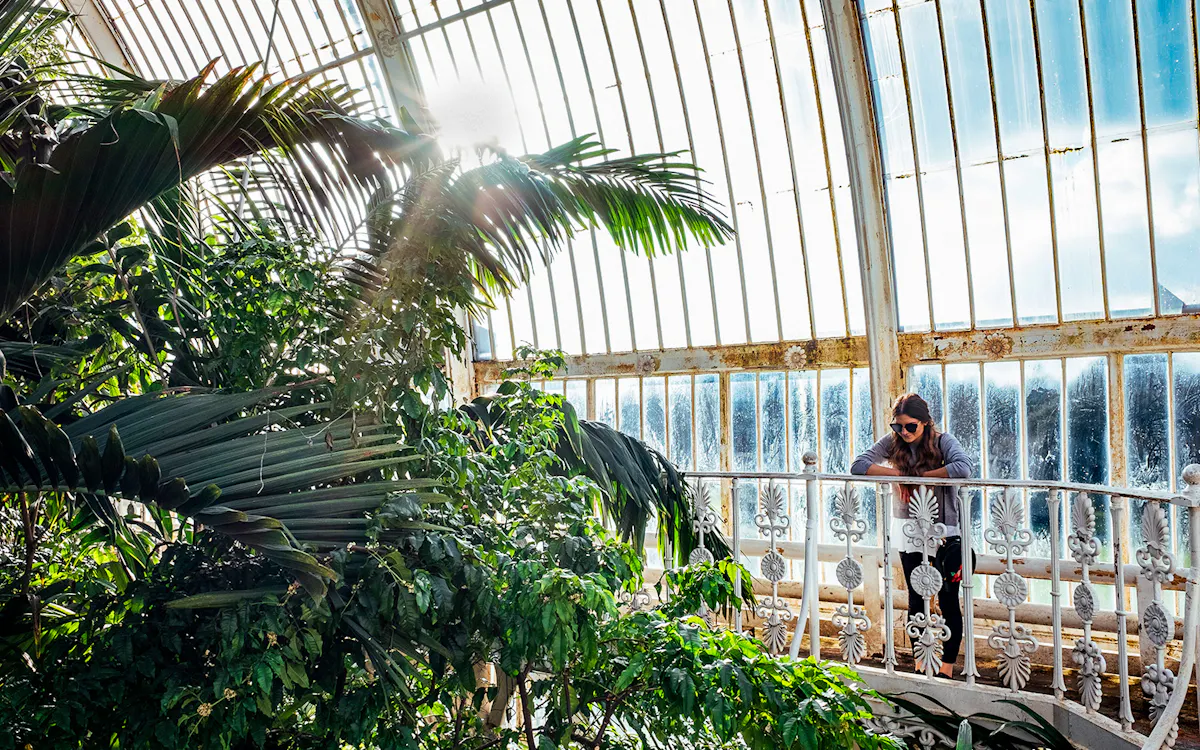
10 The Princess of Wales Conservatory
Opened in 1987 by Princess Diana, the conservatory boasts of 10 different climatic zones, taking you through a series of captivating ecosystems. Spanning over 4500 meters, the conservatory has recreated computer-controlled tropical rainforests to arid deserts in the glass structure. From Venus flytraps to bright bromeliads, the conservatory is home to all types of plant species.

Map of Kew Gardens
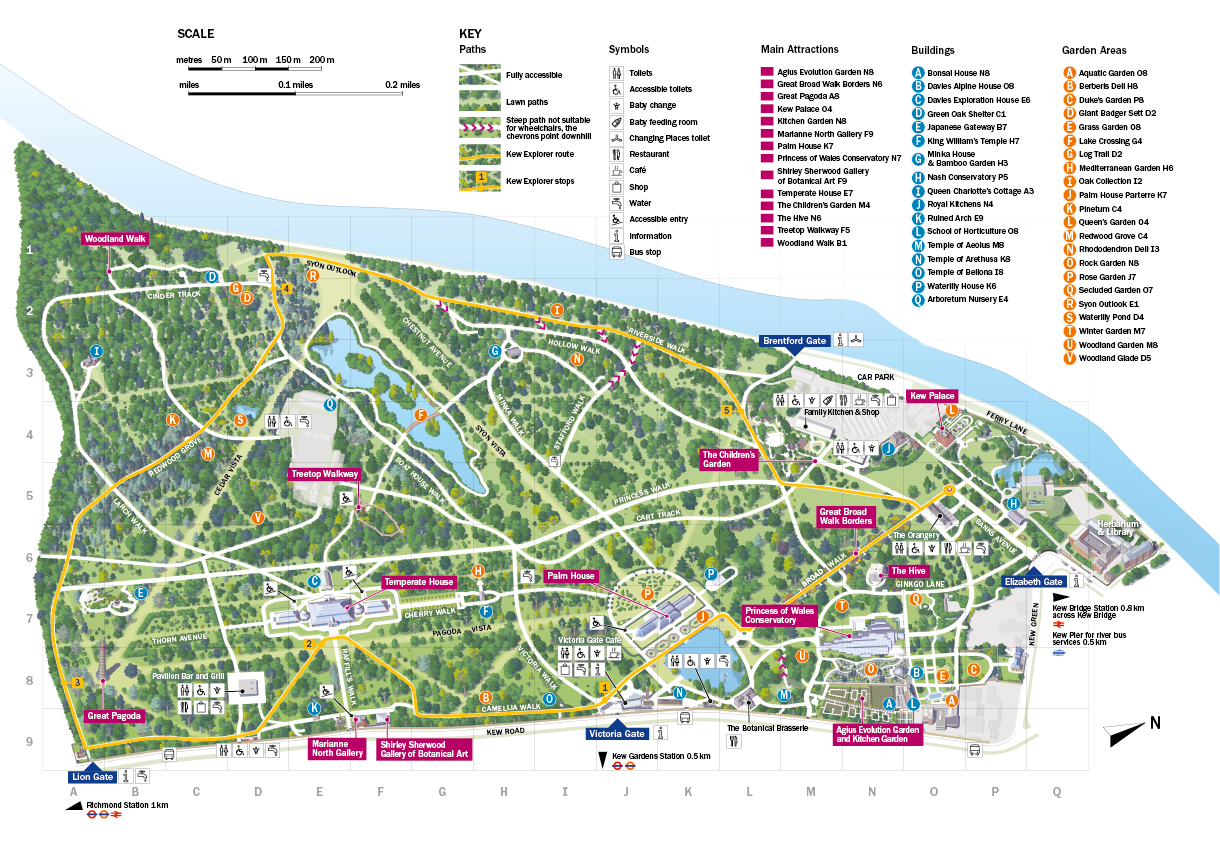
Facts you probably didn't know about Kew Gardens
- Kew Gardens contain a part of old London Bridge. The four granite blocks placed of the banks of the lake near the Sackler Crossing were once part of the 19th century bridge.
- The loneliest plant in the world, the Encephalartos woodii resides in the Kew Gardens. Found all alone in the Ngoya Forest in southern Africa by the botanist John Medley Wood, the tree was once munched by dinosaurs.
- The Kew Gardens are the most biodiverse place in the entire planet earth owing to its diverse collection of flora.
- Initially designed as a temporary exhibit for the UK Pavilion at the 2015 Milan Expo, the Hive found its final home in the Kew Gardens.
Best recommended tours to the Kew Gardens
Below are the tickets and tours to the Kew Gardens via the Headout app, for a seamless and stress-free booking experience.
Restaurants in Kew Gardens
Here are the top three places to eat at inside the Gardens.

Sporting the Charlie and the Chocolate Factory meets botanical lab looks, this restaurant is meant to make visitors feel as if they have shrunk into tiny creatures beside the fungi sculptures and giant apple seats. The whimsical restaurant offers stone baked pizza (customisable), salad bar, artisan sandwich station, ice cream booth and more. It is a fun place to hang out with kids and a definite visit for design junkies and sustainable interior enthusiasts.

Giving a sleek and modern feel, the steel frame along with the outdoor seating located amid the Arboretum, a unique landscape of 14,000 trees gives a calming picnic-in-the-trees vibe. The mid-range eatery features pork belly ribs, spatchcock chicken and vegan patties, all infused with the herbs from the Kew Garden itself. Though not cheap, they do offer a children’s menu and a family sharing platter. Find on Map >
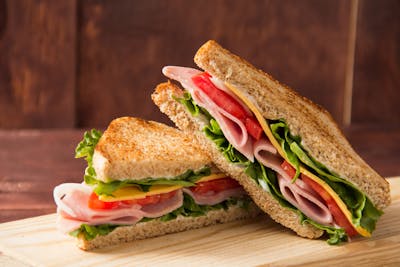
The 18th-century building is sure to captivate you with its high ceilings and arched windows, along with the view from the terrace. The restaurant offers pastries, selection of sandwiches, freshly squeezed juices and more. Built in 1761 by architect Sir William Chambers, the teahouse is perfect for the British afternoon tea experience.
Accessibility at Kew Gardens
- Kew Gardens are susceptible to overhead noise due to its proximity to the Heathrow Airport flight path. Those with sensory disorders, noise sensitivity, etc would be advised to carry earplugs or headphones to avoid disturbances.
- 8 disabled car parks are available near the Brentford Gate, and 2 to the right of the Elizabeth Gate.
- There are unisex accessible toilets in all the washrooms.
- Brentford and Victoria Gates offer mobility scooters for hire, but they should be booked in advance.
- Only the Temperate House and Alpine House are the glassdoors accessible via wheelchairs/mobility scooters.The Princess of Wales Conservatory is partially accessible to wheelchairs during the Orchids festival.
- Kew Palace is accessible for wheelchair users, however small wheelchairs are required due the narrow paths inside.
- Though most of Kew Garden’s landscape is accessible via ramps, the following areas are not accessible with buggies - Queen Charlotte's Cottage, The Waterlily House, Xstrata Treetop Walkway, Galleries in both the Temperate House and the Palm House, The Waterlily House, The Aquatic Display in the Palm House , Queen Charlotte's Cottage, Kew Palace.
Good to know before visiting Kew Gardens
- Unless accompanied by an adult, children under the age of 16 are not permitted inside.
- Only adults with children are allowed inside the Children’s Garden(with a valid ticket).
- Visitors with disability can get a concession ticket.
- Carers accompanying visitors with a disability, such as registered blind and partially-sighted visitors can get in for free.
- Guide or assistance dogs (including those in training) can enter. Though make sure to have a lead or harness to identify them.
Insider tips
- Wear airy clothing, preferably a removable jacket as it can get really warm in the greenhouse.
- Wear comfortable footwear, as the walks around can be long.
- Do not forget to carry a good quality phone camera or your camera equipment with an empty memory card or those with lots of space to click enough pictures, and you do not want to miss on it.
- Do not hold yourselves back from spending the whole day there, in fact it is highly recommended.
- Though there are enough eateries around, don’t skip carrying snacks for your toddlers (and yourself) to munch on as the long walk inside may be tiring after a while (Food and drinks should not be taken inside the galleries).
- Some of the best picnic spots inside the Kew Gardens are - Next to the River Thames (marked as a viewpoint on the map), near the Waterlily Pond and in front of Queen Charlotte's Cottage.
Amal Karadi
Amal has always been fascinated by people, culture, and languages. She hopes to one day become a polyglot, and travel the world in order to learn as much as she can about different cultures along the way. Amal enjoys exploring museums and trying out new things.
Be a smart traveler
The first to know about trending destinations, travel deals, tips and all things travel.

- Tour Account ›
- Travel Forum ›
- Travel Forum
- Kew Gardens - Whe...
Kew Gardens - When to visit within May itinerary
I hope we'll see lots of spring flowers during our May 4-22 trip to England. We've yet to decide on our focus outside of the London area (will have some questions in another thread) but I do want to spend time at Kew Gardens. I also want to visit Richmond (I grew up in Richmond, BC, Canada--and we're Ted Lasso fans). Haven't decided if we want to visit Hampton Court this trip or perhaps with our history-thrilled daughter during a potential fall trip. What else is must see in that area?
I'm wondering about the difference in the display of flowers from when we arrive (May 5) to the latter part of our trip (May 18-21).
Should we visit Kew Gardens when we first arrive, or at the end? I just saw that the Chelsea Flower Show begins the day before we leave, so I'm wondering if local gardens will be more crowded with visitors in town for the big show.
It seems a stop in Kew/Richmond area might be a good way to settle in to the new time zone after arriving, but we arrive on a bank holiday. Would Kew be really busy on Monday, May 6?
Our other destinations may ultimately affect the placement of our Kew visit, but I'm especially curious about the blooms.
It seems to me that I read somewhere that 'members' can visit 2 hours earlier in the morning. If so, does it make sense to get a membership (so essentially about a 40 pound donation plus entrance) in order to visit early and with fewer people?
If we went at the beginning of our trip, from Heathrow, would it be strange to take our luggage on a boat ride into London after a night in Richmond/Kew area?
Thanks, Cheryl
CamAmCherie, I'm planning to visit Kew Gardens in March when I'm there, and posted a few questions here. I got some really wonderful responses about logistics but also about things to see and do and how to get to Richmond from Kew and so on. Here's a link to the thread:
https://community.ricksteves.com/travel-forum/england/please-check-logistics-of-day-trip-to-kew-gardens-and-richmond
Thanks, Mardee, I don't know why that didn't come up when I searched. I was sure that there'd been something recently---maybe it was much further down on my search and I didn't get to it.
I'll read through that, again. I'm guessing YOUR thread was one of the main reasons this was on my list----I should have just searched your posts but I hadn't thought of that.
The flowers in full bloom may vary over those dates.
We spent 3 weeks in London, from May 1 -24, a few years back, and went to Kew 3 times, one week apart. In part that was because we had different visitors staying with us, and they wanted to go. But also, it is too much to see in one visit, unless you spend the whole day there. And, things changed between the first and last visits. Most notably, the stunning display of azaleas and rhododendrons did not fully develop until mid May. But that can vary from year to year.
Ahhh. Just reread your thread, Mardee, thanks again for linking. It's all coming back, the Great Vine, the 'A Lady in London'...there was so much in your thread that got me excited last November.
Last night I was looking at accommodation in Richmond, so it was fun to reread your thread and recognize the hotels mentioned.
I was thinking it might be good to go directly from Heathrow (so glad to reread Rebecca's mention of the Blackberry Cars), visit Richmond that day (Sunday) to walk off the flight, visit Kew the next day, and maybe even spend some more time in the area on the Tuesday before heading to London or wherever else we settle on. I'm sure I would be happy for a daylong Kew visit, but I'm guessing my husband may time out before. He can bring his Kindle 😉
Richmond would also be a good addition to a trip with our daughter and partner as we all watched Ted Lasso together before they moved to Seattle....
Choices, choices.
Thank you, Lola, I was wondering if we should keep 2 visits in mind. I don't know how many times we will be visiting in the spring, so I want to maximize views of gardens!
May weather can be variable - I have known snow and sleet, and I have known heat waves.
Flowers, other than the Great Broad Walk Borders, aren't really the thing at Kew as you walk around. Yes, there's a fabulous rose garden - probably not doing much at the beginning of May, perhaps a bit more towards the end with the big flourish in June, and plenty of all sorts of flowers in the various greenhouses and other buildings https://www.kew.org/kew-gardens/whats-in-the-gardens Depending on the weather the borders may be getting on well by mid May.
Kew is about the specialist collections, ever so well displayed,of all sorts of plants, from towering redwoods to tiny alpines.
The place is vast so best to set a plan and visit a few areas each trip. Consult the map and try to tie parts together logically. https://www.kew.org/kew-gardens/visit-kew-gardens/map
I have never approached Kew or Hampton Court by boat so cannot speak to the experience, nor how strange they would find luggage.
I'm sure I would be happy for a daylong Kew visit, but I'm guessing my husband may time out before.
Ha ha, just park him in a cafe while you stroll around. And I agree with Nigel about the flowers. It would be lovely to see them, but I think there will be a lot to see in mid-March and even more when you're there! BTW, Kew does open early for members after May 1. https://kewtw9.org/kew-gardens-early-opening-for-members/
Re: baggage; not sure about the boat but you could always email them at [email protected] and ask. And there is no place to stash luggage at Kew; however, there are some Stasher locations nearby .
FWIW, I love Hampton Court Palace, and I plan on going this trip, but will also be bringing my 2 grandkids here next year for them to enjoy. I think any history loving young person would love it!
Thanks, Nigel and Mardee. It will be hard to decide where to place our focus.
For me I would always choose Hampton Court over Kew. It’s a place with so much history and therefore extremely interesting if you like that kind of thing. Kew is nice but I’m not really interested in plants and gardening, it’s very flat and doesn’t have the sweeping vistas of the grand country house gardens. It’s more like a museum of plants. I’m sure others will disagree!
a thought about flowers and Kew and Hampton Court Palace
Hampton Court is so much more than the buildings - although they are incredible. If you walk towards the Tiltyard before the main entrance (but still ticketed) you get to the Rose Garden and then the Kitchen Garden, both special.
After walking through the most direct route through the palace you come out into the Great Borders - hundreds of metres of formal borders. By mid-May they should be on full strength. Then follow the building around clockwise and there is garden after garden, and all are different and all will be trying their best by then too.
What I am trying to say is, if you want flowers and flower gardens you won't go far wrong at Hampton Court Palace.
If you want magnificent plant specimens and fabulous trees and shrubs and unique items and love trees (and Chinese Pagodas and tree walks and Badger setts for humans and a Royal Palace for days gone by, Kew has it all.
You can't go wrong with either but they are significantly different.
I love - and belong to - both.
ps. Food's better at Hampton Court IMHO
I think Helen's on the money with "museum of flowers". One of my first jobs many years ago was scanning Kew's archive of photos on slides. They have a lot of real global rarities and still do some good work in conservation I believe.
Thanks, also, Helen, Nigel and Gerry. I am excited to see Hampton Court, too.
We went to Kew by boat from Westminster Pier-an absolute must-do. It was much more enjoyable than the narrated Thames tour. We took the Tube back to London after our visit to Kew.
Thanks, Cala Is there only one boat company from Westminster Pier? Or, which did you use? I wonder if the trip from London is better viewing than the return trip to London? We're still trying to decide if we use our reservations in Richmond for our first 2 nights after landing or squeeze both Richmond and Kew into 1 day trip from London.
Hi Cheryl, We bought Kew memberships prior to our 2022 visit. The getting in early option was attractive to us as photographers. Note that the associated free Kew magazine that comes with memberships is world-class. It comes bi-monthly and there was never a duff issue nor a single duff page! Fantastic quality mag.
One could combine a Kew visit with a lazy walk along the Thames Towpath. Richmond is an absolute must on several levels. If you are into flowers then the Isabella Plantation section of Richmond's park will be worth your time.
Btw, we thereafter wrote a looooooooong trip report-cum photo essay titled 'Back to Brick: a London TR.' Over on Fodors, I go by 'zebec'. One could simply Google 'zebec Fodors Back to Brick'. Lots of floral imagery (Kew plus otherwise), music, humour and plenty more. cheers I am done. The end.
Thanks, gregglamarsh, for all that information. I'm looking forward to looking at your report.
Please do not reply to violations of our Community Guidelines .
Subscribe to be the first to get new family travel inspiration Sign up today!

MUMMYTRAVELS
Can you really keep travelling with a child in tow?
Subscribe to be the first to get new family travel inspiration
Tips for visiting Kew Gardens with kids
My daughter’s first visit to the Royal Botanic Gardens at Kew came when she was a few weeks old – and I’ve now got almost a decade of visiting Kew Gardens with kids behind me.

Living nearby, she’s been back countless times as a toddler, pre-schooler and beyond, we’ve been to Kew during every season, to special exhibitions, the children’s playground (scroll down to see how to book tickets for the Children’s Garden) and simply to get out of the house.
Because it’s a fantastic place to explore as a family and should definitely be on any list of London attractions with kids . I still wouldn’t say we’ve explored every corner and with new additions and reopenings in the gardens, there’s always something new to discover – so if you’re planning a day out, here are my top tips for visiting Kew Gardens with kids.

Contents - click to jump to a section
Kew Gardens are big – at 300 acres, I mean really big. Even as an adult, you’d struggle to tackle the whole botanic gardens in one visit, so it’s best to focus on a few key places – you can see the highlights if you click here.
You can also download a map before you go as well as picking one up at the entrance.
Whatever time of year you visit, there’s always something to see too – as well as constantly changing exhibitions and activities, there’s something different in bloom. Information boards by the entrances, including the Victoria and Elizabeth Gates usually have details although staff are around to offer tips as well.

Which gate at Kew Gardens?
There are four gates into Kew Gardens – the Victoria Gate is the main entrance with most ticket booths but also the biggest queues. The Brentford Gate is closer to the Children’s Garden playground and the car park.
The Lion Gate and the Elizabeth Gate tend to be quieter – the latter is relatively close to the Children’s Garden too, the former is a bit further from most main sights apart from the pagoda and Temperate House.
If you’re planning a full day and lots of exploring, you could start anywhere. If you’re visiting Kew Gardens with toddlers or younger kids, you might want to choose your gate carefully if you’ve got a short visit or to avoid wearing them out just getting to your highlights.
Don’t take a scooter
As you’re planning your day out, it’s worth knowing that you can’t take scooters and bikes into Kew with kids – that includes micro-scooters, balance bikes, plus roller skates, skateboards, tricycles.
Basically if it has wheels (unless it’s a wheelchair or pushchair), you’ll need to leave it at the gates. There is space to lock them up but unless you’re using them to get to Kew Gardens, it’s best not to bring them at all.
If you want to see more than by walking alone, you can also take the land train on its loop to explore. It’s an extra £6.50 for adults, £2.50 for kids (tickets available by the Victoria Gate, where the train starts).
There are five stops and it runs hourly from 11am – although that can change, so check at the gate.
Your tickets are valid all day and you can get on and off at the different stops. It’s worth checking before you book as it’s sometimes out of service to be repaired.
There’s only limited room for folded buggies and pushchairs on board too.

Book tickets in advance
You can now get tickets at the gate but it’s a good plan to prebook during busy periods, with hour-long entry slots available. You’ll also get the cheapest rate if you prebook tickets .
Ordinarily if you book your tickets to Kew Gardens online instead of buying at the gate, you save at least a couple of pounds, and almost £5 during peak months – plus you can usually skip the queues, which is especially handy if you come in at the Victoria Gate.
Adult tickets cost from £11 off-peak if you book in advance (or £12.10 including gift aid donation), from £15 in advance during peak season (or £16.50 with gift aid). Children aged four to 15 cost £4-5. There are also family tickets from £23.
You can see the complete list of prices online here including concessions.
Membership to become a Friend of Kew costs £74 per year including entry for one family guest, and you also get 10% off tickets if you have Historic Royal Palaces membership.

Book tickets for the children’s playground
The Children’s Garden, as the Kew Gardens play area is called, has been hugely popular since it first opened and happily you can now book tickets to the children’s playground before you visit.
Currently tickets must be prebooked at the same time as general entry, with timed entry slots, and no additional charge.
Designed around the life of plants, each of the four areas is themed differently, so you can explore ‘air’, ‘water’, ‘sun’ and ‘earth’ – the water element was switched off during the pandemic, and hasn’t yet been turned back on (as of April 2022).
Aimed at kids aged two to 12, you’ll find everything from trampolines to climbing equipment, slides and a canopy walk-way around a huge old tree.
There’s still the chance of picking up a ‘standby’ ticket on the day, but with limited numbers, it’s far better to prebook. During the booking process, after choosing your timed tickets to Kew Gardens themselves, you can choose timeslots for the Children’s Garden before checking out.
Entry is free and you select an hour-long slot to go into the children’s playground – every child needs a ticket, and up to two adults can go in per child ticket.
Adults – for obvious reasons – can’t go into the Children’s Garden without a child.
Tickets are available as far in advance as general booking slots, so you can organise visits months in advance.

You’re advised to be at the Children’s Garden entrance shortly before the timeslot starts, and tickets can be scanned from paper or a phone. Once the gates open, you’ve got the full 60 minutes to play with a 10-minute warning before the hour is up – you can leave early if but can’t get back in again if you do.
Depending how busy it is, you may still be able to go in on the day: there’s usually a separate standby queue at peak times, which runs along the side of the garden (the queue for ticket-holders stretches along the path).
If you visit out of peak season and during term time, there’s often space if you just turn up to the garden but slots often get snapped up at weekends and in holiday times so it’s worth asking staff at the gate. Either way, the earlier you try, the better.
Parking at Kew Gardens
Depending whether you visit at quiet times or on a busy day, you can find free parking at Kew Gardens – or end up driving around in frustrated circles. I’ve done both!
There’s also parking on the side streets at all times except 10am to noon on weekdays when it’s residents only – as long as you can find a space, of course – or on the roads closer to Kew Bridge, around a 10-minute walk away from the Victoria Gate. Again, the earlier you get there the better, especially at weekends.
The car park at Ferry Lane costs £7 for the day – Brentford Gate is the closest to this. The machines are currently credit cards only, and you can use contactless but will still need to press a few buttons to get a ticket.
The old overflow spots on the grass verges are now within the pay and display area.
The former free parking on the main road by the Lion Gate and Victoria Gate has been removed as there’s now a cycle path along the road, part of the council’s attempts to reduce the number of people driving to Kew Gardens.

How else to get to Kew Gardens with kids?
The Kew Gardens tube station is on the Richmond branch of the District Line and the London Overground, and it’s only around a five minute walk from the Victoria Gate
Trains from Waterloo and Clapham Junction stop at Kew Bridge station, on the other side of Kew Bridge itself, which is around a 10 minute walk from the Elizabeth Gate.
You can also get bus 65 which travels between Ealing and Kingston, and which stops almost outside – it’s not London’s fastest bus route though!
Where can I eat at Kew Gardens with kids?
If you bring your own food with you, you can eat pretty much anywhere, although you are asked to stick to grassy areas (and definitely don’t bring a barbecue).
It’s a fantastic place for a picnic – one of my favourite spots is along the Cedar Vista near the Woodland Glade where you can often spy peacocks, as well as the benches on the riverside walk looking out over the river, or by the lake and Palm House (usually joined by curious geese). But almost any corner works perfectly.
There are also several cafes and restaurants dotted around the gardens – the new Family Kitchen has some great pizzas and fun themed areas, and there are often pop-up stalls by the Orangery, as well as food inside.
The Victoria Gate café is also good for a snack and cake, although it can get busy. The old White Peaks cafe now appears to be closed, with the Family Kitchen nearby having replaced it.

What are the best things to do at Kew Gardens with kids?
Currently the gardens themselves are completely open although some of the attractions within the grounds do close from time to time – for the latest list of what’s closed at Kew Gardens, click here .
The Children’s Garden
The Children’s Garden is easily the highlight if you’re visiting Kew Gardens with kids – and it really is an impressive play area.
Designed for ages two to 12, there’s plenty for different ages depending how adventurous your kids are – and the limited numbers mean it shouldn’t be too busy.
The areas are divided into the four themes of Earth, Water, Sun and Air with plenty of options to experiment, to get active and to play with more traditional equipment as well as quirkier options.
My daughter loved bouncing on the mini trampolines and some of the climbing equipment but also scrambling up and down a hill, which I’m fairly sure was just part of the landscaping, enjoying the colours in Sun, and taking to the slides and sandpits.
The water area also offers plenty of opportunities for kids to get absolutely soaked (intentionally or unintentionally!) when the water is running.
The old Climbers and Creepers soft play is now closed, replaced by the Family Kitchen restaurant

The Hive is a fascinating installation, designed so that LED lights and the sounds you hear all change in response to a real hive elsewhere at Kew.
It’s a full-on sensory experience as you walk inside, as well as helping older kids to learn a bit more about bees.
As well as marvelling at the geometric structure, there are information boards on different bees on the hillside, whose flowers are part of the installation attracting real insects.
The Treetop Walk
On the other side of Kew Gardens, the treetop walk is another fantastic one for kids, as long as they aren’t scared of heights. The sides are high enough that it’s safe for toddlers too.
You can’t take buggies up, and they have to stay at the base of the structure, but there is a lift to the top as well as stairs ( the lift is currently being replaced and therefore out of action ).
Walking around in the canopy of the trees 18m above the ground has wonderful views, both across the gardens and out across London too – you can see as far as the Docklands on a clear day.

The Natural Area
This area of Kew, near the Thames and at the top of Syon Vista, was donated by Queen Victoria on the condition that the area remains in a wilder, untamed state.
There’s a lovely woodland walk – perfect in Spring when you can see bluebells under the trees – as well as a great log trail, made from boughs, branches and trunks which have fallen naturally during storms.
Some are carved – judge for yourself if they’re crocodiles, dragons, snakes or sea monsters – and it’s huge fun to scamper, balance and hop across stumps and logs.
There’s also a giant picnic table and bug hotel, while this area is home to the giant badger sett (temporarily closed) as well as Queen Charlotte’s cottage (also temporarily closed). Watch out for the carved wooden bear as you explore too.

The Great Pagoda
After a major restoration, you can now climb to the top of the Great Pagoda (ages five and above only).
It’s 253 steps with an extra charge – £4.50 for adults, £3 for kids and there’s a 30-minute timeslot for the tickets.
Friends of Kew get a 10% discount, and Historic Royal Palaces members can enter free (and get a 10% discount on Kew Gardens tickets).
It’s also worth checking that the pagoda is open before you go, as it does close during the winter months.
Even if you don’t want to go above ground level, it’s fun to spot the dragons on the roofs, replacing the original 18th century ones.

The Palm House
A favourite option when it’s a cold day, the palm house is always tropically warm – though be prepared to carry everyone’s coats once you step into the humid surroundings.
Inside, there’s the oldest pot plant in the world, the surprisingly named suicide palm and plants which were around when dinosaurs roamed the earth.
The waterlily house nearby is also fun to spot the floating lilies.

The Princess of Wales conservatory
The third largest glasshouse in the gardens (the recently reopened temperate house is the other in the trio), the Princess of Wales conservatory is also the newest.
There’s another lily pond with fish here, as well as some carnivorous plants and cacti. It’s not as hot as the palm house, but still warmer than outdoors on a drizzly or cloudy day, and often has displays from the special exhibitions inside or nearby.
The Temperate House
Reopened after a major renovation project, the Temperature House is a lovely place for a stroll – packed with 10,000 individual plants, there are 1,500 species in total from Africa, Australia, New Zealand, the Americas, Asia and the Pacific Islands.
As well as orchids and quirky Kaka Beak plants (which look just like brightly coloured bird beaks), you can find other eye-catching options like Golden Lotus banana, as well as a little waterfall splashing in the background.

The Rhododendron Dell
Although there’s less specifically to see here at the western edge of the gardens near the Thames, it’s a lovely walk especially when the rhododendrons are in bloom. Lots of twisty little paths weave through the bushes and it brings you to the riverside walk.
From here you can see Syon House across the river Thames and work your way back along Syon Vista or the Cedar Vista. There’s a point where you can look down both for some spectacular views.
And if your kids still need to burn off any energy, challenging them to a race along the open green space of the vista always goes down well. Probably because I can’t always beat my daughter any more!
Venture a bit further into the western corner from the two vistas and you can get to the Natural Area, including the woodland trail too.

Other highlights
There’s so much to see at Kew Gardens with kids that you’ll be hard pressed to fit it all into one visit – especially not if you’re exploring with younger kids.
But it’s well worth making a stop at the Japanese landscape near the Great Pagoda, with its beautiful rock gardens and peaceful atmosphere, as well as the bamboo garden by the Minka House

Walk around the lake where you’ll spot geese and often huge pine cones under the trees, and wander across the Sackler Crossing bridge for some lovely views.
There are some lovely grassy paths as well as the paved options, including Pagoda Vista, Syon Vista and Cedar Vista as another route through the gardens.
Closer to the Elizabeth Gate, you can stroll through the Kitchen Gardens – one area which often gets overlooked during a visit.

Special events and activities at Kew Gardens
There are always additional family activities and special events taking place in the gardens too, so check what extra trails are running before you visit. This Easter saw a trail themed around the Very Hungry Caterpilla book, while the previous year’s activity was inspired by the Beano – check out my review of Dennis and Gnasher’s Big Bonanza
Over the years, there’s also been the Chihuly: Reflections on Nature trail of glass artworks, just as fascinating for younger visitors as older ones, while we’ve also seen Shaun the Sheep , discovered the world of spices and checked out Plantasia , to mention just a few.

There are also special events throughout the year – Christmas at Kew with the illuminated trail, usually runs on dates from November to January.
It normally sells out quickly but if you book in time, there are sessions starting at 5pm, so it’s an option even with younger kids.
There are often child-friendly performances during the summer as well, including outdoor theatre.
So even if you’ve been countless times in countless seasons, you’ll quickly discover that you never run out of things to do at Kew Gardens with kids.
*first published 2020, updated 2022*
PIN LATER: TIPS FOR KEW GARDENS WITH KIDS

Images copyright MummyTravels
Award-winning family travel blogger and mum to the mini traveller, aka Minnie. Together we've visited Europe, America, the Caribbean, Africa and Asia, tried a cruise and a road trip, and survived countless long-haul trips. London (UK) based. Serious beach habit.
Leave a Reply Cancel reply
Your email address will not be published. Required fields are marked *
This site uses Akismet to reduce spam. Learn how your comment data is processed .

Explore the Beauty of Kew Gardens and Other Must-Do Activities in London
L ondon is a bustling metropolis that offers visitors a wide range of attractions and activities. Among the top things to do in London is visiting the world-renowned Kew Gardens. In this article, we will explore what Kew Gardens has to offer and other must-do activities in London.
11 Must-Do Activities in London:
Kew gardens.
Kew Gardens is a botanical garden located in southwest London. It was founded in 1840 and is home to the largest and most diverse collection of living plants in the world. Kew Gardens covers 330 acres and is a UNESCO World Heritage site.
Kew Gardens offers a range of attractions and activities that cater to visitors of all ages. Some of the must-see attractions at Kew Gardens include the Temperate House, the Palm House, the Princess of Wales Conservatory, and the Kew Palace. Visitors can also explore the Treetop Walkway, which offers stunning views of the gardens from above. The gardens also host a range of events and exhibitions throughout the year, including the Orchid Festival and the Christmas at Kew event.
Ticket Information
Tickets to Kew Gardens can be purchased online. Prices vary depending on the time of year and the type of ticket. It is recommended to book tickets in advance to avoid queues and secure your preferred time slot.
Visit the British Museum
The British Museum is one of the oldest and most important museums in the world. It houses a vast collection of artifacts and works of art from all corners of the globe, including the Rosetta Stone and the Elgin Marbles.
Take a Walk Along the Thames
The River Thames is the heart of London and offers stunning views of the city’s most iconic landmarks, such as the Tower Bridge, the Houses of Parliament, and the London Eye. Visitors can take a leisurely stroll along the Thames Path or hop on a river cruise to see the sights from the water.
Explore the West End
The West End is London’s entertainment district and is home to some of the world’s most famous theaters, such as the Royal Opera House and the National Theatre. Visitors can catch a show or simply soak up the buzzing atmosphere of the area.
London is one of the most vibrant and diverse cities in the world, offering a plethora of activities for locals and tourists alike. From world-class museums to iconic landmarks and unique experiences, there is no shortage of things to do in London. In this guide, we have compiled a list of the top things to do in London to help you make the most of your visit.
The British Museum is one of the oldest and most important museums in the world, with a collection spanning over two million years of human history. Among its treasures are the Rosetta Stone, the Parthenon sculptures, and the mummies of Ancient Egypt. The museum offers free admission, although some special exhibitions may require a ticket.
Explore the Tower of London
The Tower of London is a historic fortress located on the north bank of the River Thames. It has served as a royal palace, a prison, and a place of execution throughout its history. Visitors can take a tour of the castle’s rooms and see the Crown Jewels, including the world-famous Koh-i-Noor diamond.
Take a Stroll in Hyde Park
Hyde Park is one of the largest parks in London and a favorite spot for both locals and tourists. The park offers a range of activities, including boating on the Serpentine Lake, horse riding, and cycling. Visitors can also enjoy a picnic or take a walk to see the park’s monuments and memorials.
Visit the Tate Modern
The Tate Modern is a contemporary art museum located on the south bank of the River Thames. It houses a vast collection of modern and contemporary art, including works by Picasso, Warhol, and Hockney. The museum offers free admission, although some temporary exhibitions may require a ticket.
Take a Ride on the London Eye
The London Eye is a giant Ferris wheel located on the south bank of the River Thames. It offers stunning panoramic views of the city’s landmarks, such as the Houses of Parliament, St. Paul’s Cathedral, and Buckingham Palace. Visitors can take a standard ride or opt for a private capsule with champagne and canapes.
Visit the West End
Go shopping on oxford street.
Oxford Street is one of the busiest shopping streets in the world, with over 300 shops, including flagship stores of major brands. Visitors can shop for fashion, cosmetics, and souvenirs, or simply enjoy the festive atmosphere of the street.
London is a city that has something for everyone, from history and culture to entertainment and nature. Whether you are a first-time visitor or a seasoned traveler, exploring Kew Gardens and other must-do activities in London is sure to make for an unforgettable experience.
- Delay Repay |
- Accessibility Tools
- You are not signed in
- Buy tickets You have no items in your basket
- Cheap ticket alerts
- Rangers and Rovers
- Flexi Season ticket
- Weekly season ticket
- Monthly season ticket
- Monthly plus season ticket
- Annual season ticket
- Using a smartcard
- Oyster cards and contactless
- Contactless PAYG extension
- Changes to peak times and tickets on some routes
- Advance tickets
- Anytime tickets
- Off-Peak tickets
- GroupSave train tickets
- Group Travel train tickets
- Evening Out tickets
- Sunday Out tickets
- Super Off-Peak tickets
- Semi Flex Return tickets
- London Travelcards
- TfL Off Peak Fridays
- Tap2Go pay as you go travel
- 16-17 Saver
- 16-25 Railcard
- 26-30 Railcard
- Two Together Railcard
- Disabled Persons Railcard
- Family and Friends Railcard
- HM Forces Railcard
- Veterans Railcard
- Network Railcard
- Senior Railcard
- Paying with Apple Pay
- Paying with Google Pay
- Family train tickets
- Combined ferry and train tickets
- Price promise
- Business Direct
- Industrial action
- Train times
- Download SWR timetables
- Changes to your journey
- How busy is my train?
- Live times and updates
- Planned engineering works details
- April engineering work
- May engineering work
- June engineering work
- Platform zoning pilot scheme
- Network map
- Car parking
- Live station car parking
- Onward travel
- InPost parcel lockers
- Free Wi-Fi at our stations
- Airport links
- Class 158 "Express Sprinter"
- Class 159 "South Western Turbo"
- Class 444 "Desiro"
- Class 450 "Desiro"
- Class 458 "Juniper"
- Class 707 "Desiro City"
- What can you bring on board?
- First Class
- Window Seater
- Assisted Boarding Points
- Accessibility
- Assistance dogs
- Discounted fares
- Sunflower lanyards
- Wheelchairs, scooters and ramps
- Travel Assistance Card
- Travelling with a bike
- Travelling with kids
- A student's guide to train travel
- Travelling with pets
- Customer Council
- Meet the Manager
- Ticket checks and revenue protection
- Safeguarding
- Our performance
- National Rail Passenger Survey
- Our service quality report
- Destinations
- Things to do
- Day trips and breaks
- Business Life
- Local Highlights
- Sights and attractions
- SWR Rewards
- Jack Reacher competition
- 2FOR1 Offers
- Upgrading the Island Line
- Heritage railways
- Delay Repay
- Changing your train tickets
- Strike ticket acceptance, refunds and compensation
- Making a claim after disruption
- Lost property
- Smartcard help and support
- Make a complaint
- My Account |
- Accessibility Tools |
- Cheap train tickets
- Season tickets
- Smart tickets
- Ticket types
- Railcards and discount cards
- How to buy train tickets
- Planned improvements
- Planned engineering calendar
- Engineering work weekly summary
- Our train stations
- On board facilities
- Assisted travel
- Customer Experience
- Staying safe
- Performance
- Where Next travel blog
- Competitions
- Island Line
- Train ticket refunds
You’re being redirected to an external website.
- Destinations and offers /
- Sights and attractions /
Trains to Kew Gardens

Kew Gardens is one of the great botanical gardens and you can get 2FOR1 on entry with us
Buy train tickets to any destination in britain – no booking fee.
- Popular stations
- London Waterloo (WAT)
- Surbiton (SUR)
- Woking (WOK)
- Winchester (WIN)
- Guildford (GLD)
- Southampton Central (SOU)
- Basingstoke (BSK)
- Farnborough (Main) (FNB)
- Bournemouth (BMH)
- Portsmouth Harbour (PMH)
Whether you’re fanatical about flowers or in awe of amazing architecture, Kew Gardens has the wow factor on so many levels. Kew Gardens – officially known as the Royal Botanic Gardens, Kew – is home to the largest and most diverse collection of plants in the world. Step through the gates to discover more than 300 acres of land, with 50,000 plants and over 7 million preserved specimens, many of them gathered by famous scientists and explorers like Charles Darwin and David Livingstone.
It’s impressive for adults, but it makes for a great family day out too. Kids will love running through the grounds, exploring the Children’s Garden, and admiring the views from the soaring treetop walkways.
It’s also London’s largest UNESCO World Heritage Site and has more than 2 million visitors each year. Become one of them and travel by train with a National Rail ticket to get 2FOR1 entry or discounted entry through SWR Rewards . Read on for more information on Kew Gardens, including how to get there, things to do and places to stay.
Where is Kew Gardens?
Kew Gardens is located in the London Borough of Richmond upon Thames , just 10 miles – or approximately half an hour by train – from central London. It runs alongside the River Thames, and you can enjoy views across the water from inside the Gardens.
Twickenham and Wimbledon are nearby, and Richmond is just around the corner, so consider a visit to these areas as part of your day out.
The opening times at Kew Gardens vary throughout the year, especially when special events are on, so be sure to check them before you travel.
How to get to Kew Gardens?
Since parking is limited, it’s recommended that you use public transport to get to Kew Gardens . If you travel by train with a National Rail train ticket, you can get 2FOR1 tickets . And if you book direct on our website or app, you'll get discounted entry tickets through SWR Rewards .
Travelling by train
Kew Bridge station is the nearest station to Kew Gardens when travelling by train. You can get a direct train to Kew Bridge from London and Staines , and other popular routes include travelling from Reading and Woking . From Kew Bridge, you’re just 800m from the Elizabeth Gate entrance.
Explore our flexible range of ticket types to find the best one for your journey. Get cheap train tickets to Kew by going off-peak, and if you have a Railcard you could save even more.
Travelling from London
Kew Gardens is just 30 minutes by train from central London. You can get a South Western Railway train from London Waterloo to Kew Bridge , but for the fastest train from London to Kew Gardens, hop on at Clapham Junction .
Alternatively, you can take the District line (Richmond branch) or the London Overground to the aptly named Kew Gardens station, which is in London fare zone 3 and just 500m from the Victoria Gate entrance.
You can travel from London to any Kew station using a London Travelcard . You can also get there using an Oyster card or contactless , but bear in mind that you won’t be able to get 2FOR1 entry or discounted entry. Your London Travelcard must be bought from a National Rail station and not issued from Transport for London to get this 2FOR1 offer. The discounted entry through SWR Rewards is not applicable with London Travelcards.
Things to do in Kew Gardens
A lot of your day out will be spent exploring the sprawling gardens, which are spread out across various themed areas. Stroll through the Arboretum – made up of an impressive 14,000 trees – and along the way brush up on science in the Agius Evolution Garden, and take time to stop and smell the flowers in the Rose Garden. Journey to a faraway land as you wander through the Bamboo Garden and the Japanese Landscape, and reach new heights in the dramatic Rock Garden, featuring plants from mountains around the world.
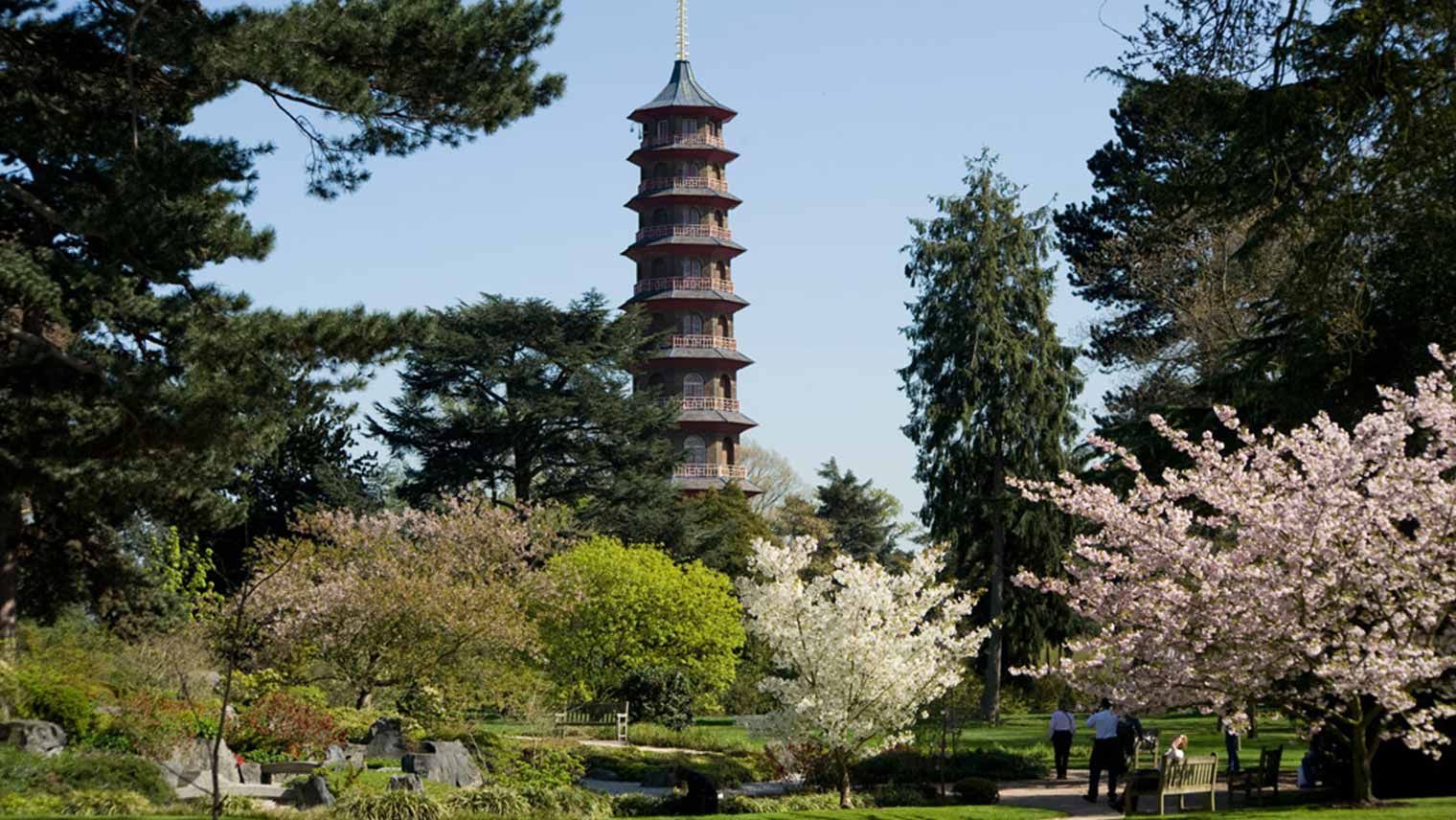
Houses and buildings
While many of the collections are found outdoors, others are found in Kew’s unique glasshouses. Temperate House might just be the most iconic – it's the world’s largest Victorian glasshouse and home to more than 10,000 plants. Palm House is another must-see, where you can discover tropical plants from the depths of the rainforest.
And don’t forget to visit Kew Palace – the smallest of Britain's royal palaces dating back to the 17th century.
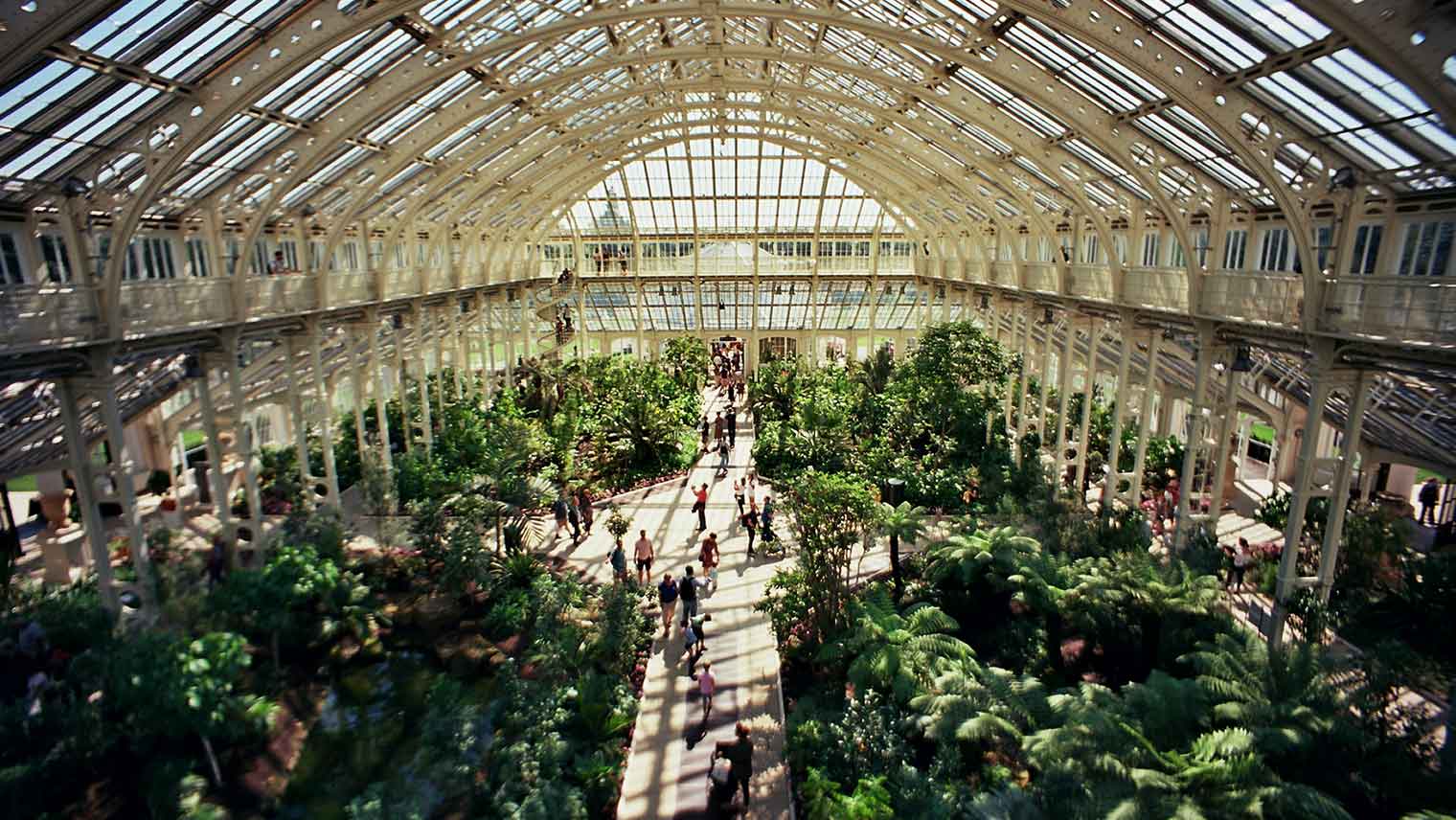
Kew Gardens is full of fun activities and experiences for all the family. Put on your walking shoes as there’s plenty of land to explore, including 37 acres of classic woodland in the Natural Area. And the possibilities aren’t only on ground level – you can enjoy magical views through the leafy canopy from the Treetop Walkway.
Galleries and libraries
Whether you’re on a group trip, a day out with the kids or simply want to brush up on your own knowledge, Kew’s collection of galleries and libraries is brimming with history and culture. Travel the world through the spectacular paintings at the Marianne North Gallery, then visit the Shirley Sherwood Gallery of Botanical Art – the world’s first public gallery dedicated to this topic.
Kew is well-known for its spectacular events , and Christmas at Kew is a particularly magical time of year, with incredible illuminations and light shows dazzling visitors on winter evenings. In summer, big names perform in spectacular surroundings at Kew the Music, and throughout the year there are exhibitions, courses, tours and more!
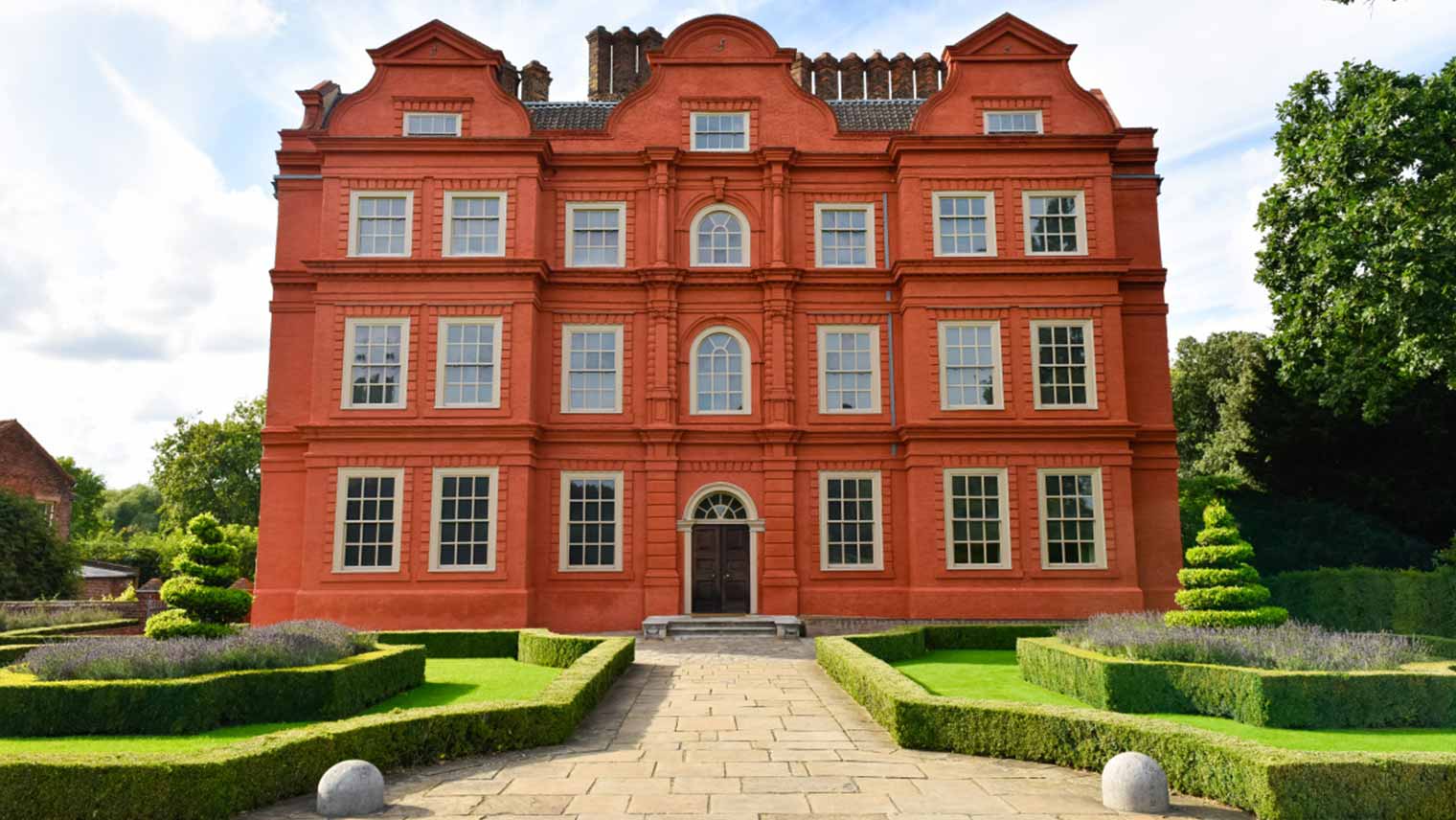
Food, drink, and shops
Kew gardens restaurants.
There’s a wide variety of options for eating and drinking at Kew Gardens. Grab a quick bite to eat at the Victoria Gate Café or the Orangery, or head to White Peaks for the most family-friendly options. Dine al fresco at the Pavilion Bar & Grill, or for something a little fancier, try an afternoon tea at The Botanical.
Kew Gardens shops
Whether you want to treat yourself to some homeware, stock up on stationery or grab a gift, the shops at Kew are full of options. The Victoria Plaza Shop is the biggest of the bunch, while the White Peaks Shop is best for children. The Pavilion Shop has a range of popular gifts and books, and the Galleries Gift Shop is the go-to for prints to remind you of your day out. And if you don’t make it to one of the gift shops, you can visit the online shop when you’re back home.
Places to stay in Kew Gardens
There are plenty of B&Bs and hotels near Kew Gardens to choose from depending on your trip type and budget.
Luxury stay
If you’re planning a romantic weekend away or celebrating a special occasion, consider a stay at the Kew Gardens Hotel, only 10 minutes’ walk from the Gardens.
Bed and breakfast
Whether you’re planning a half term activity for the kids or you’re having a day out in London, why not make a weekend of it with a stay in the boutique Kew Gardens BandB, just a stone’s throw away from the Victoria Gate entrance.
Budget-friendly
There are also lots of options that won’t break the bank. For the best prices, book a night at the Kew Rooms bed and breakfast, or why not try the Kew Gardens & National Archives homestay?
Kew Gardens tickets
There are different ticket prices for adults, young adults, children, students, families, and concessions. If you’re an NHS worker, an essential carer, or you’re a registered blind or partially sighted visitor, you can enter free of charge.And don’t forget to check out SWR Rewards hub for exclusive discounts on dining deals, theatre tickets, hotel stays, days out and much more

Engineering works will affect your journey
You need to enable JavaScript in your browser to see Live train arrivals and departures through this website� (and also instructions on how to enable JavaScript)

COMMENTS
Plants. Our incredible living plant collections are among the largest and most diverse in the world. Plants at Kew Gardens. We have a few dos and don'ts in place to keep everyone happy. Please also check our planned closures before your visit to avoid disappointment. Look out for our reusable cup scheme at Victoria Plaza Café - through this ...
Kew Gardens opening times. In peak season Kew is open from Monday to Friday, 10am to 7pm (last entry 6pm) and Saturday, Sundays & Bank Holidays, 10am to 8pm (last entry 7pm). There is early entry available for members. Times change during the year and the garden closes around 4pm in the winter.
Take the District Line towards Richmond. Approx. Travel Times: 15 minutes from Earl's Court and 30 minutes from Westminster on the District Line to Kew Gardens Station (Zone 3). Top Tip: If steps are a problem for you, for example, if you are traveling with a child in a buggy, go to Richmond station (it's only one more stop) and come back on ...
When is the best time to visit Kew Gardens. Kew Gardens is open every day from 10am until 6pm (from the end of March until the end of October). For the rest of the closing times (due to the shorter days), you can check the schedule here. Kew Gardens is great to visit in any season, including in winter, when they have some amazing light shows.
This architectural marvel houses a variety of alpine flora meticulously pruned and cared for. Kew Gardens Tips to Explore Like a Pro. Kew Gardens tips to visit like a pro involves more than knowing where to go and what to expect. It requires you to be extra savvy when packing for the day! 1. Prepare for the Weather.
The nearest stations are Kew Bridge, Kew Gardens and Richmond. There are a variety of cafes and restaurants at Kew Gardens, each serving up delicious grub using seasonal and local produce. Kew Gardens is open daily from 10am - 5pm (last entry at 4pm). Ticket prices start from £4 per child and £12 per adult.
KEW GARDENS ULTIMATE GUIDE. Open: Everyday: 10:00AM to 4:15PM. Time Needed: 3 hours. Price: £15. Don't let the word "gardens" fool you, because Kew's Royal Botanical Gardens are more than just collections of pretty flowers to snap photos of. As a matter of fact, the Kew Gardens are actually a living, breathing collection of some of the ...
With its Victorian glasshouses, arboretum, and artwork, there is a lot to see. Here are eight of the garden's attractions that no visitor should miss. Jeff Eden / RBG Kew. 1. The Great Pagoda. The Great Pagoda was completed in 1762 as a gift for Princess Augusta, who founded Kew Gardens.
A visit to Kew Gardens is the perfect getaway from London, offering a tranquil setting in a botanical paradise. This top tourist attraction outside the city also happens to be a UNESCO World Heritage Site, and is one of the largest botanical gardens in the world. That's why we've created this day trip guide to help you make the most out of ...
Amidst the vibrant mosaic of NYC neighborhoods, there lies a tranquil sanctuary known as Kew Gardens. This quaint locale, tucked away in the heart of Queens, beckons those yearning for an escape from the frenetic energy of city life. With its lush landscapes and community-centric aura, Kew Gardens offers a refreshing blend of suburban peace and ...
Kew Gardens, located just a short subway ride from central London, is the world's largest collection of living plants in the world.. Founded in 1840, the garden hosts over a million visitors annually.. We have visited twice and thoroughly enjoyed both visits. Below we'll cover the main topics to make your visit delightful.
Founding and Development. Kew Gardens was established in the 18th century against a backdrop of plant exploration and scientific discovery. In 1759, Princess Augusta initiated the creation of the original nine-acre botanic garden, setting in motion the foundation that would become the Royal Botanic Gardens, Kew. Sir Joseph Banks joined Captain James Cook's exploration of the South Seas from ...
Best time to visit the Kew Gardens Spring (April to May) is when the garden start showing signs of new blooms and starts displaying its eye-catching flora collections.Summer (June to August) is the time when the flowers and deciduous trees are in its best form.. Autumn, though not the best season to see the flowers, the crowds are lesser, and you get to experience the changing seasons.
I hope we'll see lots of spring flowers during our May 4-22 trip to England. We've yet to decide on our focus outside of the London area (will have some questions in another thread) but I do want to spend time at Kew Gardens. I also want to visit Richmond (I grew up in Richmond, BC, Canada--and...
Visit Royal Botanic Gardens, Kew. My fascination with plants is a result of watching countless documentaries by David Attenborough. The Kingdom of Plants is, in fact, my very favourite, a series of films created here, in the UK, at the Royal Botanic Gardens of Kew.. The Royal Botanic Gardens of Kew is a wonderful space for plant lovers who wish to spend their day meandering around one of the ...
After a major restoration, you can now climb to the top of the Great Pagoda (ages five and above only). It's 253 steps with an extra charge - £4.50 for adults, £3 for kids and there's a 30-minute timeslot for the tickets. Friends of Kew get a 10% discount, and Historic Royal Palaces members can enter free (and get a 10% discount on Kew ...
Kew Gardens covers 330 acres and is a UNESCO World Heritage site. Kew Gardens offers a range of attractions and activities that cater to visitors of all ages. Some of the must-see attractions at ...
The tree, an Eastern Cape giant cycad, is kept in the Palm House at the Royal Botanic Gardens of Kew—an enormous, Victorian glass greenhouse and steamy Noah's Ark for endangered species. The ...
gallery, you can see 833 of her paintings displayed in geographical order, which she chose to display after travelling around the world. Palm House. Built in the 1840s, the Palm House was the first of Kew Gardens' glasshouses. It allowed plants from the tropical regions of the world to be housed in their natural growing conditions.
Travelling from London. Kew Gardens is just 30 minutes by train from central London. You can get a South Western Railway train from London Waterloo to Kew Bridge, but for the fastest train from London to Kew Gardens, hop on at Clapham Junction. Alternatively, you can take the District line (Richmond branch) or the London Overground to the aptly ...